
May/June 2022 • Vol. 91 • No. 3 Supporting Your Success 50 Years of Title IX In this issue: Thoughts on the Americans with Disabilities Act Navigating Same-Sex Parentage Cases
I love LawPay! I’m not sure why I waited so long to get it set up.
Trusted by 50,000 law firms, LawPay is a simple, secure solution that allows you to easily accept credit and eCheck payments online, in person, or through your favorite practice management tools.
Vetted and approved by all 50 state bars, 70+ local and specialty bars, the ABA, and the ALA
62% of bills sent online are paid in 24 hours








New Case Reference **** **** ****
*** Trust Payment
YOUR FIRM L OGO HERE PAY AT TO RNEY PO WE R ED BY
Get started at lawpay.com/ksbar 888-281-8915 TOTAL: $1,500.00
9995
IOLTA Deposit
22% increase in cash flow with online payments
Data based on an average of firm accounts receivables increases using online billing solutions. LawPay is a registered agent of Wells Fargo Bank N.A., Concord, CA, Synovus Bank, Columbus, GA., and Fifth Third Bank, N.A., Cincinnati, OH.
Law
+ Member Benefit
–
Firm in Ohio
Provider



4 The Journal of the Kansas Bar Association FEATURES 18 Thoughts on the ADA as City of Cleburne Nears Forty By Scott Geroux 30 50 Years of Title IX: So Much More Than Sports By Ashley Rohleder-Webb 42 Navigating Same-Sex Parentage Cases By Valerie Moore 8 From the Kansas Bar Association President 10 From the Executive Director 12 Law Practice Management Tips & Tricks 14 Substance & Style 16 Law Students' Corner –University of Kansas School of Law 17 Animal Law Update 20 Kansas Mock Trial DEPARTMENTS 22 From the Disciplinary Administrator 26 From the KBA Media-Bar Committee 50 Members in the News 50 Classified Advertisements 51 Obituaries 52 Appellate Decisions 61 Appellate Practice Reminders 62 Advertisers Index contents
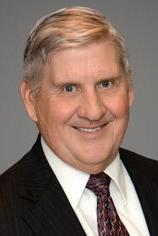
Jay Daugherty Mediation & Arbitration is pleased to announce that Bruce Keplinger, long recognized as one of Kansas and Missouri’s most outstanding civil trial lawyers, will be one of its mediators effective June 1, 2022. Mr. Keplinger has over 40 years of rich litigation experience and has first-chaired over 150 jury trials. He has also served as a civil mediator in numerous disputes as well as an arbitrator for the NASD and FINRA.
Bruce Keplinger is a Fellow of the American College of Trial Lawyers and is past president of the Kansas Association of Defense Counsel. He is rated as AV Pre-eminent by Martindale Hubbell and has been listed in Best Lawyers in America for over 25 years. Bruce was born and raised in Kansas, receiving his undergraduate degree from the University of Kansas and his law degree from SMU, and has spent his entire legal career practicing in Kansas and the KC metro area working primarily with the Kansas law firms Payne and Jones and for the last 20 years with the Overland Park firm Norris and Keplinger. He is admitted to all state and federal trial and appellate courts in Kansas and Missouri and was admitted to the United States Supreme Court in 1989. During his long career handling complex medical and legal issues, Bruce Keplinger has always focused on resolving disputes as swiftly and inexpensively as possible, viewing the trials that he has done as the last resort. As he enters the full-time practice of mediation and arbitration at Jay Daugherty Mediation & Arbitration, he looks forward to using his litigation and mediation training and skill to help resolve disputes across Kansas and in the Kansas City metro area.
“Our mediation goals extend beyond merely achieving a resolution of the case. Disputes are also about emotion. Mediation results should please clients and clients should leave the mediation with an enhanced regard for their attorneys.”
J ay D augherty & B ruce K eplinger
JAY DAUGHERTY MEDIATION & ARBITRATION
FOR MORE INFORMATION OR TO SCHEDULE ONLINE, PLEASE VISIT OUR WEBSITE AT: WWW.JAYDAUGHERTYMEDIATION.COM 4717 GRAND AVENUE SUITE 830 KANSAS CITY, MISSOURI 64112 816.931.6300 TEL
J ay D augherty M e D iation
JUDICIAL NEUTRALITY | RELENTLESS PASSION
B ruce K eplinger to J oin
& a r B itration
2021-22 Journal Board of Editors
Professor Emily Grant (Topeka), chair, emily.grant@washburn.edu
Sarah G. Briley (Wichita), sbriley@morrislaing.com
Richard L. Budden (Kansas City), rbudden@sjblaw.com
Kate Duncan Butler (Lawrence), kbutler@barberemerson.com
Boyd A. Byers (Wichita), bbyers@foulston.com
Lindsey Freihoff (Lenexa), lfreihoff@hinklaw.com
Connie S. Hamilton (Manhattan), jcham999@gmail.com
James Hampton (Topeka), jamesrichardhampton@gmail.com
Lauren G. Hughes (McPherson), lhughes@bwisecounsel.com
Michael T. Jilka (Lawrence), mjilka@jilkalaw.com
Lisa R. Jones (Ft. Myers, FL), ljones@fgcu.edu
Joslyn Kusiak (Independence), jkusiak@kellykusiaklaw.com
Casey R. Law (McPherson), claw@bwisecounsel.com
Deana Mead, Staff Liaison, dmead@ksbar.org
Professor John C. Peck (Lawrence), jpeck@ku.edu
Karen Renwick (Kansas City), krenwick@wrrsvlaw.com
Teresa M. Schreffler (Wichita), co-chair, tschreffler@gmail.com
Richard H. Seaton Sr. (Manhattan), seatonlaw@sbcglobal.net
Michael Sichter (Kansas City), msichter@wrrsvlaw.com
Richard D. Smith (Topeka), rich.smith@ag.ks.gov
Nicholas Trammell (Topeka), nicnassuet@gmail.com
Hon. Sarah E. Warner (Lenexa), warners@kscourts.org
Issaku Yamaashi (Overland Park), iyamaashi@foulston.com
The Journal Board of Editors is responsible for the selection and editing of all substantive legal articles that appear in The Journal of the Kansas Bar Association. The board reviews all article submissions during its bimonthly meetings (January, March, May, July, September, November). If an attorney would like to submit an article for consideration, please send a draft or outline to editor@ksbar.org.
2021-22 KBA Officers & Board of Governors
President
Cheryl Whelan, cwhelan@ksbar.org
President-Elect
Nancy Morales Gonzalez, nancygonzalezKBA@gmail.com
Vice President
Laura Ice, lauraice@textronfinancial.com
Secretary-Treasurer
Mark A. Dupree Sr., mdupree@wycokck.org
Immediate Past President
Charles E. Branson, cbranson@ksbar.org
Young Lawyers Section President
Rick K. Davis, rick@rickdavisrealestate.com
Immediate Past President
Katherine E. Marples Simpson, ksimspon@stevensbrand.com
District 1
Michael J. Fleming, mike@kapkewillerth.com
Katie A. McClaflin, kmcclaflin@mkmlawkc.com
Katherine S. Clevenger, katherine@pcfamilylaw.com
District 2
Bethany J. Roberts, broberts@barberemerson.com
District 3
Angela M. Meyer, angela@angelameyerlaw.com
District 4
Robert J. Lane, roblane.dml@gmail.com
District 5
Vincent Cox, vcox@cavlem.com
Terri J. Pemberton, tpemberton@cox.net
District 6
Laurel A. Michel Driskell, laurelmichel@kenberk.com
District 7
William L. Townsley, III, wtownsley@fleeson.com
Megan S. Monsour, mmonsour@hinklaw.com
Sara Zafar, sarazafar08@gmail.com
District 8
Dell Marie Shanahan Swearer, dell@hutchcf.org
District 9
Aaron L. Kite, aaron@kitelawfirm.com
District 10
Gregory A. Schwartz, gaschwartz@schwartzparklaw.com
District 11
Candice A. Alcaraz, calcaraz@wycokck.org
District 12
Alexander P. Aguilera, alex.aguilera@leggett.com
Bruce A. Ney, bn7429@att.com
John M. Shoemaker, john.shoemaker@butlersnow.com
At-Large Governor
Amanda L. Stanley, amanda.stanleyjd@gmail.com
KDJA Representative
Hon. Daniel D. Creitz, dcreitz@31jd.org
ABA Board of Governors
Linda S. Parks, parks@hitefanning.com
KBA Delegate to ABA House
Natalie G. Haag, nhaag@capfed.com
Eric K. Rosenblad, rosenblade@klsinc.org
ABA State Delegate
Rachael K. Pirner, rkpirner@twgfirm.com
YL Delegate to ABA House
Joslyn Kusiak, jkusiak@kellykusiaklaw.com
KBF Representative
Jeffery L. Carmichael, jcarmichael@morrislaing.com
Executive Director of the KBA/KBF
Stacey Harden, sharden@ksbar.org
OUR MISSION
The Kansas Bar Association is dedicated to advancing the professionalism and legal skills of lawyers, providing services to its members, serving the community through advocacy of public policy issues, encouraging public understanding of the law, and promoting the effective administration of our system of justice.
6 The Journal of the Kansas Bar Association Published by Peterson Media Group, Topeka, KS, (785) 271-5801 The Journal of the Kansas Bar Association (ISSN 022-8486) Volume No. 91 Issue No. 3, is published bi-monthly by Kansas Bar Association, 1200 SW Harrison Street, Topeka, KS 66612. Periodicals postage paid at Topeka, KS and at additional mailing offices. POSTMASTER: Send address changes to: The Journal of the Kansas Bar Association, PO Box 751080, Topeka, KS 66675-1080. Phone: (785) 234-5696; Fax: (785) 234-3813. Member subscription is $25 a year, which is included in annual dues. Nonmember subscription rate is $45 a year. The Kansas Bar Association and the members of the Board of Editors assume no responsibility for any opinion or statement of fact in the substantive legal articles published in The Journal of the Kansas Bar Association. Copyright © 2022 Kansas Bar Association, Topeka, Kan. For display advertising information, contact Blake Peterson at (785) 271-5801 or email blake@petersonmg.com. For classified advertising information, call (785) 234-5696 or email editor@ksbar.org. Publication of advertisements is not to be deemed an endorsement of any product or service advertised unless otherwise indicated.

Kansans Need YOU
Become a Kansas Bar Foundation Fellow

You can become a Fellow online or through the mail. For more infor mation on the Fellows Giving Program, visit www.ksbar.org or contact Stacey Harden at sharden@ @ksbar.org.

The Kansas Bar Foundation:
increases access to legal services for underserved communities
helps promote access to justice for all Kansans
administers IOLTA funds benefitting organizations that provide civil legal services and the administration of justice to Kansans
supports law school student scholarships
provides education to the public on the law, including civics education
Already a Fellow? Thank you!
Please consider a higher level of giving.
Give back and lend a helping hand TODAY!

KBA’s Pillars of Professionalism and Ethical Obligations Face a New Working Environment
By Cheryl Whelan, KBA President 2021-2022
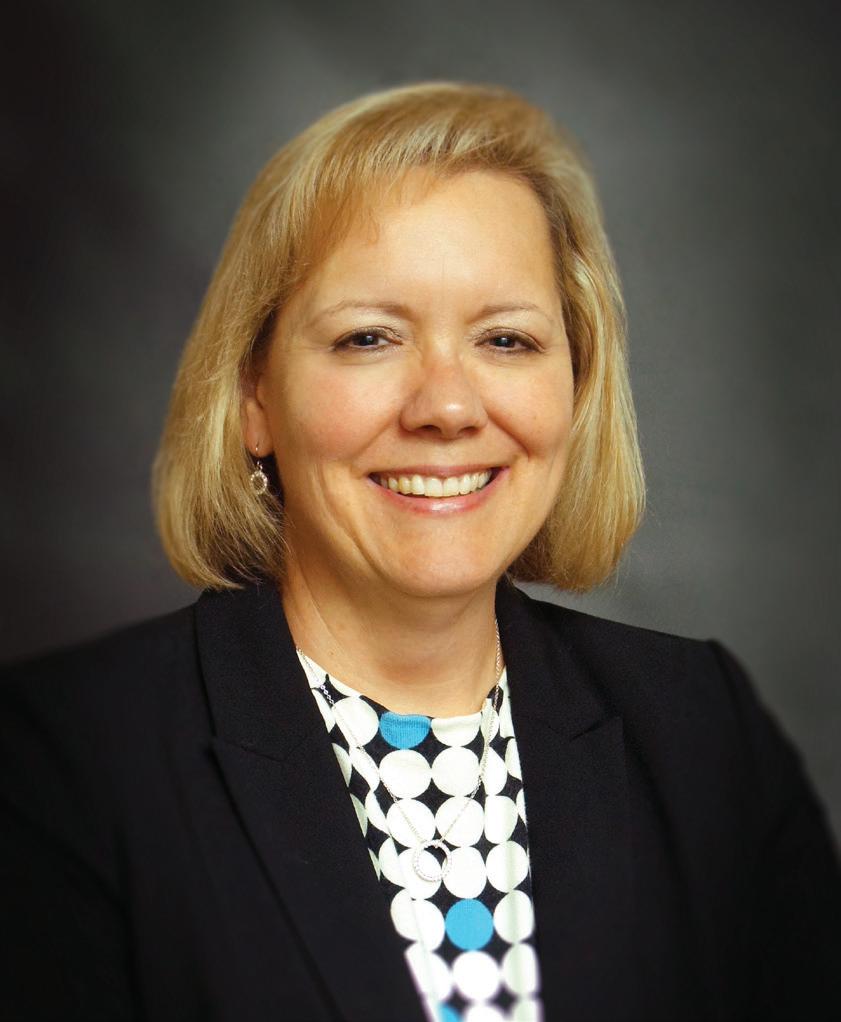
The Kansas Bar Association adopted the Pillars of Professionalism in 2012 and the Kansas Supreme Court and the Federal Courts of Kansas soon followed. In addition, to the ethical duties contained in the Kansas Rules of Professional Conduct, attorneys also have a duty of professionalism. Although the Pillars are aspirational instead of mandatory, the adoption of the Pillars by courts sends a strong signal regarding expectations of professionalism. We are members of an honorable profession. As the Pillars states, we “have a duty to perform [our] work professionally by behaving in a manner that reflects the best legal traditions, with civility, courtesy, and consideration.”
Although the Pillars focus on professionalism, the Pillars are, in many ways, tied to our ethical responsibilities. For example, Pillar VI requires us to “[b]e courteous, respectful, and considerate. If the opposing counsel or party behaves unprofessionally, do not reciprocate.” Pillar VII requires us to “[b]e prepared on substantive, procedural, and ethical issues involved in the representation.”
When the Pillars were developed and adopted 10 years ago, attorneys practiced in a much different environment than they do now. In the last 10 years, digital transformation occurred and continues to occur at what seems to be a faster pace. Using technology to increase efficiency in the practice of law raised ethical issues, such as cybersecurity, that as a profession we continue to address. But for the eight years after the Pillars were adopted, the increasing use of technology did not significantly change the interactions that we had or how we interacted. Our interactions with other attorneys, the courts and clients still occurred in person. We gathered in person for continuing legal education seminars and networked in person.
The pandemic changed all of that. Suddenly, for many industries including the practice of law, remote work became the norm. Attorneys started working virtually from home. Courts operated virtually as much as possible. In-person CLEs were cancelled and virtual CLEs became accepted and normal. A recent KBA membership survey found that most KBA members will only travel 60 miles to attend a CLE. I assume that is because of the convenience of remaining in the office and decreased travel time.
I recently talked with a friend who is a senior partner in a law firm. Our conversation was the genesis of this column because he talked about the firm’s difficult decision on remote work policies. Should work be 100% remote, 100% in the office or some sort of combination? Studies have shown that many employees prefer remote work. Although technology allows us to work remotely 100% of the time, remote work raises many concerns. The 2021 American Bar Association’s Profile of the Legal Profession found that “[a]lmost half of lawyers felt disengaged from their employer during the pandemic and overwhelmed by all they had to do. Again, this was especially true for women and lawyers of color.”
My concern about virtual work is the professional development of the newest members of our profession. My first attorney job was with the Kansas Court of Appeals where I served for five years as a research attorney and the motions attorney. The
8 The Journal of the Kansas Bar Association
from the kansas bar association president
experience of working with the judges who mentored me, and the other attorneys shaped my approach to the practice of law. The personal interactions, especially with the judges, educated me about substantive, procedural and ethical issues. The advantages of collaborating with the attorney in the next office or with a judge about a legal issue cannot be overstated. Even 30 years later, when I am unsure how to address a legal issue or want to talk through the legal analysis of an issue, I still walk down the hall and talk with other attorneys or law clerks. Our law clerks have been surprised by how helpful these conversations are. Several months ago, a law clerk and I had several lengthy conversations about a jurisdictional issue. He learned, I learned, and we figured it out. These spontaneous conversations, collaboration and mentoring cannot be easily duplicated in a remote work environment.
The American Bar Association addressed some of these issues in Formal Opinion 498 (issued March 10, 2021) which addresses the challenges associated with the virtual practice of law. The opinion focuses on the ABA Model Rules of Professional Conduct and the commonly implicated model rules including competence, diligence, communication and supervision. These ethical obligations are similar to our professional obligations as described in Pillar VII. How do supervisory attorneys supervise their subordinate attorneys in their professional and ethical obligations? What policies and procedures have been put in place to ensure that the work environment is consistent with our professional and ethical obligations? How do we assist the newer members of our profession with their professional development?
There are no easy answers to these questions, and I certainly do not have the answers. As we work together to figure this out, we must be aware that the desire to work remotely cannot overshadow our obligations to the newest members of our profession. Spontaneous conversations, collaboration and mentoring are just as important to our profession as they were pre-pandemic and are important in the role we play in our society. u
As the Pillars states, we “have a duty to perform [our] work professionally by behaving in a manner that reflects the best legal traditions, with civility, courtesy, and consideration.”
Cheryl Whelan is the President of the Kansas Bar Association. Whelan is the Director of the Kansas Office of Administrative Hearings. Before assuming that role, Whelan served as an Assistant Attorney General and the Director of Open Government Training and Compliance in the office of the Kansas Attorney General. She has many years of experience as an attorney with various governmental agencies including service in the Army Reserve Components. A long-time active member of the KBA, Whelan has served on the Executive Committee of the Board of Governors, the Commission on Professionalism, the Annual Meeting Planning Committee, the Board of Publishers, the Law Related Education Committee, the Media-Bar Committee, the Nominating Committee and the Public Information Committee.

www.ksbar.org | May/June 2022 9
Procrastination –New Achievement Unlocked!
By Stacey Harden, Executive Director, KBA/KBF
“I never put off till tomorrow what I can do the day after.” Oscar Wilde
Ispent more than a few days, or maybe even weeks, pondering what to write about in this issue. Well, sort of … it might be more accurate to say that I thought about writing my column, realized I had days left built into the schedule, and then decided a handful of days past the internal deadline (which is coincidentally on the day of the “drop dead” deadline) that I should probably start thinking about what to write. And it came to me – the fine art of procrastination.

But what exactly does procrastination mean? According to the Britannica Dictionary, procrastination is defined as “to be slow or late about doing something that should be done: to delay doing something until a later time because you do not want to do it, because you are lazy, etc.” Ouch. That sounds so … harsh.
I know what procrastination looks like for me – delaying something that can easily be done today, but the due date isn’t for two more weeks, so I work on something else or binge-watch three seasons of a program in one weekend or find anything else to do. I don’t delay to the point of missing hard deadlines, but I do blow past the soft deadlines with a speed like the Kansas wind in April. I rationalize this perfectly in my mind by convincing myself that I do all my best work when under pressure. Because, well, I have always been this way. Yet the hard deadlines in my life, primarily at home, are all coming due in May, and I am starting to feel the pressure. My youngest son graduates in two weeks (and nope – I don’t even have party decorations purchased yet); I am merging households with my soon-to-be husband and haven’t packed a single box; we have two kids coming home from college and, you guessed it, I have not made any arrangements about how to physically move them home or make space for them in a newly merged household. I have known about all of these things for months (some might point out it’s been years), and here I am, literally days away and yet, I am no closer to being prepared for these things than I was when the calendar flipped to 2022. Master Procrastination Achievement unlocked!
But enough about me and my procrastination – if you are a procrastinator, regardless of your level, and maybe you are looking at the June 30 CLE compliance deadline, the KBA is here for you. Check out our CLE offerings in June and the super easy and slick On-Demand All Access Pass. You can get all 12 of the required hours when it works best for you, over the course of a weekend, a week, or a month – whatever fits your procrastination achievement profile. No pressure, no judgment, just achievement! You do you! The KBA is here to help! Even if you are not a fellow procrastinator, please check out the KBA’s CLE offerings this summer. We have some stellar programs lined up that you may be able to roll over to the next year.
And if you have the time, check in on us master procrastinators. If you don’t get to it until the day after tomorrow, don’t worry –we get it! u
Stacey Harden joined the KBA in the fall of 2019 as the Accounting and Finance Manager before becoming Executive Director in August 2020. Harden attended Baker University where she earned a bachelor’s degree in business, with an emphasis in accounting, as well as a master’s degree in business administration.
sharden@ksbar.org
10 The Journal of the Kansas Bar Association
from the executive director

Where Does the Money Go?
Our designated charities for 2022 are:
CASA (Johnson/Wyandotte County)
Safehome and Hope House (domestic violence programs)
Metropolitan Organization to Counter Sexual Assault (MOCSA)
Kansas Bar Foundation
FosterAdopt Connect
In addition, we will fund Ethics for Good scholarships to each of the KU, Washburn and UMKC law schools and the Johnson County Community College paralegal program.
Stan Davis: Ethics for Good Elder Statesman


How Do We Sign Up for this Amazing, Funny, and Informative Program?
For a mere $90, you get both the ethics and the good, the entire Ethics for Good - now in its 23rd year!
6/22/2022 VIRTUAL - Register online at:
www.ksbar.org/event/EthicsforGood23
6/24/2022 IN-PERSON - Pre-paid registration required online at: www.ksbar.org/event/EthicsforGood23ip Who Are These Intrepid Performers?
Jim Griffin: Scharnhorst Ast Kennard Griffin, P.C.
Mark Hinderks: Stinson LLP
Todd LaSala: Stinson LLP
Steve Leben: University of Missouri - Kansas City
Hon. Jacy Hurst: Kansas Court of Appeals
Todd Ruskamp: Shook, Hardy & Bacon L.L.P.
Hon. Melissa Standridge: Kansas Supreme Court Ethics

CLE meets humor for good!
Pending 2.0 ethics hours in Kansas & Missouri
Questions?
Deana Mead KBA Associate Executive Director 785-861-8839 dmead@ksbar.org WATCH, LEARN, AND LAUG H FROM THE COMFORT O F YOUR FAVORITE CHAIR ! W EDNE S DA Y JU NE 22N D 11 A. M.– 12:40 P. M. TWO GREAT SHOWING OPTIONS! JOIN US AT JOHNSON COUNT Y COMMUNITY COLLEGE FOR A LIVE PERFORMANCE ! FR IDA Y JU NE 24 T H 2–3:40 P. M. VIRTUAL & IN-PERSON
IN-PERSON - Pre-paid registration required online at: www.ksbar.org/event/EthicsforGood23ip
Contact:
6/24/2022
- Register
www.ksbar.org/event/EthicsforGood23
6/22/2022 VIRTUAL
online at:
JCCC Foundation hosted reception
Understanding Our Judiciary’s Privacy in the Digital World
By Larry N. Zimmerman
Privacy in the Digital Age
KRPC 1.1, Comment 8 “To maintain the requisite knowledge and skill, a lawyer should keep abreast of changes in the law and its practice, including the benefits and risks associated with relevant technology ….”
Monitoring relevant technology can require lawyers to be aware of a constant barrage of new information. Worrisome trends and legal issues can pop up in a variety of places –including salacious and titillating judicial conduct cases. In particular, Kansas lawyers should acquaint themselves with the opinion and oral arguments from In the Matter of Marty K. Clark, No. 123,911 (January, 2022).
Case Overview: Clark
Clark was a non-lawyer district magistrate judge of the 20th Judicial District. He and his wife were subscribers to a website described as “an online community for swingers.” Clark exchanged sexually explicit images and messages with another subscriber couple using the site’s private messaging. Clark never met the couple in person to consummate a physical relationship but the husband of the couple apparently grew dissatisfied with the attention to his wife and complained to the Kansas Commission on Judicial Conduct.
Stipulated Facts – Private Communications
Clark ultimately resigns, raises no exceptions to the Panel’s findings, and the whole case just stumbles into a public censure. Along the way, however, a hugely interesting and deeply disturbing discussion of internet privacy arises. The case does not resolve those issues but sounds a giant klaxon for lawyers who need to understand what the ethics system may not.
Two stipulated facts to the Panel:
• “The photographs included in Exhibit B were not available to be viewed by all [website] subscribers and were not available to the general public.”
• “[Clark] had to designate who had permission to access and view the photos.”
These stipulated facts establish that the website was private
requiring a subscription to access, not accessible to the general public, and Clark had to affirmatively designate which fellow subscribers could view his photos. Those facts describe something quite different than wide-open, generally viewable posts on social media like Twitter, Instagram, or even a law firm’s blog. In fact, the site described is not all that different from how a law firm’s client portal or a cloud-based case management system might work.
All Private Communications are Public?
The Panel significantly alters those stipulated facts in its Findings of Fact accepted by the Kansas Supreme Court. Finding 6 says, “The parties stipulated that the sexually revealing photographs were not available to be viewed by any [website] subscriber without permission from [Clark]. He also claims the photographs were not available to the general public. However, as with any social media posting, the photographs could be disseminated to the general public once they are released [emphasis added].”
The Hearing Panel explains later in its decision, “When [Clark] opened the door by releasing the photos to even one person [emphasis added] on this social media website, those photos could be generally disseminated to the social media world….”
This is a rather dramatic reinterpretation of social media. Justice Stegall engaged the Panel’s point at oral argument saying, “I’m wondering if that’s even right as a matter of law because that standard suggests that there’s no such thing as privacy at all in any two-way communication. So every email I’ve ever sent, every text message I’ve ever sent is now public. I don’t know how we escape that conclusion from the Panel’s conclusion.”
He continued, “What if I just say, ‘I’ll meet you for lunch at 12 PM…’ and I send that to whomever in a private text or email. According to the Panel’s findings, that email is public, right?”
The Examiner, Todd Thompson, responded less concerned about the policy precedent he was seeking than the graphically sexual nature of the images involved in the
12 The Journal of the Kansas Bar Association law practice management tips & tricks
messages to which Justice Stegall replied, “It seems to me content of the communication cannot play a role in deciding if it’s private or public.”
The questioning from Justices Standridge and Biles at oral argument seemed to hint at some fundamental foreseeability in communicating via “social media” no matter the efforts taken to limit the recipient. The mere fact that you are communicating on social media is enough to trigger the feasibility that your communications might be shared. Again, however, the discussion of social media by both justices appeared to analogize to something open to the public like Twitter or Instagram. Neither seemed to distinguish between such public sites and a closed, subscription-based, private website. Is a law firm’s client portal on MyCase or Clio a social media site? Are private communications there between lawyer and client public because any post on social media may be foreseeably captured and made public?
A Problematic Case
On one hand, Clark is not a very significant case. The judge had retired before discipline, is not a lawyer and has not expressed an intent to run for his judicial seat again. Further, he took no exception to the quite exceptional Hearing Panel
report so vital issues were abandoned. Some would even argue that a judicial discipline case is irrelevant to lawyers.
However, Clark does provide a rather informative view into our judiciary’s understanding of privacy in the digital world. We do not know exactly what a “social media site” might actually be but we are on notice that the interpretation of that phrase might be exceptionally broad and protections for privacy and confidentiality under that broad umbrella might be scant. u

Larry N. Zimmerman is a partner at Zimmerman & Zimmerman P.A. in Topeka and former adjunct professor, teaching law and technology at Washburn University School of Law. He is one of the founding members of the KBA Law Practice Management Committee.
kslpm@larryzimmerman.com

www.ksbar.org | May/June 2022 13
Attend the #1 conference for attorneys October 10-11, 2022 Nashville, TN Learn more at cliocloudconference.com
Legal Writing Criticism, Roadblocks and Motivations
By Emily Grant
Are Lawyers Bad Writers?
I hope when you read this column title, you instinctively – and indignantly –responded, “no, we’re not!” Good for you. That was a test.
Though… and I hate to be the one to say it… perhaps there’s a reason many bar association journals, including this one, have a column devoted to good legal writing.1 There is a perception, both inside and outside the profession, that lawyers are terrible writers.2 And the complaint is not entirely new.3
Despite the age-old criticisms of lawyerly communication, the profession finds itself at a bit of a crossroads today in terms of identity and expectations for our writing. Today’s senior partners developed their communications style at a time when even intraoffice memos were drafted by hand or dictation, typed by someone else, proofread and then handdelivered.4 Now, that same message is transmitted in seconds via email, or heaven forbid text. So lawyers are operating in a profession that has almost anachronistic standards of formality and precision, but in a time when people expect a constant flow of communications.

last 200 years (not counting the English cases that pre-date our American legal system). Many of those opinions are dense and filled with archaic language. They’re difficult to read and even harder to understand. And after marinating in that writing for three years, it is not surprising that many lawyers-to-be begin to mirror that style such that the “traditional” legal writing found in casebooks becomes normalized and carried into practice.
The Lure of Legalese
While we might quibble with the motivations behind some of the criticism of our writing prowess, we have to admit that for a profession that makes its living with words, lawyers sometimes neglect to consider how or why their writing might be improved.
But it’s not because we’re lazy or bad at our jobs. We’ve come by our less-than-optimal writing skills honestly. And frankly, it likely started in law school (yes, I’m looking at myself and my colleagues in the legal academy).
Traditional Training
Law students almost exclusively read case opinions from the
Lawyers also often resort to legalese – stereotypical outdated “lawyer-sounding” words like herein and wherewith and party of the first part. My first semester teaching, I was explaining to my class why they should avoid legalese, and one student said “I came to law school to sound smart, and now you’re telling me I don’t get to use those words?”
Legalese can (sort of) have that effect, and it’s tempting to hide behind it out of professional insecurity.5 But it makes writing more difficult to parse. I do acknowledge that the law is complex and sometimes law-specific words (jargon, if you will) are necessary. But writing can (and should) still be readable and understandable, even when discussing difficult or abstract concepts.
14 The Journal of the Kansas Bar Association substance & style
Audience Assumptions
Another reason legal writing can suffer is that lawyers sometimes write as though everyone else is an attorney. Sometimes the audience of your writing will be. But sometimes not. And even if the reader is a lawyer, they may not know what you know about a specific topic. The curse of expertise may cause lawyers to write as if everyone shares the same background knowledge and information.6 If they don’t, the writing will be difficult to absorb.
Persnickety Precision
Sometimes attorneys have to write for precision and, in so doing, may sacrifice readability. If there’s a chance a document will be negotiated or heavily scrutinized later, it makes sense that a writer will spend more time being precise and thorough, writing everything two (2) times, rather than focusing on being concise.7
Template Tracking
The use of document templates or forms, while necessary to efficient law practice, may perpetuate some bad writing habits. Once a merger agreement or standard of review paragraph or 12(b)(6) motion has been created (and successfully used), the incentives to rework the writing to make it sound better are low.8
Goofs from the Grind
Finally, sometimes we write poorly or carelessly because we are busy. We are overworked, with a six-minute billing clock running and a to-do list growing by the hour. Clients and supervising attorneys may expect instantaneous updates and responses. And so it is easy to stop caring about accessible, concise writing and instead just focus on getting the words on the page and the document delivered.
All of these factors may influence the overall impression of writing in our profession (and the copious “lawyers are bad
writers” jokes that permeate the internet). They’re certainly all understandable. And overcomable. u
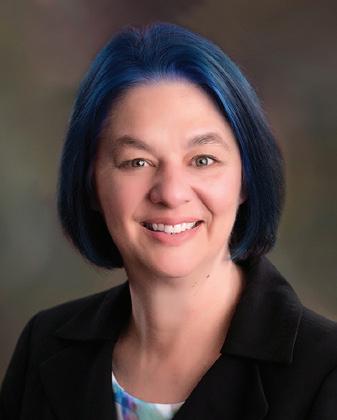
References
Emily Grant has chosen a career path designed to help soon-to-be attorneys improve their legal writing skills. She teaches at Washburn University School of Law, and she can be reached at emily. grant@washburn.edu.
1. To be fair, I assume many other professional journals have similar columns; lawyers have not cornered the market on inaccessible writing.
2. See, e.g., Bryan A. Garner, Why lawyers can’t write, ABA J., Mar. 1, 2013; Jonathan D. Glater, A Bad Writer? Or Just a Lawyer?, N.Y. Times, Oct. 16, 2005.
3. Steven Start, Why Lawyers Can’t Write, 96 Harv. L. Rev. 1389 (1984).
4. Within living memory, the workday began when the office mail arrived at 9:00 or 10:00 a.m. One would spend an hour or so catching up on correspondence, have a smoke break, respond to a few messages, and then go out for a civilized lunch with colleagues. We used to be a proper country.
5. Yuriy Moshes, Bad Legal Writing Explained and Tips for Legal Writing, https://mosheslaw.com/bad-legal-writing-explainedand-tips-for-legal-writing/
6. Erica Toews, Is the practice of law turning us into bad writers?, https://www.toewslegal.com/blog/2018/12/2/is-the-practice-oflaw-turning-us-into-bad-writers
7. Richard James, Common Terrible Writing Habits Many Lawyers Develop–and How to Fix Them, https://therichardjames.com/ common-terrible-writing-habits-many-lawyers-develop-andhow-to-fix-them/
8. For an analysis of the risks of overreliance on transactional forms, for example, see William E. Foster & Andrew L. Lawson, When to Praise the Machine: The Promise and Perils of Automated Transactional Drafting, 69 S.C. L. Rev. 597 (2018).

www.ksbar.org | May/June 2022 15
KLH CONSULTING 316 26 5 58 00 Services include: • Oil and Gas Valuation and Appraisal • Estate Valuations • Royalty interest • Acquisitions • Economic Analysis www.klhoilandgasconsulting.com Licensed Petroleum Engineer
A Reluctant Lawyer
By James T. Schmidt Jr.
Unlike many who have dreamt of becoming a lawyer their whole life, I never desired to do so. It was not until a year or so into what I thought would be my career that I had that realization. In fact, I tried to do just about anything I could do to avoid law school, yet after years of avoiding law school, it became inevitable. I first considered going to law school during my junior year of college. I ordered an LSAT prep book and never opened it. I could not bear the thought of spending three more years in school without making money and beginning my life.
I have had an interest in politics and government since high school. In pursuit of those interests, I interned for Senator Jerry Moran and the Kansas House of Representatives while at Kansas State University. After graduation, I worked as a legislative staffer for Senator Jerry Moran in Washington, D.C. In that role, I advised Senator Moran on issues related to the Department of Justice, judicial nominations and other areas and corresponded with constituents on those issues.
After spending about a year in D.C., I realized I did not want to spend the rest of my career on Capitol Hill, and I began to consider ways to expand my marketability to employers. I considered attending night classes to get an MBA or a master’s in public policy. I did not want to go to law school because I knew it would be hard, and if I were to do it, I would do it full time, and I did not want to leave my job.
My direct superiors throughout my time in Senator Moran’s office were lawyers. I grew to respect their intelligence and unique way of looking at issues. I especially appreciated how any time I felt I had an issue figured out, they would offer up something that I had not considered. Through their mentorship, I fully bought into going to law school. The decision to go to KU Law was an easy one for me. As a
My decision to go to law school has paid off in more ways than I can count, and I thank all those who helped guide me here.
K-State undergrad, most of my friends resided in the area, and Senator Moran is a KU Law alumnus himself. Although, I still solely root for the Wildcats in sports.
Although I was leaving Washington, I knew I had a desire to continue pursuing my interest in politics and public policy. To that end, I have taken a handful of policy-related classes during law school. One such class was “Legislative Simulation and Study.” This class is a semester-long simulation of the Kansas Senate, where each student is assigned a legislator profile and must work for the benefit of their constituents. I was assigned the profile of a legislator who could not have been further apart from my actual political beliefs. I ran for and won the Senate Majority Leader position for the class; therefore, I was in charge of pushing forward our party’s agenda, an agenda this is typically contrary to my actual beliefs. It is in these sorts of roles where our minds expand the most.
I was selected my 2L year to be a Staff Editor for the Kansas Journal of Law and Public Policy and Managing Editor as a 3L. My time with the Journal further allowed me to see diverse viewpoints. Being a public policy journal, we publish the viewpoints of a wide array of scholars, providing even more variation of thought to the legal community. As lawyers, many of us will lead the next generation, and it is ever important in this divided world to know and understand opposing viewpoints. KU Law has provided many opportunities for me to do this. In doing so, I do not doubt that I will be a leader and lawyer fit for the future. As President James Monroe said, “it is by a thorough knowledge of the whole subject that [people] are enabled to judge correctly of the past and to give a proper direction to the future.” My decision to go to law school has paid off in more ways than I can count, and I thank all those who helped guide me here. u

James Schmidt is a 3L at the University of Kansas School of Law from Houston, Texas. He received a Bachelor of Science in Journalism and Mass Communications from Kansas State University. He currently serves as Managing Editor of the Kansas Journal of Law and Public Policy and as a student ambassador.
16 The Journal of the Kansas Bar Association law students' corner – university of kansas school of law
State of Breed Specific Legislation in Kansas: An Update
By Katie Bray Barnett
Since publication of the January/February 2022 Kansas Bar Journal issue highlighting animal law, a handful of Kansas cities have reexamined their ordinances banning dogs by breed or appearance. In late 2021, the City of Overland Park repealed its 33-year-old ordinance banning “pit bull” looking dogs. After over a year of discussion with a panel of subject matter experts, input from its animal control officers, a public survey and discussion at multiple public safety committee meetings, city council unanimously voted to move away from the breed-specific language in a desire to approach dog behavior uniformly and target the cause of dangerous dog behavior.1 Then in January 2022, a criminal case on appeal from municipal court successfully challenged the constitutionality of the City of Leawood’s pit bull ban in Johnson County District Court. Dog owner Kristi Bond’s attorneys presented the testimony of several highly qualified experts, including a certified animal behaviorist, a veterinarian with experience in shelter medicine and purpose-bred canine genetics and a former Kansas Public Health Veterinarian, who each testified: (1. No one, not even experts, can reliably determine a dog’s breed by its appearance, (2. No breed of dog is inherently aggressive or dangerous, and (3. Breed-specific ordinances do not promote the safety and welfare of the public. Ultimately, the Court found the “dangerous animal” definition was unconstitutionally vague on its face, and as it was applied to the dog in the case, Lucy. This violated Ms. Bond’s 14th Amendment Procedural Due Process right because the Leawood ordinance had no objective standards to prevent arbitrary and discriminatory enforcement. The Court also noted that Leawood is one of the few remaining major cities in the Kansas City area with a pit bull ban, highlighting an overwhelming number of cities had repealed similar breedspecific language.2 The City of Leawood has since revised its ordinance in an attempt to cure the constitutional defect, but still bans “any dog having the appearance and characteristics of being predominantly of the breeds known as Staffordshire Bull Terrier, American Staffordshire Terrier, or American Pit Bull Terrier.”3 The cities of Abilene and Parsons have also repealed their pit bull bans in 2022.4 u

Katie Bray Barnett graduated from Missouri State University and received her Juris Doctor from the University of Kansas School of Law. She was awarded the Walter Hiersteiner Outstanding Service Award by the law school faculty, which is given to the student whose service to her fellow students, university, and community demonstrates the greatest promise for contribution to the legal profession and to society. Katie is the Founder of the KU Student Animal Legal Defense Fund, Founded the Animal Cruelty Prosecution Clinic and worked as a legislative attorney for Best Friends Animal Society before opening her own law practice. Katie’s legal practice consists of animal law, municipal law, law enforcement training on animals and legislative action. Barnett Law Office is the only practice in the state dedicated to animal issues. Katie is a vice-chair of the Animal Law Committee of the American Bar Association and has authored two American Bar Association Resolutions focusing on animal law. She has authored several journals and law review articles on animal law and assisted in drafting the International Municipal Lawyers Association’s dangerous dog model ordinance. Katie lives in Lawrence, Kansas, with her husband, two daughters and a house full of dogs.
References
1. City of Overland Park Public Safety Committee Minutes, September 9, 2022 (citing the desire to approach dog behavior uniformly and target the cause of dangerous dog behavior).
2. City of Leawood v. Bond, No. 20-CR-2516, Order Granting Defendant’s Motion to Dismiss (2022).
3. Leawood, KS, City Code § 2-102(k).
4. https://www.parsonssun.com/news/article_61cb4ece-468b11ec-bd66-2fccc8037818.html; http://www.abilene-rc. com/news/abilene-city-commissioners-vote-to-lift-pitbullordinance/article_a627f3d4-5cec-11ec-b242-bbb232b0dd5f. html (last accessed April 14, 2022).
www.ksbar.org | May/June 2022 17 animal law update
Thoughts on the ADA as City of Cleburne Nears Forty
By Scott Geroux
Scott Geroux is the 2022 winner of the Kansas Bar Foundation’s Capitol Federal Diversity Scholarship.
The Americans with Disability Act of 1990 can create mixed emotions among disability-rights advocates. On the one hand, the ADA has opened remarkable doors for individuals with physical and cognitive limitations. Physical structures changed; workplaces and schools shifted their policies toward accommodation. But the path toward equity is slow and ADA enforcement lawsuits can sometimes feel like a game of whack amole. One instance of discriminatory behavior might be stopped, but there is always another hill to climb.
Many of the current problems with the ADA’s antidiscrimination framework trace back to a case called, City of Cleburne v. Cleburne Living Ctr. 1 In Cleburne, a non-profit sought to open a group home for individuals with cognitive limitations. The City of Cleburne opposed such a facility and stymied the non-profit’s efforts using zoning restrictions. The United States Supreme Court found the City’s denial reflected an unreasonable prejudice toward individuals with cognitive impairments. But this victory came with a catch. While the City had acted unreasonably in this case, the Court also ruled that individuals with physical and cognitive limitations are not a quasi-suspect class for purposes of Equal Protection under the Fourteenth Amendment. As such, the test for future discriminatory conduct would be the rational basis test.
Partially in response to City of Cleburne, Congress passed the Americans with Disability Act of 1990. A lot has changed since City of Cleburne, but its underlying test has not. As a result, the ADA continues to face constitutional challenges to the scope of the rights intended by Congress. Laws which discriminate against disabled persons will be upheld unless deemed irrational and ADA legislation designed to protect vulnerable citizens is throttled by strict judicial scrutiny of its application.
For example, ADA Title I provisions that authorize private employment discrimination suits against state governments are unconstitutional. Bd. of Trs. v. Garrett (2001). A somewhat prophetic minority opinion in Garrett acknowledged findings
that more than two-thirds of disabled individuals between 16 and 64 are out of the workforce even though they are willing and able to work. The frustrating reality of ADA lawsuits is that advocates may need to come back again and again in pursuit of equity.
One area where this dynamic of slow progress is felt is the world of legal education. The first major hurdle that prospective lawyers with physical or cognitive limitations face is the LSAC. The LSAC is critically tied to both law school admissions and most scholarships. But the test was not designed with persons with disabilities in mind.
The organization behind the LSAC, the Law School Admission Counsel (LSAC), has been sued several times over violations of the ADA’s accommodation and accessibility requirements.2 In 2014, the Department of Justice intervened in an action against the LSAC by LSAT test-takers for such violations. The LSAC entered a consent decree with the agency acknowledging widespread and systemic practices of discrimination against disabled law school applicants, paid $7.73MM in penalties and damages, and agreed to future reforms. Notably, much of the crux of the penalty came from violations against visually impaired and blind test-takers.
At a young age, I was diagnosed with Retinitis Pigmentosa, a degenerative eye disorder. As a non-traditional, legally blind LSAT test-taker in 2014 and 2015, I faced many unfair requirements to process my accommodation request, such as needing to provide technical documentation of why accessibility software requires the use of a computer mouse. The process of taking the LSAT twice to overcome accommodation challenges, and then being denied a seat for a third attempt when prior approved accommodations were changed without time to appeal those changes, presented a level of willful unfairness that I had not experienced previously.
Upon settling for a score that was compromised by the testing process, I attended law school for the first time in 2016. The school refused accommodation and I withdrew in principle with two weeks remaining in the second semester at a cost of 15 academic credits and $50,000. During the exit interview, the
18 The Journal of the Kansas Bar Association diversity corner
The important message here is that reasonable accommodation does not create an advantage for disabled students and it does not level the playing field.
Dean of Student Affairs conceded that active obstruction of my legal education “had been going on since day one and I was too late to stop it.” At the time, I had received A and B grades on the written work that formed 70% of the final class grade.
In January 2020, I returned to law school at Washburn, and the proof is in the pudding. It has been the greatest experience of my life, and I cannot say enough about the dedication, professionalism and collegial environment that has fostered academic success. In 1967, my family was told that their three-year-old son would be sightless by age 18 and they responded with tough love. That prediction was not realized as I retain some vision many years later and I am grateful that my parents threw me into the deep end of the pool. Washburn administered the same approach to prepare me for the realities of work as a prosecutor and I am stronger and better for that.
But my tenure at Washburn has not come without challenges. My education coincided with a time when the school was without a dedicated point of contact for disability services – an absence which precluded proper planning and communication.
Washburn resolved the disability services void, and the time in between forced me to confront some of my own limited thinking as I navigate the road to becoming a blind prosecutor in the second half of life.
The important message here is that reasonable accommodation does not create an advantage for disabled students and it does not level the playing field. It does open the door to compete and participate for those who are willing to work twice as hard to defend their opportunities. While not a panacea, the ADA has done important work in the areas of accessibility for students and employees alike and is a step in a more enlightened direction.
At the same time, I caution that forced compliance for academic institutions can be a double-edged sword. It is human nature to resist compulsion and ADA requirements
turn the focus away from our basic instincts to accommodate individual differences and towards minimum compliance and legalistic delivery of services. Mutual understanding and initiative-taking communication are compromised by statutory obligations which create potential liability.
Personally, I would not have it any other way. Retinitis Pigmentosa and vision loss have shaped and molded my character. And without it, I would not be here today, seeking to serve as a prosecutor, defender, or judge for the remainder of my days. It is our own pain and suffering that instills compassion for others, and I am consumed by a need to help.
If I could change anything, it would be to help people understand how far the slightest bit of awareness and sensitivity can go in the life of a disabled person who often has much to offer as a friend, student, or employee. One needs only to scratch the surface to find another who knows who they are, is comfortable with themselves and may present surprising depth, fortitude and resiliency… which is a wonderful gift to share. u
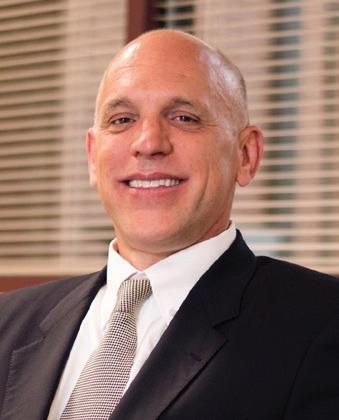
Scott Geroux is a 3L at Washburn University School of Law and a nontraditional student who is pursuing a second career in the criminal justice system. After several decades spent raising his two daughters and working as a broker in the financial services industry, he felt called to serve as a prosecutor assigned to trafficking cases. Now in the final semester of academic work, before venturing out into various internships, he is focused on developing his trial, appellate and civil rights advocacy skills.
Geroux is originally from Wisconsin, where he grew up in a semi-rural factory town and attended the University of Wisconsin in Madison. Upon graduation, he moved to Southern California to see what life had to offer. After a decade, he relocated to Colorado with his new family and has spent the past 20 years in Superior, Colorado.
It has been eight years since Geroux felt called to be a prosecutor and took the LSAT. The law school experience has confirmed that calling. For Geroux, the ultimate end will be to serve as a federal prosecutor assigned to cases where organized human trafficking intersects with white-collar crime.
References
1. City of Cleburne v. Cleburne Living Ctr., 473 U.S. 432 (1985).
2. See, e.g., Scott LaBarre, NFB Passes the Test, Nat’l Fed. For the Blind (Dec. 1997), https://nfb.org//sites/default/files/images/ nfb/publications/bm/bm98/bm980102.htm (discussing a 1997 settlement over LSAC’s refusal to allow Braille writers and other accessibility issues).
www.ksbar.org | May/June 2022 19
Kansas Mock Trial: Pivoting with the Metaphorical Punches
By Kate Duncan Butler
Every trial lawyer knows that sometimes, you have to pivot. That’s the thrill of trial work; for every direct examination that goes exactly as you planned, there is a cross-examination that blows up so spectacularly that you throw out your notes and fly by the seat of your pants.
This year, Kansas Mock Trial practiced the art of the pivot.
If you’re not familiar with our mock trial program, the facts are simple: every year, the Young Lawyers Section of the Kansas Bar Association hosts high school students from all over the state in a mock-trial competition. Each team receives materials for a court case that includes witness statements, potential trial exhibits and the relevant law. The students split up roles, creating and mastering theories of the case from both the plaintiff’s and defendant’s perspectives. This competition season, our students tackled a challenging medical negligence and wrongful death case. They not only had to prepare opening and closing statements and witness examinations but learn about complicated legal concepts like comparative negligence and standard of care.
When we opened the 2022 competition season back in August, the mock trial committee had a single goal: to return to in-person competition for both the regional and state tournaments. Students had returned to in-person school, vaccination efforts had been ongoing for several months, and infection rates continued to drop after the late-summer spike. Even as we distributed the case problem in November, we felt strongly that we’d be able to have our Wichita and Kansas City regionals in person at the end of February.
The omicron variant, however, had different plans.
In early January, the national mock trial organization elected to move the national competition in May to a virtual format. And in late January, with the guidance of the Kansas Bar Association’s leadership, Kansas Mock Trial made the difficult decision to pivot to a virtual competition for regionals.
The teams had less than a month to prepare for Zoom competition, but they found their footing even on short

notice. Like last year, we used breakout rooms as a standin for individual courtrooms, with the students moving between the rooms as the rounds progressed. And despite a handful of technical hiccups, our 12 varsity teams and four novice teams performed admirably! In the end, six varsity teams, representing five schools, advanced to the statewide competition.
By the time we finished regionals, COVID-19 infection rates had plummeted. For that reason, we decided to make good on our season-long promise and hold the state competition in person! At the end of March, mock trial committee members, teachers, coaches, students and our dedicated legal professionals who’d signed up to judge the competition gathered at the Shawnee County Courthouse for the first time since March 2019. Finally, students returned to performing in actual courtrooms, standing at the counsel table to object, and moving about the courtroom like seasoned professionals.
The in-person competition was fierce. By the end of the tournament, only a handful of points separated some of the top-ranked teams. The crown, however, went to Hayden High School in Topeka, with the two Blue Valley Northwest High School varsity teams coming in second and third. Several students from these schools, as well as Olathe East, were also honored with some of the best individual performances of the tournament. Several judges remarked that the students outperformed some licensed attorneys they knew!
20 The Journal of the Kansas Bar Association kansas mock trial
Every trial lawyer knows that sometimes, you have to pivot. This year, Kansas Mock Trial practiced the art of the pivot.
Like last year, the mock trial committee owes a great debt of gratitude to the incredible legal professionals who served as judges. Our judges came from all over the state and all walks of life; we had law students, sitting judges, trial attorneys, in-house counsel and even a few retired attorneys come out to help make our competition a rousing success. Also, special thanks to Lisa Leroux-Smith, Meredith Ashley and Nolan McWilliams for being part of our boots-on-theground logistics team during the in-person competition and Jakob Provo for his behind-the-scenes support and judge recruitment efforts. The tournament could not have happened without them.
We are already considering changes to the rules for next season, but no matter what happens, the future is bright for Kansas Mock Trial. After all, the program has now survived mid-season cancellation, a full season of virtual competition and a short-notice pivot. And we know that no matter the bumps in the road to 2023, the program has the support of many dedicated members of the KBA. As we said last year: it might not take a village to support Kansas Mock Trial, but it certainly takes a courtroom. u
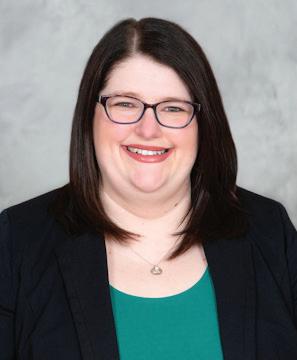
Kate Duncan Butler is an associate at Barber Emerson, L.C. in Lawrence where her responsibilities include civil litigation, probate guardianships, juvenile offender defense and family law. She is also a former high school teacher and believes that mock trial is a great first step to inspiring students into the practice of law.


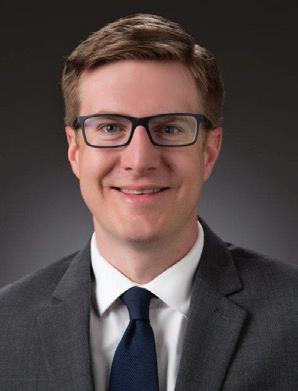

www.ksbar.org | May/June 2022 21
COHEN & DUNCAN ATTORNEYS, LLC STUDENT RIGHTS LAWYERS LEAWOOD AND WICHITA, KANSAS 913.956.1125 785.979.7361 studentrightslawyer.com • Education Lawyers for Students, Teachers and Professors • Higher Education Appeals for Undergraduate, Graduate and Professional School Appeals » Including Dismissal Appeals, Title IX Defense, Medical Resident Advocacy, Academic and Disciplinary Matters • Advocacy in Teacher and Administrator Conduct Cases • Advocacy for K-12 Disciplinary and Disability Cases cac@studentrightslawyers.com ad@studentrightslawyers.com vh@studentrightslawyers.com
Cli ord Cohen Andrew Duncan Victoria Henley
Update from the Office of the Disciplinary Administrator
By Gayle B. Larkin, Disciplinary Administrator
Last summer, after 35 years of service to the Kansas Judicial Branch, the public and the bar of the state of Kansas, Stanton A. Hazlett retired as the Disciplinary Administrator for the state of Kansas. Effective October 4, 2021, the Kansas Supreme Court conferred on me the privilege to fill the position vacated by Hazlett’s retirement.
Earlier this year, Chief Justice Marla J. Luckert offered me the opportunity to write an article in the column reserved for her in this journal. I gladly accepted and am excited to provide an update from the Office of the Disciplinary Administrator. In this update, I will briefly review Hazlett’s career, introduce my staff, highlight what’s new at the office and then maybe tell you a little bit about myself.
About Hazlett. For most of my legal career, the Office of the Disciplinary Administrator was not referred to by that name but rather simply as “Stan’s office.” That was because Hazlett created an environment of accessibility that extended the length and breadth of the state.
Hazlett provided hundreds of continuing legal education programs – from the four corners of Kansas to all communities in between. During his CLE presentations, Hazlett encouraged members of the bar to call the Office of the Disciplinary Administrator when they faced ethical dilemmas or when they had questions about the application of the Kansas Rules of Professional Conduct.
Under Hazlett’s leadership, the office created the Ethics Refreshers – a semi-monthly email message sent to the entire bar with a question designed to refresh and reinforce the bar’s familiarity with the Kansas Rules of Professional Conduct and the Rules Relating to the Discipline of Attorneys. (If you are not currently receiving the Ethics Refreshers and want to, please send an email message to attydisc@kscourts.org.)
Hazlett played an integral role in creating the Client Protection Fund Commission. Hazlett oversaw the investigation and presentation of claims that resulted in the return of more than $4,000,000 to clients victimized by dishonest attorneys. Hazlett was also involved in client
protection on a national level, serving as the Regional VicePresident of the National Client Protection Organization.
Hazlett also served on the Kansas Lawyer Well-Being Task Force, searching for ways to improve the well-being of attorneys throughout the state.
Finally, Hazlett prosecuted attorney disciplinary cases in a way that served to protect the public, while affording the respondent attorneys dignity and respect.
Hazlett was a dedicated public servant who served the legal profession well. His legacy with respect to the Client Protection Commission and the Lawyer Well-Being Task Force as well as his dedication to ensuring a fair process will serve as a monument that will benefit Kansans and the bar for many years to come. Thank you, Stan.
An Amazing Staff. Hazlett, with some assistance from me, worked hard to assemble a hard-working and professional staff. We hired skilled litigators who possess a balanced sense of fairness and exhibit professionalism. We also hired experienced and professional investigators, as well as patient, detail-oriented and hard-working administrative personnel. Though this paragraph hardly does them justice, I am proud to introduce each member of the staff:
• Matt Vogelsberg, Chief Deputy Disciplinary Administrator
• Deb Hughes, Deputy Disciplinary Administrator
• Gary West, Deputy Disciplinary Administrator
• Kathleen Selzler Lippert, Deputy Disciplinary Administrator
• Alice Walker, Deputy Disciplinary Administrator
• Julia Hart, Deputy Disciplinary Administrator
• Amanda Voth, Deputy Disciplinary Administrator
The investigative staff includes:
• Tom Stratton, Director of Investigations
• Crystalyn Ellis, Assistant Disciplinary Administrator
• Katie McAfee, Assistant Disciplinary Administrator
22 The Journal of the Kansas Bar Association
from the disciplinary administrator
• Royetta Rodewald, Special Investigator
• Dave Brede, Special Investigator
• Tim Schilling, Special Investigator
Finally, and most importantly, our office runs smoothly only because of the professional administrative staff that we have:
• Kayla Layne, Administrative Legal Secretary
• Mitzi Dodds, Administrative Legal Secretary
• Laine Beal, Administrative Legal Secretary
What’s Next? To say that I have big shoes to fill is perhaps the understatement of the year. However, I do have plans for the office. I have ideas on how we can take what Hazlett started and enhance the outreach efforts of the office, make the office even more accessible and improve the disciplinary process – with the dual goals of reducing attorney misconduct and protecting the public.
Expansion of Investigative Staff. Last fall, shortly after beginning my new position, I sought and obtained permission from the Supreme Court to expand the investigative staff. Previously, the investigative staff included three staff members. The Court approved my request to expand the in-house investigative staff to also include three full-time attorney investigators. My goal in expanding the in-house investigative staff is to reduce the time it takes to investigate complaints lodged against attorneys. Reducing the time it takes to investigate a complaint will benefit the complainant, the respondent and the public. I am hopeful that reducing the time it takes to investigate complaints will lead to earlier interventions, with the ultimate goal of preventing additional misconduct.
While we will continue to rely on volunteer attorney investigators through the ethics and grievance committees from across the state, we will investigate more cases in-house. Moreover, the in-house investigators will be available to assist the volunteer investigators in timely and professionally investigating complaints against attorneys.
Translation of Complaint Form and Claim Form. To make the attorney complaint process and the client protection claim process more accessible, earlier this year we had the complaint form and the client protection claim form translated into the Spanish language. Both the English language and Spanish language complaint and claim forms are available on the Internet.
Additional Rule 235 Efforts. Regularly, our office receives calls from members of the public seeking to find documents that were held by attorneys who have either died or left the practice. Unfortunately, most of the time we do not have any information to provide the caller. However, we have recently
An Amazing Staff. Hazlett, with some assistance from me, worked hard to assemble a hard-working and professional staff.
made efforts to improve that situation. Under Rule 235, the chief judge of a judicial district may appoint an attorney to protect the interests of an attorney’s clients when an attorney is transferred to disabled status, disappeared, or died, or when the Supreme Court has suspended or disbarred the attorney. For the convenience of the chief judges, we drafted a sample order which could be entered under Rule 235 and we distributed that order to the chief judge of each judicial district and the clerk of each district court. We have also requested a copy of all orders previously issued under Rule 235 and its predecessor, Rule 220, from all judicial districts. Also, we have requested to be provided a copy of each Rule 235 order as it is entered. Finally, we have developed an internal database that identifies the name of the attorney appointed to protect clients’ interests under Rule 235 and its predecessor, Rule 220. We are hopeful that going forward we will be able to provide helpful information to members of the public when they call seeking assistance in this regard.
Diversion Program. I am hopeful that the expansion of the in-house investigative staff will help us to earlier identify respondents who could benefit from a corrective plan available in the attorney diversion program. Utilizing the law office management resources available through KALAP, we hope to find ways to prevent misconduct from recurring.
Website. To enhance transparency, we also have plans to expand the information available regarding attorney disciplinary cases on the Internet. We plan to add a calendar to our webpage which will show the dates of attorney disciplinary hearings and oral arguments. In addition to the Supreme Court opinions on attorney disciplinary cases which are already available online, we plan to make additional documents, including formal complaints, answers and final hearing reports available on our webpage.
Future of Attorney Regulation. For the past two years, I have served on the National Organization of Bar Counsel’s Committee on the Future of Attorney Regulation. The committee consists of attorney regulators from all over the country. The committee was charged with examining issues
www.ksbar.org | May/June 2022 23
u
from the disciplinary administrator
that face attorney regulators throughout the country and identifying new ways to approach the regulation of the everchanging landscape of the practice of law. Ultimately, the committee will be publishing a white paper that will contain recommendations for implementation in attorney regulation offices nationwide. Once the paper is published, I look forward to seeking to implement the recommendations in Kansas.
Have an Ethical Question? If you find yourself facing an ethical dilemma or if you need information about the application of the Kansas Rules of Professional Conduct, as always, please feel free to reach out to our office. We are happy to discuss the situation and identify the rules which you will need to consider in resolving your issue. We can be reached at attydisc@kscourts.org and 785.435.8200.
Thank you to Chief Justice Luckert for providing me with the opportunity to introduce myself and provide you with an update from the disciplinary administrator’s office. I look forward to serving the Kansas Judicial Branch, the public and the bar in my new role as Disciplinary Administrator. u

Gayle B. Larkin graduated from the University of Kansas, School of Law in 1990. She started her career as a criminal prosecutor – first as an Assistant District Attorney for Douglas County, Kansas, and later as an Assistant Attorney General. While in the Attorney General’s office, Ms. Larkin was cross-designated as a Special Assistant United States Attorney for the District of Kansas. In 1999, she began her career in attorney discipline. From June 1999, through September 2021, she served as Counsel to the Kansas Board for Discipline of Attorneys. She advised the board and drafted final hearing reports following disciplinary hearings. From January 2003, through June 2021, she also served as the Admissions Attorney, investigating and prosecuting bar admissions cases related to character and fitness. In October 2021, the Kansas Supreme Court appointed Ms. Larkin as the disciplinary administrator. As the disciplinary administrator, she supervises the investigation and prosecution of attorney disciplinary cases, bar admissions cases, and client protection fund claims. In addition, she oversees outreach programs sponsored by the office designed to educate the bar on the Kansas Rules of Professional Conduct and prevent cases of attorney misconduct.





















































24 The Journal of the Kansas Bar Association t


What the News Media Wants
By Kim Wilhelm
Note from KBA: For this edition of the column from your KBA Media/Bar Committee, we asked Kim Wilhelm, news director of KWCH-TV/KSCW-TV in Wichita, to provide some thoughts on day-to-day news coverage of courts, with the continued goal of helping to build understanding between news journalists and the KBA Journal’s readership.
For those not familiar with the term, a “news director” is the person responsible for overseeing and orchestrating daily news coverage at a broadcast station, including supervising crews of reporters and video journalists and making decisions about how to allocate precious minutes of broadcast time. No, the daily news does not write itself. It is not imposed or dictated unilaterally by some mysterious source from on high. Each newscast, newspaper, or other news publication is the result of numerous difficult decisions made by dedicated people like Wilhelm, who exercise their best judgment about what information to convey to their audience or readership. They put their reputation on the line every day and publicly stand by their work. It is a challenging and often thankless job, but one that is vital to our society.

the giant VCR-like equipment broadcasters used back then. Journalists now may ask to live tweet or live stream the court proceeding. But the desire to cover the most impactful stories in our community has not changed.
So, what do members of the news media want? Why are they interested in some cases and not others? How come they only show up for part of a case? Why do they call for comment –don’t they know we can’t talk about it?
Here are Wilhelm’s thoughts on “What the News Media Wants”:
The courtroom is absolutely silent. I slowly bend down to push the stop button on my recording deck because my videotape has run out. I am holding my breath because I am so nervous. I slowly and softly push the eject button. The spring-loaded cassette tray jumps open with such mechanical force that I actually gasp. Everyone in the courtroom turns towards me no doubt thinking “who the [bleep] is so loud?” and that’s when I realize my sudden gasp has turned into a court-stopping case of hiccups.
And that was my first experience covering a court case as a journalist.
Fast forward many years and some things have changed. Today’s equipment is much smaller and quieter than
Most news organizations will cover high-profile incidents and/or unique cases. Most will not be there gavel to gavel because of resources. For the most part, gone are the days of big trial coverage and Court TV-like setups. Instead, local media may aim to cover the most compelling portion of a case.
The pandemic has opened an interesting opportunity. We all have become more comfortable with the tiny camera on our computers or phone for virtual meetings. Institutions that have traditionally said “no thanks” to full camera access have equipped themselves with the ability to broadcast meetings out of pandemic necessity. Now imagine being able to regularly broadcast court cases with the ease of a few buttons. In a day when transparency and trust is the goal, technology is allowing all of us to open up and reach more people. What an opportunity to take the public into the courtroom to see
26 The Journal of the Kansas Bar Association
from the KBA media-bar committee
the hard work done by judges and attorneys – to truly see justice in action.
Professional journalists are guided by ethics. The Society of Professional Journalists’ list of principles includes:
• seeking the truth and fully reporting it,
• minimizing harm,
• acting independently, and
• being accountable.
Newsrooms have lengthy discussions about stories and the impact we leave. We understand we may be encountering people on the worst day of their life after a tragedy. We consider the harm that may be done by publishing a graphic police affidavit online. We try to make responsible decisions while providing information to the public. Do we always get it right? No. But we try to learn from each misstep and educate our teams.
Reporters, just like attorneys, come in all experience levels. Most newsrooms do not have a dedicated court reporter but general assignment journalists who may be on a political story one day and a farm story the next. Educating our journalists about courts is important. Most new reporters have never been in a courtroom until they are assigned to cover a story. And that’s pretty intimidating.
So how do we both improve what we do? I’m proud of the work the KBA Media Bar Committee is doing to help educate journalists and KBA members. Building relationships is truly the best way to create trust and have honest conversations.
Thank you to all who have provided information to a journalist, granted an interview, or taken the extra time to make sure a reporter understood what just happened during a hearing. We all benefit when journalists are comfortable and capable in our courts. Thanks to the kind judge many years ago who saw an embarrassed young reporter with ridiculous hiccups in his courtroom and got her a drink of water. u
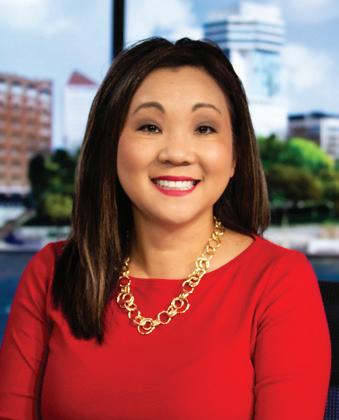

27
Kim Wilhelm is the news director of KWCH-TV/KSCW-TV in Wichita, Kansas. She serves on the KBA MediaBar Committee.

NEARLY HERE! The compliance deadline is Don’t worry. The KBA has you covered. CLE S u pportingYour Success www.ksbar.org/cle
ON-DEMAND
Continuing Legal Education
From the Kansas Bar Association
Complete your compliance hours from the comfort of your home or office!
All courses are available individually, but if you need more than a few, check out our On-Demand
All Access Pass, which gives you access to all of our on-demand courses for only $499.
Choose from hundreds of hours of CLE programming, including:
Kansas’ New Notary Laws
1 hour credit in KS
2021 Plaza Lights Institute
7.5 hours credit in KS
(Includes 1 hour ethics credit)
Medicaid Planning Panel
1.5 hours credit in KS
Corporate Transparency Act of 2021
1 hour credit in KS

Corporation Laws Sneak Peek: Recent Changes to the DGCL
1 hour credit in Kansas
LGBTQ + Issues in the Law
2 hours credit in Kansas
(Includes 1 hour ethics credit)
AND MANY MORE!
Check our website for the latest live webinar and in-person options!
KSBar.org/cle
50 years of Title IX: So Much More Than Sports
By Ashley Rohleder-Webb
I: Introduction
During this 50th anniversary year of the passage of Title IX, there are seemingly endless articles, television specials, and similar tributes being produced. Opinion articles during the NCAA Basketball Tournaments compared to treatment of male and female college athletes and just how much “madness” the NCAA dedicated to the respective tournaments.1 During warmups for their Final Four game, the University of Kansas men’s basketball team wore shirts with an excerpted line from Title IX on the back, part of Adidas’s “Impossible is Nothing” campaign.2 ESPN specials are scheduled for this summer.3 During Super Bowl LVI in February 2022, a special introduction video honoring female athletes aired, leading into the honorary coin toss by Billie Jean King, accompanied by players from girls’ football teams around California.4
One thing many of the 50th anniversary pieces have in common is a reference to “37 words.” It is even used in the title of a recent documentary produced by WNBA player Candace Parker, Title IX: 37 Words That Changed America. This references the first 37 words of Title IX: “No person in the United States shall, on the basis of sex, be excluded from participation in, be denied the benefits of, or be subjected to discrimination under any education program or activity receiving federal financial assistance…”5
In this environment, it is easy to assume that Title IX exclusively addresses gender equality in sports, but while there are provisions that address athletics today, it addresses all forms of sexual discrimination in education in the United States, including sexual harassment and sexual assault. It has changed over these last 50 years, reflecting societal changes and changes in leadership within the U.S. Department of Education through various presidential administrations.6
II: Pre-Title IX
Before the 1972 passage of Title IX, women and girls had few legal protections in American educational systems. Students of both sexes were prevented from entering classes or programs stereotypically associated with the other sex.7 Women’s and girls’ admission to colleges and universities was limited to a fraction of their male counterparts, as were scholarship awards.8 Colleges could have paternalistic rules, like curfews for female students9, or require female students to live in dorms while male students had no such requirements.10 Athletics programs for girls and women, where they existed at all, were not funded at the same levels as sports for boys and men.11
Title IX’s impact on girls’ and women’s access and achievement in education are demonstrated in college graduation rates. In 1972, women were 41% of college degree earners – associates, bachelors, masters, and doctorate degrees; in 2019, women earned 59% of degrees.12 Its impact in athletics are undeniable and were noticeable almost immediately. In the 1971-72 school year, 3,960,932 high school students participated in athletics – 294,015 girls and

30 The Journal of the Kansas Bar Association 50 years of title IX
3,666,917 boys.13 The next year, 817,073 girls and 3,770,621 boys, and in the 1973-74 school year, 1.300,169 girls and 4,770,125 boys participated.14 In the 2018-19 school year, 3,402,733 girls and 4,534,758 boys participated.15 In Kansas, of the 103,363 student athletes that participated in sports during the 2018-19 school year, 42,647 were girls and 60,716 were boys.16 At the collegiate level, prior to 1981-82, participation data was only collected every five years.17 In the 1966-67 school year, 15,182 women and 151,918 men participated in National Collegiate Athletic Association (NCAA) sports.18 In 1971-72, 29,977 women and 170,384 men, and in 1976-77, 62,886 women and 168,136 men participated.19 In 2017-18, 218,805 women and 281,928 men participated in NCAA sports.20
The former disparity in educational access impacted students beyond educational attainment and access to sports. In 1930, 14% of those in “the professions” (law, the judiciary, medicine, dentistry, architecture, ministry, science, and university teaching), were women.21 This percentage dropped to just under 11% in 1950, due to forces like the Great Depression changing employment, and it would take until 1970 for women to again attain that level of representation in the professions.22 Even into the 21st Century, many women prefer to pursue traditionally female-dominated careers like elementary teaching, social work and nursing.23 But, other women with the desire to pursue professional careers were blocked from doing so because quota systems denied them entry to the course of study required to pursue such a career.24 Since the passage of Title IX and other sex discrimination protections, women’s presence in the professions expanded, rising to 47% in 2014.25 As the need for two-or-more incomes to support a household or lifestyle has increased, a traditional male breadwinner/female homemaker model is no longer practical.26 It also does not account for divorced couples or co-parents, increased premarital cohabitation or cohabitation instead of marriage,27 or LGBTQ+ relationships.
A few women attempted to assert rights against sex-based discrimination even before explicit protections from discrimination on the basis of sex were enacted. Historically, female teachers could be, and were, fired for marrying or becoming pregnant during their contract. The same restrictions did not apply to men. One such case reached the Supreme Court of Kansas in 1932, in a contract dispute, and the plaintiff made public policy arguments. In May 1931, Betty Grimison (then Chaffin) accepted a contract to teach in the 1931-32 school year, to start that September.28 It contained the stipulation that “the marriage of a lady teacher during the term for which her contract is made automatically abrogates said contract.”29 In June, Grimison married, and then when the school year began, the school board did not allow her to begin her employment.30
Grimison argued that the contract did not require her to be unmarried during the term of the contract, just that it did not allow her to marry “during the [school] term for which her contract is made” (emphasis added), thus, the marriage did not invalidate the contract.31 She also contended that the contractual term was discriminatory toward women.32 The court found that the provision was not discriminatory, stating
No man and no woman has a right protected by law to be employed as a teacher ... No constitutional, statutory or common-law right of any woman would be infringed if the board refused, for any reason, to employ female teachers. Tender of employment to a woman may be on such terms as the board may deem to be for the best interest of the school, and acceptance of terms by an applicant for employment constitutes waiver of privilege to object to them.33
In 1973, after passage of Title IX, but before regulations were adopted and effective, a high school student brought a case under the 14th Amendment Equal Protection Clause.34 Tammie Gilpin, a Junior at Wichita High School Southeast (Southeast High) joined the all-male cross-country team, under a school district policy that allowed coeducational participation in some non-contact sports.35 However, after her first interscholastic meet with the team, Gilpin learned the Kansas State High School Activities Association (KSHSAA) handbook forbade boys and girls from participating on the same team in interscholastic competition.36 Gilpin joined the boys team because Southeast High did not have a girls cross-country team.37 The court determined that due to its policy allowing coeducational participation, the high school and the school district did not prohibit Gilpin or any other girl’s participation in cross-country, but that KSHSAA’s rule clearly denied her the ability to participate based solely on her sex.38 The U.S. District Court for the District of Kansas found that KSHSAA’s rule violated Gilpin’s right to equal protection under the Fourteenth Amendment, stating,
Little discussion is required with regard to the importance of the policy upon which this action was premised. This Nation has a long and unfortunate history of sex discrimination manifesting itself in every conceivable field of endeavor.39… Accordingly, although more subtle in nature, discrimination on the basis of sex is no less pervasive or invidious than discrimination on the basis of race, alienage, or national origin.40
At the state level, the Kansas Act Against Discrimination was initially passed in 1953 establishing the Kansas Commission on Civil Rights (now the Kansas Human Rights Commission) and provided protection from racial discrimination in employment practices but did not include enforcement
www.ksbar.org | May/June 2022 31 u 50 years of title IX
50 years of title IX
provisions.41 Five updates between 1961 and 1970 expanded protections to different groups or to different areas of public access, including housing and public accommodation.42 Protection from discrimination on the basis of sex was added in 1972.43 While public accommodations fall under the scope of the Kansas Human Rights Commission (KHRC), the Kansas Supreme Court found that it does not have jurisdiction to investigate claims of discrimination in public schools.44
Under some circumstances, a school may become a place of public accommodation; for example, when a school sponsors an activity open to the general public. It would then wrongfully discriminate if it limited entrance to the event on the basis of race or sex. However, this is not the case when the alleged discriminatory activity centers on educational policies or access to specific schools.”45
Additionally, the employment protections enforced by the KHRC apply to schools in their role as employers, and its jurisdiction overlaps with that of the U.S. Equal Employment Opportunity Commission. The two agencies cooperate on investigation and enforcement where federal and state laws intersect through a worksharing agreement.46
The Civil Rights Act of 1964 included protection from sexbased discrimination on its passage.47 Congressman Howard W. Smith of Virginia introduced an amendment to the bill to include the word “sex,” in Title VII, the employment section of the bill, creating protections from workplace discrimination on the basis of sex, along with those on the basis of race, color, religion, and national origin.48 While this amendment may have seemed like an effort to create a legal protection for women in the workforce, Congressman Smith had openly opposed racial integration, and some speculated that the amendment was suggested in an effort to cause the bill to fail.49 Other members of Congress supported the amendment, and the Civil Rights Act was signed into law on July 2, 1964.50,51 Passage of the Act was only the first step to its protections becoming effective.
On September 24, 1965, President Lyndon Johnson signed Executive Order 11246, the first order to address enforcement of the Civil Rights Act.52 It empowered the Civil Service Commission to address complaints of discrimination on the basis of race, creed, color, or national origin in Federal employment, and the Department of Labor to address the same in federal contractors.53 Notably, protection from sex discrimination was not included in the order.54 It was not until Executive Order 11375, on October 13, 1967, that sex was added to the list of protected classes.55
Even after passage of the Civil Rights Act, sexually discriminatory employment practices persisted, and female
students had no explicit protections at all. In an interview, Bernice Sandler, one of the driving forces behind the creation of Title IX, shared her experience applying for student financial aid as a married woman with children. In that interview, she explained that not only was discrimination on the basis of sex permitted, the disparate treatment was not commonly considered discriminatory.56 People expected women would ultimately not work after marrying or having children, especially in professional fields or careers that required higher education, so limited admissions in programs or scholarship funds should go to men who would enter and remain in the workforce.57
Upon completing her doctoral program at the University of Maryland in 1969, while also working as a part-time lecturer, Sandler unsuccessfully applied for one of seven full-time positions in her department.58 In seeking feedback after this rejection, a colleague told her, “You come on too strong for a woman.”59 In another job interview, the interviewer explained at length that he would not hire a woman because “they stay home when their children are sick,” despite the fact Sandler’s children were in high school at the time.60 In yet another, she was told she was “Not really a professional… just a housewife who went back to school.”61 These rejections led Sandler to research workplace sex-based discrimination, and after learning of Executive Order 11375, she contacted the Office of Federal Contract Compliance in the U.S. Department of Labor.62 A sympathetic employee explained how Sandler could make a complaint regarding violation of the Order – to his own office.63 She, with Women’s Equity Action League (WEAL), would file over 250 complaints of sex discrimination against colleges and universities on behalf of women faculty and students.64
Congresswoman Edith Green learned of the onslaught of complaints through her congressional duties and her position on WEAL’s national advisory board and launched congressional hearings on sex discrimination in higher education in the summer of 1970.65 Dozens of women, including Sandler, testified in the hearings. Ann Sutherland Harris, then an assistant art history professor at Columbia University testified about experiences of students she interacted with, some with interest in becoming professors.66 Female students were told they were too “cute” to become professors, or that women were expected to be competent, but “not brilliant or original” in their approach to coursework.67 One was asked “Why don’t you find a rich husband and give this all up?”68 Harris called the actions “psychological warfare” waged against women in higher education.69 Out of the hearings, Congresswoman Green and Congresswoman Patsy Mink coauthored a bill that would become Title IX.70
The first 37 words of Title IX have been getting a great deal of attention in 2022, but words 38 and 39 - “except that” –
32 The Journal of the Kansas Bar Association t
were the focus of debates around the bill. Exceptions to the requirement were made for undergraduate admissions at private institutions, for institutions that traditionally and continually admitted students of only one sex, for those in transitioning from single sex to coeducational institutions, to religious institutions to which the requirements would be inconsistent with the tenets of the organization, and military educational institutions and academies.71 President Richard Nixon signed the bill into law June 23, 1972.72
III: Title IX 1972-2020
While Title IX became law in 1972, the U.S. Department of Health, Education and Welfare did not issue regulations effectuating it for nearly three years, with regulations taking effect on July 21, 1975.73,74 In the 47 years since, there have been three changes to the Title IX regulations.75 In 1980, the regulations were adopted under the newly formed U.S. Department of Education, after the Department of Health, Education and Welfare divided into separate agencies.76 In 2000, the regulations were modified again, this time through the formal notice-and-comment rulemaking process, initiated October 29, 1999.77 These modifications reflect changes in law over the preceding 20 years, taking effect on August 30, 2000.78 In the spring of 2020, the most extensive changes yet were made, following another notice-and-comment process.79 This time, the notice-and-comment period extended over nearly three years, from announcement in September 2017, until they were released in May 2020 and took effect in August 2020.80 While the regulations changed little in nearly half a century, enforcement and the scope of the law has been shaped through cases and guidance from the Department of Education.
Where regulations did not define sexual harassment or spell out the extent of remedies available, courts set the parameters of what actions constitute sexual harassment and what sort of remedy was available to those who suffered the harassment. One of the earliest was Cannon v. University of Chicago. Cannon sued the University of Chicago and Northwestern University in 1975 after she was denied admission to their medical schools, claiming she was rejected because she was a woman.81 The Court of Appeals found that she had no right of action against the schools, as Title IX did not explicitly provide for such an action.82 In 1979, the Supreme Court overturned that decision, finding that Title IX had all of the conditions needed to find an implied remedy, thus determining that individuals had a private right of action under Title IX.83
Twenty years after Title IX passed, the Supreme Court held that damages are available in a sex discrimination complaint. Christine Franklin attended North Gwinnett High School in Georgia, and alleged that in the fall of 1986, her sophomore year, a male teacher, Andrew Hill, began sexually harassing
her.84 The harassment began with Hill asking her questions about what sexual acts she had engaged in with her boyfriend and asking her if she would consider having a sexual encounter with an older man, but he eventually forcibly kissed her, and during her junior year, escalated to the point that he entered Franklin’s classes, asked the teacher to excuse her, then took Franklin to an office where he coerced sexual contacts.85 School officials became aware of the harassment and investigated the allegations related to Franklin, as well as allegations related to other students and teachers, but did not intervene and discouraged Franklin from pursuing criminal charges against the teacher.86 The teacher resigned in the spring of 1988, Franklin’s junior year, on the condition that the district drop its investigation into complaints against him.87 Because Franklin had graduated and the teacher resigned, no equitable remedy was available, so the Court determined that monetary damages were the only way for the court to grant relief.88
Conditions under which schools would be liable for damages developed through a series of cases as well. In the first, Gebser v. Lago Vista Independent School District, the Supreme Court addressed teacher-on-student harassment considerations.89
In 1991, Alida Gebser was an eight-grade student in a high


www.ksbar.org | May/June 2022 33 u 50 years of title IX
Guidance Tailored to the Needs of Attorneys Fee-Only | Fiduciary | Independent | Objective 785-232-3266 716 S. Kansas Ave., Topeka, KS 66603 claytonwealthpartners.com
50 years of title IX
school book discussion group, led by one of the high school teachers, Frank Waldrop, who frequently made sexually suggestive comments to students in the group.90 During Gebser’s freshman year, she was assigned to Waldrop’s class, where he also made sexually inappropriate comments around and to students.91 The teacher and student began to spend time alone together in his classroom, then he visited her home in the spring semester, at which time Gebser and Waldrop began a sexual relationship.92,93 These interactions continued into the next school year, when they would leave school property and engage in sex acts during the school day, until they were caught by a law enforcement officer in January 1993.94 Also during the 1992-93 school year, school officials investigated potential sexual harassment involving Waldrop, due to the inappropriate comments he made to students.95 Gebser and her mother sued the school district and the teacher in November 1993, alleging in part that the school district should have been aware of the sexual abuse, due to the October 1992 investigation.96
The Court found that Title IX requires a school official with authority to take corrective action to end discriminatory actions must have actual knowledge of the discrimination, and then act with deliberate indifference to the knowledge, and only in those circumstances may a court award damages to a student victim of sexual harassment.97 In this case, Waldrop had been investigated for making inappropriate sexual comments, which would not reasonably prompt the school official investigating to suspect the teacher was engaged in a sexual relationship with a student.98
Just one year later, the Court ruled on peer-to-peer sexual harassment between students in Davis v. Monroe County Board of Education. 99 LaShonda Davis’s mother filed a suit alleging that her daughter suffered sexual harassment from a classmate making vulgar comments and motions directed at Davis, and attempting to touch her breasts and genitals on different occasions through the 1992-93 school year, when Davis was in fifth grade.100 The classmate was eventually charged and pleaded guilty to sexual battery charges.101 By that time, Davis’s grades had slipped and her father found a suicide note she wrote.102 Throughout the year, the school did not discipline the student for his behavior or make efforts to separate LaShonda from her harasser.103 In their suit, the Davises claimed the persistent sexual advances and harassment interfered with Davis’s ability to attend and perform in school and activities, and sought compensatory and punitive damages.104
The Court first determined that a plaintiff in a student-onstudent harassment case can recover damages, following the reasoning of Franklin and Gebser 105 Next, the Court had to determine whether a school could be liable for harassment by a third party, as is the case in student-on-student harassment.
The Court ruled that a school could be liable for damages only for its own misconduct but found that while Davis was harassed by a fellow student, a third party for the Court’s purposes, the school’s lack of response to the harassment created the Title IX violation.106 Applying the standard from Gebser, the Court found that the school acted with deliberate indifference, as the inaction of school officials was “clearly unreasonable under the circumstances.”107 It expanded the requirements for the award of damages in student-tostudent harassment, recognizing the difference between it and teacher-to-student harassment. For a school to be liable for damages in a student-on-student harassment case, it must be “deliberately indifferent to sexual harassment, of which [it has] actual knowledge, that is so severe, pervasive, and objectively offensive that it can be said to deprive the victims of access to the educational opportunities or benefits provided by the school.”108
The eventual definitions of sexual harassment similarly developed out of case law. These characteristics of harassment in Davis – unwelcome conduct on the basis of sex that is so severe, pervasive, and objectively offensive that it effectively denies a person equal access to education – form the definition of hostile environment sexual harassment under the 2020 Title IX regulations.109 In the time between Davis and the 2020 regulations, the 1997 and 2001 guidance from the Department of Education used “or” instead of “and,” due to a Title VII case that used “severe or pervasive” in its definition of sexual harassment.110
Quid pro quo harassment is another form of harassment acknowledged in the 1997 and 2001 Guidance from the Department of Education and is included in the 2020 regulatory definitions.111 The definition, “An employee of the recipient conditioning the provision of an aid, benefit, or service of the recipient on an individual’s participation in unwelcome sexual conduct,”112 grew out of language first used in Alexander v. Yale University in 1977, “[I]t is perfectly reasonable to maintain that academic advancement conditioned upon submission to sexual demands constitutes sex discrimination in education.”113
Considering this history, how did Title IX become characterized as the girls’ and women’s sports law? During debates in Congress before it was made law, there was a discussion about whether Title IX would require schools to allow women to play football or field a girls’/women’s football team, but otherwise, athletics were largely not considered during initial passage of the bill.114 In 1974, two Congressmen made separate proposals for amendments to Title IX, specifically related to athletics. The Tower Amendment, put forward by Senator John Tower, would add an additional exception to the initial five, to read, “(6) this section shall not apply to an intercollegiate athletic activity insofar as such
34 The Journal of the Kansas Bar Association t
In this environment, it is easy to assume that Title IX exclusively addresses gender equality in sports, but while there are provisions that address athletics today, it addresses all forms of sexual discrimination in education in the United States, including sexual harassment and sexual assault.
activity provides to the institution gross receipts or donations required by such institution to support that activity.”115 This proposed amendment failed in committee, but was replaced by the Javits Amendment.116 The Javits Amendment required the implementation regulations include “with respect to intercollegiate athletic activities reasonable provisions considering the nature of particular sports.” Throughout these debates, there was a tension between those trying to alter the version of Title IX that passed, and those who wanted to provide guidelines to the Department of Health, Education and Welfare that would enact the law that was already passed.117 Similar efforts to limit Title IX’s impact on athletics, or to do away with it all together, continued in earnest through 1976 and 1977.118
In the midst of these challenges, the Department of Health, Education and Welfare moved forward in creating regulations to address the impact of Title IX, with the initial regulations taking effect on July 21, 1975.119 In September of that year, the Director of the Office of Civil Rights (OCR), Peter E. Holmes sent a memo to Chief State School Officers, Superintendents of Local Educational Agencies and College and University Presidents describing the regulations and the educational institutions’ responsibilities.120 In the first year of the regulations, schools were required to complete a self-evaluation of all policies and practices, including those related to athletics, and make changes necessary to comply with Title IX regulations.121 They were directed to determine the interests and abilities of students in different sports, and determine which sports should have single-sex teams and which could be coeducational.122 OCR provided factors schools should consider in their self-evaluation of their offerings to determine if the schools were offering equal opportunities. These included 1) the nature and extent of the sports programs to be offered (including the levels of competition, such as varsity, club, etc.); 2) the provision of equipment and supplies; 3) the scheduling of games and practice time; 4) the provision of travel and per diem allowances; 5) the nature and extent of the opportunity to receive coaching and academic tutoring; 6) the assignment and compensation of coaches and tutors; 7) the provision of locker rooms, practice and competitive facilities; 8) the provision of medical and training facilities and services; 9)
the provision of housing and dining facilities and services; 10) the nature and extent of publicity.123 Finally, the letter advised schools on how they could reasonably allocate scholarship funds, so male and female students could benefit, but stressed that specific quotas or proportions were not required by law.124
OCR offered additional guidance related to intercollegiate athletics in a 1979 Policy Interpretation, after publishing a proposed Policy Interpretation in 1978 and visiting eight universities in the summer of 1979.125 The Policy Interpretation provided background information, then specific interpretation and direction related to college and university athletic programs, including scholarships, facilities, program offerings, policy requirements, and how the regulations would be enforced.126 OCR did not provide additional direction or communication to schools related to Title IX until 1996, again related to intercollegiate athletics policies, clarifying a three-prong test it laid out in the 1979 Policy Interpretation.127
In 1998, following 25 complaints to its office, OCR interpreted the 1979 regulation that required budgets for intercollegiate athletics scholarships be “substantially proportionate” to the participation rates of male and female students.128 To comply with the requirement, colleges’ and universities’ athletic scholarship budgets must be within one percent of the percentage of participants of each sex.129 The letter illustrates with this example: Where 60% of the school’s athletes are male, 59%-61% of scholarship funds must be available to men, and the remaining to women.130 In 2003, yet another guidance document, called “Further Clarification of Intercollegiate Athletics Policy Guidance Regarding Title IX Compliance,” reinforcing positions and advice given in prior guidance documents.131
In the last 20 years, guidance has frequently addressed athletics, but there has been more diversity in the issues OCR addresses, including pregnant and parenting students, singlesex education, sexual harassment, and often moving targets related to LGBTQ+ youth.132 Frequently, this guidance is tied to the changes in law that arose from courts’ interpretation of Title IX.
www.ksbar.org | May/June 2022 35 u
years of title IX
50
50 years of title IX
In the time from 1979 to 1996 that OCR did not release guidance related to Title IX and its application to athletics, courts were addressing the issues. The United States Supreme Court addressed Title IX and athletics in Grove City College v. Bell (then Secretary of Education). Grove City College, a private liberal arts college enrolled a “large number” of students on Basic Educational Opportunity Grants, and the Department of Education considered it a recipient of Federal funds, thus subject to Title IX requirements, and found the school out of compliance in athletics requirements.133 The school successfully argued that Title IX requirements could only apply to the specific “education program and activities” that received Federal financial assistance, not other programs in the school.134 However, the Civil Rights Restoration Act of 1987, which became law March 22, 1987 reeled back this interpretation.135 It defined the “education program or activity” more broadly, in response to Grove City College 136 It specifically states “any part of which is granted Federal financial assistance,” when describing the reach of Title IX in organizations receiving Federal funds.137 This definition was adopted into Title IX regulations in the 2000 regulation updates.138
IV: 2020-present
The past two years have brought sweeping change to Title IX. On May 6, 2020, then-Secretary of Education Betsy DeVos announced the release of new Title IX regulations, concluding the rulemaking process commenced in September 2017.139 The new regulations were meant to “strengthen protections against sexual harassment, including sexual assault, and restore due process rights for all students.”140 Regulations related to athletics, employment (except as it relates to sexual harassment), and single-sex education were not modified, only those related to sexual harassment.141 The new regulations greatly expanded the sections related to sexual harassment, providing a definition of sexual harassment for the first time in Title IX regulation.142 There are regulations related to what situations trigger a response from the school, others that create and define new terminology, and still others that specify requirements of a formal complaint.143 The bulk of the new regulations create a grievance process to afford due process to those accused of sexual harassment, broken in to stages, with trained persons completing each stage of the procedure.144 Concepts long established in case law, like actual knowledge, deliberate indifference, and quid pro quo and hostile environment sexual harassment were codified.145
The first case challenging the regulations was filed just days after Secretary Devos’s announcement. Know Your Title IX, Council of Parent Attorneys and Advocates, Inc., Girls for Gender Equity, and Stop Sexual Assault in Schools filed a suit on May 14, 2020, claiming the regulations violated the Administrative Procedure Act, claiming the new regulations “‘radically reduced the responsibility of schools to respond
to complaints of sexual harassment and assault, creating an arbitrary and wholly unexplained disparity between its treatment of sex discrimination on the one hand, and race, national origin, and disability discrimination on the other.’ (Compl. For. Decl. & Inj. Relief ¶ 1, ECF No. 1.)”146 This case was quickly dismissed as moot, as there was no case or controversy to decide.147 Since the new regulations were announced, only one Plaintiff has successfully argued for a change in the regulations.
In Victim Rights Law Ctr. v. Cardona, four victims’ rights organizations and three individual plaintiffs argued that 13 of the provisions in the new regulations violated the Administrative Procedure Act, departing from established Department of Education practice and procedure, and that the 13 provisions were produced through arbitrary and capricious decision making.148 They also argued that the new rules violated the Equal Protection Clause, as they treat allegations of sexual harassment differently than those of discrimination or harassment on the basis of race, color, national origin, and disability, but this argument was unsuccessful.149 The United States District Court for the District of Massachusetts found one of the 13 provisions to be arbitrary and capricious, from Section 106.45(b)(6)(i):
If a party or witness does not submit to crossexamination at the live hearing, the decisionmaker(s) must not rely on any statement of that party or witness in reaching a determination regarding responsibility; provided, however, that the decision-maker(s) cannot draw an inference about the determination regarding responsibility based solely on a party’s or witness’s absence from the live hearing or refusal to answer cross-examination or other questions.150
As the court reasoned,
Neither the Government’s briefing nor this Court’s thorough review of the record indicates that the Department considered or adequately explained why it intended for section 106.45(b)6)(i) to compound with a respondent’s procedural safeguards quickly to render the most vital and ultimate hallmark of the investigation -- the hearing -- a remarkably hollow gesture. …
No attorney worth her salt, recognizing that -- were her client simply not to show up for the hearing -- an ironclad bar would descend, suppressing any inculpatory statements her client might have made to the police or third parties, would hesitate so to advise.
36 The Journal of the Kansas Bar Association
t
To so carefully balance and craft the respondent’s safeguards, the definitions, the burdens, and the policies in the run-up to the hearing, just to have the prohibition and definition of absentee statements render the hearing a hollow exercise further demonstrates that the Department failed, even implicitly, to consider the consequences from the prohibition and definition of statements.” 151
The court remanded the provision to the Department of Education Office for Civil Rights in its July 28, 2021, ruling.152 On August 24, 2021, OCR released a letter to students, educators, and other stakeholders, stating that it would immediately cease enforcement of the prohibition against admission of statements that are not subject to crossexamination.153
As if 2020 had not already brought enough change to Title IX, just weeks after the announcement of new Title IX regulations, the United States Supreme Court issued its decision in the case of Bostock v. Clayton County, Georgia on June 15, 2020. Bostock combined three Title VII cases involving members of the LGBTQ+ community who were terminated from employment due to their sexuality or gender identity, allegedly for those reasons alone.154 Gerald Bostock worked as a child welfare advocate for Clayton County for over ten years.155 After joining a recreational gay softball league, people in the community commented on his participation, and shortly thereafter, Bostock was fired for “conduct unbecoming a county employee.”156 Fellow plaintiff Donald Zarda was terminated from his job as a skydiving instructor for Altitude Express days after mentioning he was gay.157 He had worked for the New York company for several years.158 Finally, the third plaintiff, Aimee Stephens was fired from R.G. & G.R. Harris Funeral Homes in Michigan after six years of employment.159 After her first two years in the position, she was diagnosed with gender dysphoria, and on her provider’s recommendation, intended to begin living as a woman.160 Before taking a planned vacation, Stephens informed her employer that when she returned from vacation, she would “live and work full-time as a woman,” but was fired soon after.161
In the decision, Justice Neil Gorsuch summarized the question before the court as follows.
Today, we must decide whether an employer can fire someone simply for being homosexual or transgender. The answer is clear. An employer who fires an individual for being homosexual or transgender fires that person for traits or actions it would not have questioned in members of a different sex. Sex plays a necessary and undisguisable role in the decision, exactly what Title VII forbids.”162
This “clear answer” is further broken down later in the decision,
The statute’s message for our cases is equally simple and momentous: An individual’s homosexuality or transgender status is not relevant to employment decisions. That’s because it is impossible to discriminate against a person for being homosexual or transgender without discriminating against that individual based on sex,”163
“So just as an employer who fires both Hannah and Bob for failing to fulfill traditional sex stereotypes doubles rather than eliminates Title VII liability, an employer who fires both Hannah and Bob for being gay or transgender does the same.164
The defendant employers argued that if the court ruled in favor of the plaintiffs, the decision would “sweep beyond the Title VII” and be applied to sex-segregated bathrooms, locker rooms, and dressing rooms in an “unsustainable” way. The decision addressed this argument, stating
The only question before us is whether an employer who fires someone simply for being homosexual or transgender has discharged or otherwise discriminated against that individual ‘because of such individual’s sex.’ … Firing employees because of a statutorily protected trait surely counts. Whether other policies and practices might or might not qualify as unlawful discrimination or find justifications under other provisions of Title VII are questions for future cases, not these.”165
As has been illustrated, Title VII of the Civil Rights Act of 1964 and Title IX are inextricably linked. As the defendants in Bostock predicted in their arguments, the ruling almost immediately influenced courts and politicians. The Grimm v. Gloucester County School Board case has been working up and down 4th Circuit Courts since 2015, when Gavin Grimm, a transgender high school student, sued his school for a policy it adopted that required individuals use the restrooms and locker rooms that correspond to their biological sex, or sex assigned at birth, rather than their gender identity.166 Those with “gender identity issues” were to be provided an “alternative appropriate private facility.”167
When the policy was adopted, Grimm had already been using the boys bathroom for several weeks, and through the court proceedings shared a number of issues he experienced with the alternative restroom options, including their unavailability during some afterschool events, the additional time it took to go to and from the nurse’s office to use the restroom during the school day, the feelings of alienation as the only student using alternative facilities, and that he experienced health
www.ksbar.org | May/June 2022 37 u 50 years of title IX
50 years of title IX
issues from avoiding the restroom altogether during school.168 In its August 2020 decision, the 4th Circuit Court of Appeals applied Bostock to this case deciding “…we have little difficulty holding that a bathroom policy precluding Grimm from using the boys restrooms discriminated against him ‘on the basis of sex.’”169 It further found:
Having determined that Grimm was harmed, we finally turn to the heart of the Title IX question in this case: whether the policy unlawfully discriminated against Grimm. Bostock expressly does not answer this “sex-separated restroom” question. … Grimm was treated worse than students with whom he was similarly situated because he alone could not use the restroom corresponding with his gender. Unlike the other boys, he had to use either the girls restroom or a single-stall option. In that sense, he was treated worse than similarly situated students.”170
The school district appealed the decision, but the Supreme Court denied the petition for certiorari in June 2021.171
The 9th Circuit took up a similar case, Parents for Privacy v. Barr. It was decided before Bostock and addressed the other side of Grimm. While Grimm asked whether a policy that denies a transgender person access to the bathroom that aligns with their gender identity discriminatory, Parents for Privacy sued Dallas High School in Dallas, Oregon, when the school district adopted policy that allowed a transgender student to use the restroom that aligns with their gender identity.172 Parents claimed the policy violated Title IX, and denied constitutional rights of students and parents: the right to privacy, the right of parents to direct the education and upbringing of their children, and the right to free exercise of religion.173 Focusing on the Title IX arguments, Parents claimed the policy violated Title IX by “turning locker rooms, showers, and multi-user restrooms into sexually harassing environments and by forcing students to forgo use of such facilities as the solution to harassment.”174 The court found that the parents failed to show that the policy created harassment because of sex that was so severe, pervasive, and objectively offensive that it denied students access to the educational program.175 Parents also argued that Title IX “unequivocally upholds the right to bodily privacy” and that Title IX implementing regulations authorize schools to provide separate, but comparable toilet, locker room, and shower facilities, claiming “Congress intended to preserve distinct privacy facilities based on biological sex.”176 The court determined that while sex-segregated facilities are allowed, they are not required and that the law does not require such segregation to be by biological sex instead of gender identity.177 The court upheld the district court’s dismissal of the claims.178 As in Grimm, Parents for Privacy appealed and were denied a writ of certiorari in December 2020.179
As 2020 rolled into 2021, and President Biden took office, many asked what impact the change in administrations would have on Title IX, and if it meant the switch might be flipped to quickly rescind or at least stop enforcement of the still new 2020 regulations.180 Five days after taking office in 2021, President Biden signed Executive Order 13988.181 It acknowledges the Bostock decision and applies that reasoning to other laws that prohibit sex discrimination.182 It further requires the head of each federal agency to review existing orders, regulations, guidance, policies, actions to propose changes to protect individuals from sexual discrimination.183
Weeks later, on March 8, 2021, Biden issued Executive Order 14021, requiring the Secretary of Education “consider taking additional enforcement actions… to account for the significant rates at which students who identify as lesbian, gay, transgender, and queer are subject to sexual harassment”184 On April 6, 2021, OCR released a Letter to Students, Educators, and other Stakeholders regarding Executive Order 14021, outlining the Department of Education’s plan to effectuate the directive given in the executive order.185 Then, on June 6th, 2021, OCR issued a Notice of Interpretation stating that it will apply the Bostock finding that discrimination on the basis of sex encompasses discrimination based on sexual orientation and gender identity in Title IX cases.186
V: Future of TIX
As demonstrated over the last 50 years, Title IX rules and regulations, and their enforcement are fluid and everchanging. The next changes are already looming on the horizon. Legislative efforts, administrative regulation amendment processes have commenced, and cases are in progress in courts across the country.
Just as the 2020 Title IX regulations were challenged in courts soon after being announced, the Department of Education’s recent Notice of Interpretation prompted legal action as well. On August 30, 2021, 20 states’ attorneys general, including Kansas’s and led by Tennessee’s, sued to prevent the Department of Education from applying the Bostock protections for LGBTQ+ people in Title IX sexual harassment matters, and limiting the interpretation of Bostock to only apply to Title VII cases.187
Since 2020, eight bills have been filed at the Federal level to modify Title IX; seven were related to transgender students, requiring biological sex or sex assigned at birth to determine which athletic team classification – men/boys or women/ girls – a student can participate in, or what facilities a person can access on school property.188 The eighth would address schools’ liability in cases of sexual harassment by school agents or employees.189 Bills regarding transgender students and student athletes have been filed at the state level across the country as well, Kansas included.190
38 The Journal of the Kansas Bar Association
t
On December 10, 2021, the Department of Education Assistant Secretary for Civil Rights announced the Department’s intention to issue a notice of proposed rulemaking in April 2022, if not before.191 In February 2022, the Department sent a draft of its proposed amendments to the Office of Information and Regulatory Affairs (OIRA).192 After it is reviewed by OIRA, the draft amendments, or Notice of Proposed Rulemaking (NPRM) will be published in the Federal Register and the public comment period will open.193 As of April 13, 2022, the NPRM has not been released, though many are anxiously awaiting its arrival.
Regardless of what is in the NPRM, what bills become law this year, or how various Title IX cases resolve, the only thing practitioners, students, school employees, parents, and school communities can count on is more change will come. u

Ashley Rohleder-Webb graduated from Washburn University School of Law. After starting her career in private practice, she has worked as an attorney at the Kansas Association of School Boards since February 2018. KASB serves school districts across the state and helps Kansas board leadership teams lead, serve and advocate for student success. Title IX is a subject close to her heart, and she is thankful for the doors it opened to her and her colleagues that might have otherwise been closed - from her time as a middle school and high school student-athlete growing up in Gorham, KS, all the way through her graduation from law school, and in her work today.
References
1. See Ross Dellenger, Lawmakers Slam NCAA for Failing to Address Disparity in Men’s and Women’s Sports, Sports Illustrated (March 15, 2022), https://www.si.com/ college/2022/03/15/ncaa-tournament-college-sports-genderequity-congress-title-ix; Dennis Dodd, Approaching Its 50th Anniversary, Title IX Is Just Getting Warmed Up, CBS Sports (March 22, 2022), https://www.cbssports.com/womens-collegebasketball/news/approaching-its-50th-anniversary-title-ix-isjust-getting-warmed-up/;
2. Mike McDaniel, Kansas Sports Title IX Shirts Ahead of Final Four in Honor of 50th Anniversary, Sports Illustrated (April 2, 2022), https://www.si.com/college/2022/04/03/kansasjayhawks-title-ix-warmups-adidas-final-four-villanova.
3. Isabelle Lopez, ESPN Announces Content for Fifty/50 Initiative Celebrating Fifty Years of Title IX with Elements Across the Walt Disney Company, ESPN Press Room (March 8, 2022) https:// espnpressroom.com/us/press-releases/2022/03/fifty50content/.
4. Jordyn White, Super Bowl LVI Coin Toss Will Honor 50th Anniversary of Title IX and Inclusion Across Sports, NFL Communications, https://nflcommunications.com/Pages/ Super-Bowl-LVI-Coin-Toss-Will-Honor-50th-Anniversary-ofTitle-IX-and-Inclusion-Across-Sports-.aspx.
5. 20 U.S.C.S. § 1681(a).
6. 20 U.S.C.S. § 1681(a), 34 CFR 106 (2020).
7. Dept. of Justice, Equal Access to Education: Forty Years of Title IX (June 23, 2012), at 2, available at https://www.justice.gov/ sites/default/files/crt/legacy/2012/06/20/titleixreport.pdf.
8. Id
9. Id
10. Pat Morrison, Before Title IX Came Along, Many People Didn’t Believe Discrimination Against Women Was A Problem, Los Angeles Times (August 16, 2017), https://www.latimes.com/ opinion/op-ed/la-ol-patt-morrison-asks-bernice-sandler-titleix-sex-discrimination-20170816-htmlstory.html.
11. Erin Blakemore, Women Faced Unchecked Discrimination in U.S. Schools—Until Title IX, National Geographic (March 2, 2022). https://www.nationalgeographic.com/history/article/thehistory-and-legacy-of-title-ix.
12. Id
13. National Federation of State High School Associations, 2018-19 High School Athletics Participation Survey, at 54, https://www. nfhs.org/media/1020412/2018-19_participation_survey.pdf.
14. Id
15. Id
16. Id. at 55.
17. Erin Irick, NCAA Sports Sponsorship and Participation Rates Report, National Collegiate Athletic Association, at 296, https://ncaaorg.s3.amazonaws.com/research/sportpart/ Oct2018RES_2017-18SportsSponsorshipParticipationRatesRe port.pdf.
18. Id
19. Id
20. Id. at 79-80.
21. Patsy Parker, Ph.D., The Historical Role of Women in Higher Education, 5 Admin. Issues J. 3, Spring 2015, at 3-4, available at https://files.eric.ed.gov/fulltext/EJ1062478.pdf.
22. Id.
23. Id. at 4-5.
24. Id.
25. Id. at 5.
26. Id.
27. Id.
28. Grimison v. Bd. of Educ., 136 Kan. 511, 16 P.2d 492 (1932).
29. Id. at 512.
30. Id. at 512.
31. Id. at 512-513.
32. Id.
33. Id. at 512-513.
34. Gilpin v. Kan. State High Sch. Activities Ass’n, 377 F. Supp. 1233, 1236 (D. Kan. 1973).
35. Id
36. Id
37. Id
38. Id. at 1236-1237.
39. Id. at 1250.
40. Id. at 1251.
41. KHRC Statute Book, Kan. Human Rights Comm., July 1, 2012, at 4-6, http://www.khrc.net/ KHRCStatuteBookUpdatedEffective07-2009.pdf.
42. Id
43. Id
44. Kan Comm’n. on Civil Rights v. Topeka Unified School Dist., 243 Kan. 137, 755 P.2d 539 (1988)
45. Id. at 144.
46. Worksharing Agreement Between KHRC and EEOC, available at http://www.khrc.net/pdf/WorksharingAgreement.pdf.
47. Civil Rights Act of 1964, 88 P.L. 352, 78 Stat. 241
48. Allen Fisher, Women’s Rights and the Civil Rights Act of 1964,
www.ksbar.org | May/June 2022 39 u
IX
50 years of title
50 years of title IX
National Archives, https://www.archives.gov/women/1964civil-rights-act.
49. Id
50. Engrossing Copy of Civil Rights Act of 1964, https://history. house.gov/HouseRecord/Detail/25769811498.
51. Fisher, supra
52. Equal Employment Opportunity, 30 Fed. Reg. 12319 (Sept. 28, 1965)
53. Id
54. Id
55. Amending Executive Order No. 11246, relating to equal employment opportunity, 32 Fed. Reg. 14303 (Oct. 17, 1967)
56. Morrison, supra
57. Id
58. Bernice Sandler, “Too Strong for a Woman”: The Five Words That Created Title IX. About Women on Campus, Spring 1997, National Association of Women in Education, at 23, available at https://documents.alexanderstreet.com/d/1005577060.
59. Id. at 23.
60. Id. at 23-24.
61. Id. at 24.
62. Id
63. Id. at 25.
64. Blakemore, supra
65. Sandler, supra at 26.
66. Blakemore, supra
67. Id.
68. Id.
69. Id.
70. Id.
71. Pub. L. No. 92-318 (codified as amended at 20 U.S.C.S. § 1681).
72. 20 U.S.C.S. § 1681(a), 34 CFR 106 (2020).
73. 34 CFR § 106.1 (2020).
74. Dept. of Educ., Sex Discrimination, Overview of the Law, available at https://www2.ed.gov/policy/rights/guid/ocr/ sexoverview.html.
75. Dept. of Justice. Title IX Legal Manual, January 11, 2001 (with post-Bostock Cover Addendum), at 23, available at https:// www.justice.gov/file/1423496/download.
76. Id
77. Id
78. Id. at 24.
79. Dept. of Educ., Sex Discrimination, Overview of the Law, supra.
80. Betsy DeVos, Letter to Stakeholders Re: Title IX Final Rule, May 6, 2020, available at https://www2.ed.gov/about/offices/ list/ocr/correspondence/stakeholders/20200506-t9-final-rulek12-educators.pdf.
81. Cannon v. University of Chicago, 441 U.S. 677, 680, 99 S. Ct. 1946, 60 L. Ed. 2d 560 (1979)
82. Id
83. Id. at 717.
84. Franklin v. Gwinnett County Pub. Sch., 503 U.S. 60, 63, 112 S. Ct. 1028, 117 L. Ed. 2d 208 (1992)
85. Id
86. Id. at 64.
87. Id
88. Id. at 76.
89. Gebser v. Lago Vista Indep. Sch. Dist., 524 U.S. 274, 118 S. Ct. 1989, 141 L. Ed. 2d 277 (1998)
90. Id. at 277.
91. Id
92. Id
93. While the court characterized the interactions as a sexual relationship, in 2022, courts and the public are more likely to
view and characterize such interactions as sexual abuse of a child, and as a criminal act against the child.
94. Id.
95. Id. at 278.
96. Id. at 279.
97. Id. at 290.
98. Id. at 291.
99. Davis v. Monroe County Bd. of Educ., 526 U.S. 629, 119 S. Ct. 1661, 143 L. Ed. 2d 839 (1999)
100. Id. at 634.
101. Id
102. Id
103. Id. at 635.
104. Id. at 635-636.
105. Id. at 639-640.
106. Id. at 640-642.
107. Id. at 647-649
108. Id. at 650
109. 34 CFR §106.30(a)(2)
110. Title IX Regulations Addressing Sexual Harassment, Unofficial Copy with Supplementary Information. Dept. of Educ. At 43. https://www2.ed.gov/about/offices/list/ocr/docs/titleix-regsunofficial.pdf
111. Id. at 42.
112. 34 CFR §106.30(a)(1)
113. Alexander v. Yale Univ., 459 F. Supp. 1, 4 (D. Conn. 1977)
114. Sandler, supra at 27.
115. Prohibition of Sex Discrimination, 1975. Hearings Before the Subcommittee on Education of the Committee on Labor and Public Welfare on S. 2106 to Amend Title IX of the Education Amendments of 1972. United States Senate, Ninety-Fourth Congress, First Session, at 10-11, available at 10-11, https://files. eric.ed.gov/fulltext/ED136136.pdf
116. Jocelyn Samuels and Kristen Galles, In Defense of Title IX: Why Current Policies Are Required To Ensure Equality Of Opportunity, 14 Marq. Sports L. Rev. 11, at 40.
117. Id. at 19-23
118. Id.
119. Peter Holmes, Letter to State School Officers, Title IX Obligations in Athletics, Dept. of Health, Educ. and Welfare, November 11, 1975, https://www2.ed.gov/about/offices/list/ocr/ docs/holmes.html.
120. Id.
121. Id.
122. Id.
123. Id.
124. Id.
125. Dept. of Health, Educ. and Welfare, A Policy Interpretation: Title IX and Intercollegiate Athletics, Dec. 11, 1979, https:// www2.ed.gov/about/offices/list/ocr/docs/t9interp.html.
126. Id
127. Clarification of Intercollegiate Athletics Policy Guidance: The Three-Part Test, Jan. 16, 1996, Norma Cantu, Dept. of Educ., https://www2.ed.gov/about/offices/list/ocr/docs/clarific. html#two.
128. Mary Frances O’Shea, Dept. of Education, Dear Colleague Letter: Bowling Green State University, July 23, 1998, https:// www2.ed.gov/about/offices/list/ocr/docs/bowlgrn.html.
129. Id
130. Id
131. Gerald Reynolds, Further Clarification of Intercollegiate Athletics Policy Guidance Regarding Title IX Compliance, Dept. of Educ., July 11, 2003, available at https://www2.ed.gov/ about/offices/list/ocr/title9guidanceFinal.pdf.
40 The Journal of the Kansas Bar Association
t
50 years of title IX
132. Id
133. Grove City Coll. v. Bell, 465 U.S. 555, 119 S. Ct. 1661, 143 L. Ed. 2d 839 (1984).
134. Id
135. Civil Rights Restoration Act of 1987, Pub. L. No. 100-259, S. 557, 100th Cong. (1988).
136. Id
137. Id
138. Dept. of Justice, Title IX Legal Manual, supra
139. DeVos, supra
140. Id
141. Title IX Regulations Addressing Sexual Harassment, Unofficial Copy with Supplementary Information, supra at 2008.
142. Summary of Major Provisions of the Department of Education’s Title IX Final Rule, Dept. of Educ., available at https://www2. ed.gov/about/offices/list/ocr/docs/titleix-summary.pdf.
143. Id
144. Id
145. See supra, text accompanying notes 81-113.
146. Know Your IX v. Devos, 2020 U.S. Dist. LEXIS 194288, 5 (D. Md. Oct. 20, 2020)
147. Id. at 5.
148. Victim Rights Law Ctr. v. Cardona, 2021 U.S. Dist. LEXIS 140982, at 8 (D. Mass. July 28, 2021)
149. Id. at 59-62.
150. 34 C.F.R. § 106.45
151. Victim Rights Law Ctr. v. Cardona, at 50-52.
152. Id. at 64.
153. Suzanna Goldberg, Letter to Students, Educators, and other Stakeholders re Victim Rights Law Center et al. v. Cardona Notice of Language Assistance, August 24, 2021, available at https://www2.ed.gov/about/offices/list/ocr/docs/202108-titleixVRLC.pdf.
154. Bostock v. Clayton Cty., 140 S. Ct. 1731, 1737, 207 L. Ed. 2d 218 (2020)
155. Id.
156. Id. at 1738.
157. Id.
158. Id.
159. Id
160. Id
161. Id
162. Id. at 1737.
163. Id. at 1742.
164. Id. at 1742-43.
165. Id. at 1753.
166. Grimm v. Gloucester Cty. Sch. Bd., 972 F.3d 586, 598-599 (4th Cir. 2020)
167. Id. at 599.
168. Id. at 599-601.
169. Id. at 616.
170. Id. at 618.
171. Gloucester Cty. Sch. Bd. v. Grimm, 141 S. Ct. 2878, 210 L. Ed. 2d 977 (2021)
172. Parents for Privacy v. Barr, 949 F.3d 1210, 1217 (9th Cir. 2020)
173. Id
174. Id. at 1226.
175. Id. at 1226.
176. Id at 1227.
177. Id
178. Id. at 1240.
179. Parents for Privacy v. Barr, 141 S. Ct. 894, 208 L. Ed. 2d 452 (2020).
180. See Tyler Kingkade, Biden Wants to Scrap Betsy Devos’ Rules
On Sexual Assault In Schools. It Won’t Be Easy, NBC News (Nov. 12, 2020), https://www.nbcnews.com/politics/2020election/biden-wants-scrap-betsy-devos-rules-sexual-assaultschools-it-n1247472; What Comes Next? Title IX Under a Biden Presidency, JD Supra (Nov. 9, 2020,) https://www.jdsupra.com/ legalnews/what-comes-next-title-ix-under-a-biden-95583/; Will Title IX rules change under Biden Administration?, Univ. of Wash. (Dec. 7, 2020) https://www.washington.edu/ titleix/2020/12/07/will-title-ix-rules-change-under-bidenadministration/.
181. Preventing and Combating Discrimination on the Basis of Gender Identity or Sexual Orientation, 86 Fed. Reg. 7023 (January 25, 2021).
182. Id
183. Id
184. Guaranteeing an Educational Environment Free From Discrimination on the Basis of Sex, Including Sexual Orientation or Gender Identity, 86 Fed. Reg. 13803 (March 11, 2021).
185. Suzanne B. Goldberg, Letter to Students, Educators, and other Stakeholders re Executive Order 14021 Notice of Language Assistance, April 6, 2021, available at https://www2.ed.gov/ about/offices/list/ocr/correspondence/stakeholders/20210406titleix-eo-14021.pdf.
186. Enforcement of Title IX of the Education Amendments of 1972 With Respect to Discrimination Based on Sexual Orientation and Gender Identity in Light of Bostock v. Clayton County, 86 Fed. Reg. 32637 (June 22, 2021).
187. https://www.tn.gov/content/dam/tn/attorneygeneral/ documents/pr/2021/pr21-31-complaint.pdf. See also, Jeremy Bauer-Wolf, 20 States Sue Education Department Over Title IX Interpretation, Higher Ed Dive (Sept. 2, 2021) https://www. highereddive.com/news/20-states-sue-education-departmentover-title-ix-interpretation/606029/.
188. The bills include: Protect Women’s Sports Act of 2020, 116 H.R. 8932, Justice for All Act of 2020, 116 H.R. 8698, Protection of Women and Girls in Sports Act of 2020, 116 H.R. 5702, Protection of Women and Girls in Sports Act of 2020, 116 S. 4649, Title IX Take Responsibility Act of 2021, 117 H.R. 5396, Safety and Opportunity for Girls Act of 2021, 117 H.R. 1417, Protection of Women and Girls in Sports Act of 2021, 117 H.R. 426, Protection of Women and Girls in Sports Act of 2021, 117 S. 251
189. Title IX Take Responsibility Act of 2021, 117 H.R. 5396
190. S.B. 160 (Kan. 2022).
191. Press Release, Dept. of Educ., Statement by U.S. Department of Education Assistant Secretary for Civil Rights Catherine E. Lhamon on Title IX Update in Fall 2021 Unified Agenda and Regulatory Plan (Dec. 10, 2021), available at https:// www.ed.gov/news/press-releases/statement-us-departmenteducation-assistant-secretary-office-civil-rights-catherinelhamon-title-ix-update-fall-2021-unified-agenda-and-regulatory-plan.
192. Catherine E. Lhamon, An Update on The Rulemaking Process For Title IX, Office for Civil Rights Blog (Feb. 18, 2022), https:// www2.ed.gov/about/offices/list/ocr/blog/index.html.
193. Office of the Federal Register, A Guide to the Rulemaking Process, at 4, available at https://www.federalregister.gov/ uploads/2011/01/the_rulemaking_process.pdf.
www.ksbar.org | May/June 2022 41
Navigating Same-Sex Parentage Cases
By Valerie Moore
Historically, various state and federal laws and regulations precluded same-sex couples who lived in a committed marriage-like relationship from reaping the legal (and social) benefits that come from the status of being labeled “married.” Kansas statutes still reference marriage as only being between “two parties who are of opposite sex”1 and include provisions that “it is the strong public policy of this state only to recognize as valid marriages from other states that are between a man and a woman.”2
Notwithstanding the law of marriage, the reality was that same-sex couples had been making lives together for years: cohabitating, owning property, having and raising children, dying, and, of course, breaking up. Family law attorneys were creative in drafting “partnership agreements,” “co-parenting agreements” and “co-habitation agreements” to end-run the marriage laws and opt-in to general contract law. Parties could enter into a cohabitation agreement, drafted essentially like a prenuptial agreement with the consideration being mutual promises instead of marriage, and agree upon a division of assets and debts should the parties ever separate. Kansas courts have generally upheld valid contracts: “[c]ontracts are presumed legal and the burden rests on the party challenging the contract to prove it is illegal.3” However, the results obtained in enforcing co-parenting agreements were mixed, often resulting in a hodge-podge of enforcement largely dependent on the parties (and court) involved. In re Estate of Shirk4 , provided a framework to enforce a contract:

(17 C.J.S., Contracts, § 211d, p. 570). Illegality from the standpoint of public policy depends upon the facts and circumstances of a particular case (Stewart v. Fourth Nat’l Bank, 141 Kan. 175, 39 P.2d 918 (1935)), and it is the duty of courts to sustain the legality of contracts where possible (Foltz v. Struxness, 168 Kan. 714, 215 P.2d 133 (1950)). There is no presumption that a contract is illegal, and the burden of showing the wrong is upon him who seeks to deny his obligation thereunder. The presumption is in favor of innocence and the taint of wrong is a matter of defense (Mosher v. Kansas Coop Wheat Mkt. Ass’n, 136 Kan. 269, 15 P.2d 421(1932); Okerberg v. Crable, 185 Kan. 211, 341 P.2d 966 (1959)).
While Shirk allows for the enforcement of a contract, In re Guardianship of Williams5, found “[i]n the absence of an adjudication that a natural parent is unfit to have custody of a child, the parent has the paramount right to custody as opposed to third parties. . ..” This “parental preference” statement was further strengthened by the United States Supreme Court’s ruling in Troxel v. Granville6, which struck down a Washington state statute that gave anyone the right to petition the court for child visitation regardless of their legal relationship to the child. The Supreme Court confirmed that nontraditional
Public policy forbids enforcement of an illegal or immoral contract, but it equally insists that those contracts which are lawful and which contravene none of its rules shall be enforced, and that they shall not be set aside or held to be invalid on a suspicion of illegality. A contract is not void as against public policy unless injurious to the interests of the public or contravenes some established interest of society
42 The Journal of the Kansas Bar Association
family law
parents have a fundamental right to make decisions regarding “the care, custody, and control of their children.”7
Over time, state laws began to recognize the need to address these “nontraditional” families. In 1996, Bill Clinton signed the Defense of Marriage Act (DOMA) which provided that only heterosexual couples could be granted federal marriage benefits such as the ability to file a joint income tax return, the immigration sponsorship of a spouse, and the ability receive Social Security off of a spouse’s record.8 Some states attempted to pass laws legalizing marriage between homosexual couples, while others remained conflicted and staunchly against it. For example, in 1997, Hawaii was the first state to provide a classification of “domestic partnership” between same-sex couples, but in 1998, Hawaii passed a constitutional ban on same-sex marriage.9 This is a prime example of the patchwork of laws, which were difficult if not impossible to enforce across state lines. In 2004, Massachusetts became the first state to legalize marriage between same-sex couples.10 Samesex Kansas couples often married in other states where samesex marriage was legal (such as Iowa) but lived and raised families in Kansas where their marriage was not recognized. The Kansas Constitution was amended in 2005 to specifically state “the marriage contract is to be considered in law as a civil contract. Marriage shall be constituted by one man and one woman only. All other marriages are declared to be contrary to the public policy of this state and are void.”11
In June of 2013, the Supreme Court held that DOMA was unconstitutional as violating married, same-sex couples’ Fifth Amendment rights to equal protection.12 Just a few years later, in the landmark case Obergefell v. Hodges, 13 the Court held that the Fourteenth Amendment requires states to recognize legally licensed and performed marriages between same-sex couples in sister states. Interestingly, both cases came to the Court in the context of probate, though they are renowned for legalizing same-sex marriage in all 50 states.
These decisions are landmarks, regardless of individual politics. In 2012 (pre-Obergefell), the U.S. Census reported approximately 639,440 co-habiting same-sex couples in the United States.14 In 2020, seven years after the ruling, the U.S. Census reported that there were 568,110 married same-sex couples in the country as well as 412,166 co-habiting samesex couples.15 The ruling in Obergefell provided the ability for gay and lesbian couples to formalize their relationships –should they so choose.
With that legal protection, they could also now divorce one another. With divorce comes the ability for the Court to order the division of jointly held assets and make provisions for the children of the parties. But what of the couples that did not or could not marry before they created a family?
Frazier v. Goudschaal: the “original” Kansas same-sex parentage case
Children born out of wedlock are not a new phenomenon. There exists at common law, a strong preference for children born of a marriage. Property rights went to the first born and a bastard child had little or no recourse to request any financial compensation from a biological parent. Over time, the stigma to children born out of wedlock has decreased and there has been a sharp increase in the number of children born to unmarried parents. A Pew Research Center article from April of 2017 states:
As marriage rates have fallen, the number of U.S. adults in cohabiting relationships has continued to climb, reaching about 18 million in 2016. This is up 29% since 2007, when 14 million adults were cohabiting, according to U.S. Census Bureau data. Roughly half of cohabiters – those living with an unmarried partner – are younger than 35.16
The Kansas Parentage Act (KPA), K.S.A. 23-2201 et. seq., sought to establish a framework for establishing parentage (and therefore financial support and parenting time) for children born not of a legal marriage. Under the KPA there are six ways that a parent can establish a presumption of parentage: (1) Biology, (2) Adoption, (3) Marriage, (4) Support order, (5) Acknowledgement, or (6) Contract. As, generally, a same-sex partner cannot establish parentage via biology, same-sex parentage cases tend to focus on the other presumptions contained within the KPA.
For example, if the parents are married to one another, adoption requires both spouses’ consent.17 If, however, the parents are not married to one another, one parent “adopting” the child of the other party is not available as a means to formalize parentage of the child or children:
We are aware that several courts around the country have recognized what has been called a “secondparent” adoption. A second-parent adoption is when an unmarried partner is permitted to adopt the biological or legal child of the parent without requiring the parent to relinquish any parental rights, so long as the parent consents to the adoption. Generally, unlike here, these adoptions involve persons in a committed relationship at the time of the adoption. Courts that have recognized second-parent adoptions either do so by specific statutory authority or by broad judicial interpretation of existing statutes. Again, lacking any clear statutory authority in Kansas to allow J .M. to adopt I.M. while allowing Mother to retain her parental rights, we are not inclined to judicially create such authority 18
www.ksbar.org | May/June 2022 43 u nontraditional family law
Marriage (or attempted marriage) is a means to create a presumption of parentage (K.S.A. 23-2208); however, being married does not conclusively establish parentage if another party exists (perhaps a “known” sperm donor) that may also assert a presumption of parentage. For example, if the child was conceived through “semen provided to a licensed physician for use in artificial insemination of a woman other than the donor’s wife is treated in law as if he were not the birth father of a child thereby conceived, unless agreed to in writing by the donor and the woman” the marriage between partners would be sufficient to establish the only presumption of parentage (K.S.A. 23-2208(f)). However, if the parties used a friend or bought some semen on Craig’s List for artificial insemination, the sperm donor also has a presumption of paternity pursuant to K.S.A. 23-2208(a)(5). In this scenario, there would be competing presumptions as defined by the KPA and the Court would need to determine whose presumption is greater based upon “policy and logic, including the best interests of the child” (K.S.A. 23-2208(c)).
A Voluntary Acknowledgement of Parentage form (VAP) is available to establish parentage in heterosexual, non-married, couples. A father is permitted to sign and Acknowledgement of Parentage which “creates a permanent father and child relationship which can only be ended by court order.”19 This signature creates a presumption of parentage at the time of a child’s birth. A heterosexual father is permitted to acknowledge parentage, without the requirement of any showing of biological connection to the child at the time of a child’s birth. Unfortunately, this form is gender specific as to “father” and “mother” and does not provide a means for there to be two fathers or two mothers.20
The most common method for the establishment of samesex parentage would be through an Acknowledgement or via Contract. The initiating case for this premise was Frazier v. Goudschaal. 21 Frazier and Goudschaal “were committed to a long-time, same-sex relationship, during which they jointly decided to have two children via artificial insemination. In conjunction with the birth of each child, the couple executed a coparenting agreement that, among other provisions, addressed the contingency of a separation.”22 The parents lived together and acquired property together.23 After each child was born, the parents entered into a Co-Parenting Agreement that discussed co-parenting regardless of their relationship status.24 Eventually they broke up and Goudschaal moved away and refused to allow Frazier to see the children.25 Frazier filed an action to enforce the Co-Parenting Agreement as well as a request to equitably divide the property the parties acquired during their long term relationship.26 The Court in Frazier held that a “female can make a colorable claim to being a presumptive mother of a child without claiming to be the biological or adoptive mother” and thus, the term “man” within the statute is interchangeable with “woman.”27 The
Court held that a “parent may knowingly, intelligently, and voluntarily waive his or her rights under the Kansas parental preference doctrine” – essentially holding that a contract to parent is not “automatically rendered unenforceable as violating public policy merely because it contains the biological mother’s agreement to share the custody of her children with another, so long as the intent and effect of the arrangement will promote the welfare and best interests of the children.”28
To summarize, the co-parenting agreement before us cannot be construed as a prohibited sale of the children because the biological mother retains her parental duties and responsibilities. The agreement is not injurious to the public because it provides the children with the resources of two persons, rather than leaving them as the fatherless children of an artificially inseminated mother. No societal interest has been harmed; no mischief has been done. Like the contract in Shirk, the coparenting agreement here contains “no element of immorality or illegality and did not violate public policy,” but rather “the contract was for the advantage and welfare of the child[ren].” See 186 Kan. 311, Syl. ¶ 7, 350 P.2d
1. Further, the agreement provides the children with “‘substantive legal equality ... regardless of the marital status of their parents.’” See [In re Marriage of ]Ross, 245 Kan. [591] at 596, 783 P.2d 331 [(1989)] (quoting 9B U.L.A. 288–89 (1987)); K.S.A. 38–1112. Consequently, the coparenting agreement in this case does not violate public policy and is not unenforceable as a matter of law.29
Post-Frazier Quagmire and the Varying Judicial Interpretations
While Frazier allowed parents to contract, families were still being created without written contracts. Each family and each Court is unique –regrettably, this led to some District Courts interpreting Frazier to require a contract for samesex parents. In Downs, an unmarried same-sex couple, decided to have a child together.30 The biological mother was Gilmore and the non-biological mother was Downs.31 The child carried Downs’ last name at birth and called “Downs ‘Mom,’ while Gilmore was called ‘Mommy.’”32 The parties did not enter into any written agreement.33 The Kansas Court of Appeals did “not consider the lack of a written coparenting agreement, which was present in Frazier, of any significance in determining the standing issue.”34
In another unpublished opinion, E.G.S. v. Sonnier, 35 a mother was pregnant when she commenced a relationship with Larson who lived in Oklahoma (the mother lived in Kansas). Larson was not the biological father of E.G.S.; however, “Larson asked if he could be present for the child’s birth,
44 The Journal of the Kansas Bar Association
t
nontraditional family law
and Sonnier consented to his presence as a friend.”36 The parties continued to see one another a few times a month as friends following the birth of the child and resided in the same home for approximately six months when the child was roughly one year old.37 After the parties stopped residing together, they reached an informal agreement for the child to spend alternating weekends with Larson.38 The child had a relationship with Larson’s parents and the minor child referred to Larson as “Dad.”39 This relationship of alternating weekends continued for two years until such time Sonnier denied Larson further access.40 The Court found that Larson, a parent with zero biological connection to the child and without the benefit of a written coparenting agreement should be declared the parent of the child:
As the parties recognize, this case differs from a typical presumptive paternity case in that neither Sonnier nor Larson have ever seriously contended and do not now contend that Larson is E.G.S .’s biological father. But the statutory presumptions of paternity under K.S.A. 38–111441 apply regardless of whether there is an allegation that the presumed father is the biological father of the child. First, there is nothing in the plain statutory language to suggest that the presumptions require a colorable allegation of biological paternity. Second, our Supreme Court has indicated that a person may make a claim that he or she is a presumptive parent under K.S.A. 38–1114 without claiming to be a biological or adoptive parent.42
The Court based this decision, on the undisputed evidence “that Larson continually and openly asserted his paternity of E.G.S.” 43 In Kline v. Holmes44, the Kansas Court of Appeals established the parameters for trying a same-sex parentage action: (1) the party alleging that the child is their child must prove parentage by a “preponderance of evidence,” (2) following that prima facie case, the other party has to show by “clear and convincing evidence” a rebuttal of that prima facie case and (3) if the rebuttal is shown, the party alleging to be a parent can overcome that rebuttal. While the case is helpful in reiterating the statutory language, it does not provide any guidance as to what evidence is persuasive in the rebuttal phase.
Affirmation of the Applicability of the Kansas Parentage Act to Same-Sex Partners
The first published case post-Frazier was In re W.L.45 In re W.L. started in 2017 when M.S. filed a parentage action in Crawford County against E.L. alleging that she was a parent of E.L.’s twins.46 M.S. and E.L. were in a committed relationship.47 E.L. conceived twins using artificial reproductive technology (ART) during the parties’ relationship.48 The parties lived in a mutually owned home, had a joint baby shower, issued shared pregnancy and birth
Over time, state laws began to recognize the need to address these “nontraditional” families.
announcements, were both present during the birth, and the children carried M.S.’s last name at birth with the consent and blessing of E.L.49 The parties separated when the children were one year old.50 As is often the case, the parties both had hurt feelings regarding the breakup, nonetheless, for the next two years, M.S. provided substantial financial support for the children including paying for daycare and health care expenses.51 M.S. moved to the same city that E.L. and the children resided and M.S. had parenting time with the children every other weekend and one day during the week.52 E.L. unilaterally decided that M.S. should no longer see the children and M.S. filed a parentage action in Crawford County requesting that she be declared the legal parent of the minor children.53
The District Court ruled that M.S. was not a parent.54 The District Court based its decision on the lack of marriage or a written contract between the parties.
After analyzing the law, the district court ultimately concluded that the evidence “is more indicative of [M.S.] being a ride along than an active participant in the determination to form a parent-child relationship.” The district court recognized that M.S. had presented evidence tending to support a presumption of parentage, including her financial contributions, her move to Pittsburg, her visitation time with the children, and the fact that the children’s birth certificate originally listed their last names as L.-S. The court found, however, that E.L. had rebutted any presumption by clear and convincing evidence. Specifically, the district court concluded that “[i]f the petitioner has established by a preponderance of the evidence a presumption under the Kansas Parentage Act, the respondent has convinced the court by clear and convincing evidence that [M.S.] fails to meet the requisite criteria of a psychological, de facto, or functional parent.55
The Kansas Court of Appeals, found “by showing that there was never a written agreement between the parties, [ ] that E.L. met her burden to overcome the presumption in favor of M.S. We also note that M.S. has not alleged the existence of an oral agreement in this case.”56 M.S. requested that the Kansas Supreme Court review the decision.
www.ksbar.org | May/June 2022 45
u
family law
nontraditional
nontraditional family law
tContemporaneously, in Bourbon County, K.L. filed a Petition to Establish Parentage.57 K.L. and T.F. had begun a romantic relationship in 2007.58 T.F. gave birth to M.F. in October of 2013.59 The parties lived together for about a year and then broke up.60 The District Court concluded that “[I]t doesn’t appear that the parties really ever had a true meeting of the minds as to a parenting agreement.”61 The Court of Appeals affirmed.62 The Kansas Supreme Court granted Petition for Review.63
Both cases went up for review with the Supreme Court in December of 2019 and the decisions came down in November of 2020. As K.L. was the lower case number, the Court started with that case.
The Supreme Court of Kansas in Matter of M.F. by and through K.L.64 reaffirmed, that a same-sex partner may establish a “legal fiction” of biological parentage:
“Plainly, in circumstances such as the one before us, when the known egg of only one of the two women in a same-sex couple is fertilized through artificial insemination, any “biological” link to the woman’s partner of the same sex is a legal fiction. As recognized in Frazier, the legal fictions underlying the statutory presumptions of paternity or maternity can be used as the first step in establishing the legal fiction that a non-biological parent is to be treated in law as the biological parent, i.e., bears the rights and duties attendant to a legally binding relationship created before any court’s adjudication. See Frazier, 296 Kan. at 745-46, 295 P.3d 542” (internal quotation omitted).65
And “rule[d] that such a partner can be recognized as a legal parent through use of K.S.A. 2019 Supp. 23-2208(a)(4) when the birth mother has consented to shared parenting at the time of the child’s birth.”66 The Kansas Supreme Court reiterated that the person seeking to establishing parentage bears the initial burden to “demonstrate that this presumption arose—either because of her open recognition of M.F. as her child or because she has said essentially the same thing in writing[.]”67 In M.F., the biological mother argued that K.L. was not an attentive or hands-on parent. The Supreme Court was clear that this was not the standard to establish parentage:
The question when conducting the statutory analysis was not whether K.L. engaged in “open and notorious demonstrations of parenting” or “open and notorious assumption of parenting responsibilities” for M.F. It simply was not necessary that she demonstrate she was an attentive, hands-on, involved mother. Rather, she had to show that she notoriously recognized her maternity, including the rights it would give her and the duties it would impose upon her. The two
The best practices – and therefore, the best legal advice, for nonmarried couples intending to raise a family together is to get married. ...the marriage creates a presumption of parentage.
courts’ focus, under the statutory language that our Legislature has not seen fit to change, needed to be on whether K.L. had qualified as one of M.F.’s two parents, not on whether she had later turned out to be a model of parenting success.68
The Court also discussed the birth mother’s waiver of her parental preference. In Frazier, the Court discussed that a parent could waive parental preference by entering into a contract.69 “In short, although the parental preference doctrine, like Troxel ‘s recognition of a parent’s due process rights, counsels protection of a parent’s choices, we have recognized that such choices, freely made, can cut against a parent’s later-developing druthers.”70 In an extension of that reasoning, the Kansas Supreme Court found that a parent can consent to share parenting:
A birth mother’s consent to share parenting may be implicit or explicit, subject to proof by direct or circumstantial evidence, testimonial or documentary. For example, the type of evidence mentioned in Kline might not qualify as an explicit consent to shared parenting, but it would certainly be indicative of an intent to share. A birth mother’s explicit testimony of her hope to share parenting with a partner could qualify as direct evidence of consent to share her parental rights to make decisions about care, custody, and control of a child. Likewise, the proof to support the notorious recognition demanded of a person in K.L.’s position can be direct or circumstantial, testimonial or documentary.71
The Court felt that there needed to be a time to establish who is a parent of a child
Designating the time of the child’s birth as the time when a birth mother must have consented to shared parenting and a woman in K.L.’s position must notoriously recognize maternity also makes sense for another, practical reason. Although the current statutory language means we emphatically stop
46 The Journal of the Kansas Bar Association
short of requiring a formal contractual arrangement, a demand that each individual have made up her mind as of the time of the baby’s arrival incentivizes stability for that child over surmountable relationship disappointments that are bound to occur. . . . In the case of the birth of a child, the crystallization of the parties’ individual intents at the time the child enters the world configures the family.72
Likewise in In re W.L.73, the Court, in a reversal of the Court of Appeals’ published opinion, found that there was no requirement of a “meeting of the minds” to establish parentage. The Court admonished birth parents stating:
a birth parent needs to make a decision and be held to it, not given the power to change his or her mind whenever the bloom is off the rose of romance or it otherwise suits. A child is born with one legal parent or two. His or her birth mother does not get to change that reality once it arises by operation of law.74
Most importantly, the Court distinguished this case from that in Frazier by affirmatively stating that a written contract is not required: “[l]ike the district court, our Court of Appeals panel focused erroneously on the parties’ lack of an oral or written coparenting agreement, on the absence of a full waiver of E.L.’s Troxel parenting right rather than a consent to share it at the time of the twins’ birth. . .”75 The Court went on to outline the standard for the waiver of the parental preference:
in keeping with Troxel v. Granville, 530 U.S. 57, 66, 120 S. Ct. 2054, 147 L. Ed. 2d 49 (2000), the court must ultimately be persuaded that the birth mother, at the time of the child’s birth, consented to share her due process right to decision-making about her child’s care, custody, and control with the woman who is claiming parentage under the KPA. Evidence in support of either party’s position may be direct or circumstantial, testimonial or documentary.76
Through these holdings, the Supreme Court established a process to establish parentage in same-sex matters pursuant to K.S.A. 23-2208(b):
A presumption under this section may be rebutted only by clear and convincing evidence, by a court decree establishing paternity of the child by another man or as provided in subsection (c). If a presumption is rebutted, the party alleging the existence of a father and child relationship shall have the burden of going forward with the evidence.
1. “The burden to prove an initial presumption of paternity or maternity under K.S.A. 2019 Supp. 23-2208(a) rests on
the party seeking to establish the existence of a parentchild relationship.”77 The evidence needs to be a showing of notoriously or in writing recognition of parentage – a showing “that she notoriously recognized her maternity, including the rights it would give her and the duties it would impose upon her.” 78
2. If that standard is met, the biological parent can rebut that presumption by clear and convincing evidence. The Supreme Court discussed how the consent of the biological parent to share parenting is essential in the burden-shifting analysis:
But we are nevertheless persuaded by Troxel that proof T.F. implicitly or explicitly consented to share parenting with K.L. at the time of M.F.’s birth is indispensable to constitutional application of the statutory presumption at issue. Such a consent to shared parentage does not sever or waive T.F.’s due process right to be a parent; provided K.L. has met the statutory requirement of recognition of her maternity, it merely endows K.L. with the same and equal right. But we are nevertheless wary of allowing a court to show zero deference to T.F.’s choices for her child. To interpret subsection (a) (4) of K.S.A. 2019 Supp. 23-2208 to allow anyone— even one with no relationship of any kind with the birth mother—to unilaterally pursue parenthood under this presumption has the potential to lead to unconstitutional as well as absurd results.”79
As such, a way to rebut the presumption would be a showing that (1) there is another person that has a competing presumption of parentage80 or (2) documentation or other indicia showing there was never any intent for the parties to co-parent.
3. If the biological parent is able to rebut the presumption, the non-bio parent can overcome that rebuttal. Examples of this would be evidence of the birth parent consenting – either explicitly or implicitly to the other parent being a parent. The Court will look at the intent of the parties at the time of birth. “A birth mother’s explicit testimony of her hope to share parenting with a partner could qualify as direct evidence of consent to share her parental rights to make decisions about care, custody, and control of a child.”81
Best Practices for Legal Practitioners
As the law has progressed, so too has the need for lawyers to adjust. Families and intimate relationships are inherently messy and that makes the advice provided varied dependent on when a family comes through the door.
www.ksbar.org | May/June 2022 47 u
law
nontraditional family
The best practices - and therefore, the best legal advice, for non-married couples intending to raise a family together is to get married. A child born of a marriage is presumed to be the child of the marriage. As such, the marriage creates a presumption of parentage. While this presumption is no more important than any other presumption, it does have the added benefit of both parents being on the child’s birth certificate from day one. If there is a known sperm donor (i.e. a family friend or a guy on Craig’s List), the additional filing of a legal paternity action and/or a stepparent adoption will ensure that this individual is unable to later assert a legal presumption of parentage.
For many couples, marriage is not desirable. In those cases, the best practice would be to establish legal parentage through the court as soon after the child’s birth as possible. By establishing the legal rights of each parent (biological and non-biological) right after the child’s birth, if the parties later decide to go their separate ways, there is a court action in place that can handle the issues of support and parenting time. If there is a known sperm-donor, the parentage action has the added benefit of ensuring that this individual does not later come back and assert parental rights and privileges.
A co-parenting agreement can also be a great tool to establish the rights and responsibilities of each parent. While this document would certainly be evidence in the creation of a presumption of parentage, in and of itself it does not establish parentage. Thus, it should be used in conjunction with the establishment of parentage either through marriage or a parentage action.
Takeaways from the Evolution of the Case Law Frazier was a monumental first step in the establishment of same-sex parentage rights. The ruling in Frazier focuses on equity to the children given the facts -- not on any legal requirement of a written contract:
Denying the children an opportunity to have two parents, the same as children of a traditional marriage, impinges upon the children’s constitutional rights. Creation of the 1973 Uniform Parentage Act (UPA), 9B U.L.A. 377 (2001, upon which our KPA is based, was prompted in part by a series of United States Supreme Court cases that held that the Equal Protection Clause of the Fourteenth Amendment to the United States Constitution required that all children – both legitimate and illegitimate- be afforded equal treatment under the law. See e.g. Gomez v. Perez, 409 U.S. 535, 537-39, 93 S.Ct. 872, 35 L.Ed.2d 56 (1973); Weber v. Aetna Casualty & Surety Co., 406 U.S. 164, 173-76, 92 S.Ct. 1400, 31 L.Ed.2d 768 (1972); Levy v. Louisiana, 391 U.S. 68, 70-72, 88 S.Ct. 1509, 20 L.Ed.2d 436
(1968). The UPA drafters noted that “in providing substantive legal equality for all children regardless of the marital status of their parents, the [UPA] merely fulfills the mandate of the Constitution.” 9B U.L.A. 377 (2001) UPA (1973), Prefatory Note, p. 379. 82
The parties freely entered in a contract to parent; however, because the facts were so perfect in Frazier, it made it difficult to apply the same standard to families that did not engage in written or formal contracts with one another.
These subsequent cases have provided a much clearer path to go forward. The Kansas Supreme Court has affirmatively stated that no contract is required to establish a presumption of parentage. The Court has further set “that such a partner can be recognized as a legal parent through use of K.S.A. 2019 Supp. 23-2208(a)(4) when the birth mother has consented to shared parenting at the time of the child’s birth.”83 By providing this guidance, establishing parentage for same-sex families going forward is clarified.
The Uniform Parentage Act (2017)84 includes the ability for a same-sex partner to acknowledge paternity at the time of birth (similar to that of a heterosexual partner); however, this has yet to be adopted in Kansas. The comment on the Acknowledgement of Parentage (Section 301) clarifies the importance of allow same-sex partners the same access to acknowledge parentage as a genetic parent:
This section has been revised to permit an intended parent under Article 7 or a presumed parent to sign an acknowledgment of parentage, in addition to an alleged genetic parent. This change not only furthers the goal of ensuring that the act applies equally to children born to same-sex couples, but it also furthers the goal of establishing parentage quickly and with certainty.85
Until such time as Kansas adopts the Uniform Parentage Act (2017), the establishment of parentage by same-sex couples can only be settled through the creation of the “legal fiction.” As the Kansas Supreme Court indicated in its ruling In re M.F., “the creation of these legal fictions was and remains the choice of our Legislature, which has not reacted to 2013’s Frazier or 2015’s Obergefell with any relevant amendment of the KPA. See State v. Jordan, 303 Kan. 1017, 1021, 370 P.3d 417 (2016) (legislative inaction may not be strongest indicator of legislative purpose but an indicator).”86 As no modification in the Kansas Parentage Act has occurred given the holding in Frazier and Obergefell, the ability of a same-sex partner to establish the “legal fiction” of biological parentage, is and will continue to be a valid method of establishing parentage. u
48 The Journal of the Kansas Bar Association
t nontraditional family law
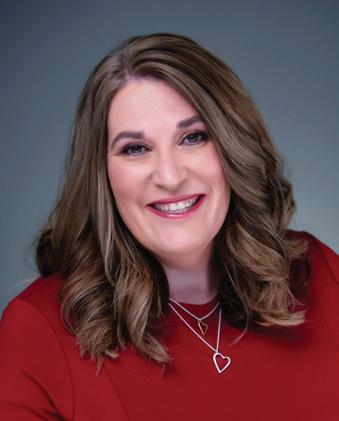
Valerie Moore is a family law attorney from Lenexa, Kansas. She graduated from Kansas State University and Washburn School of Law. She is a past president of the KBA Family Law Section, a Fellow in the American Academy of Matrimonial Lawyers, past president of the Johnson County Family Law American Inn of Court, and the Johnson County Family Law Committee.
References
1. K.S.A. 23-2501
2. K.S.A. 23-2508
3. National Bank of Andover v. Kansas Bankers Surety Co., 290 Kan. 247, 257, 225 P.3d 707 (2010) (quoting Kansas Gas & Electric Co. v. Will Investments, Inc., 261 Kan. 125, 129, 928 P.2d 73 (1996)).
4. 186 Kan. 311, 326, 350 P.2d 1 (1960).
5. 254 Kan. 814, 826, 869 P.2d 661 (1994) (quoting Herbst v. Herbst, 211 Kan. 163, 163, 505 P.2d 294 (1973)).
6. 530 U.S. 57, 66, 120 S. Ct. 2054, 147 L. Ed. 2d 49 (2000).
7. Id.
8. See Social Security Administration, Same-Sex Couples, https:// www.ssa.gov/people/same-sexcouples/ (last visited Sept. 19, 2021).
9. Legislative Reference Bureau, State Constitution, Art. I, Section 23, https://lrb.hawaii.gov/constitution#articlei (last visited Sept. 19, 2021).
10. Goodridge v. Dept. of Public Health, 798 N.E.2d 941 (Mass. 2003).
11. Constitution of the State of Kansas, https://www.sos.ks.gov/ other/pubs/KS_Constitution.pdf (last visited Sept. 19, 2021).
12. United States v. Windsor 570 U.S. 744, 775, 133 S. Ct. 2675, 186 L. Ed. 2d 808 (2013).
13. Obergefell v. Hodges, 576 U.S. 644, 680-681,135 S. Ct. 2584 (2015).
14. United States Consensus Bureau, Unmarried-Partner Households by Sex of Partner (2012), https://data.census.gov/cedsci/ table?q=2012%20same%20sex%20couples&tid=ACSDT1Y2012. B11009.
15. United States Consensus Bureau, Couples Households by Type (2019), https://data.census.gov/cedsci/table?q=same-sex%20 couples&tid=ACSDT1Y2019.B11009.
16. Pew Research Center, Number of U.S. adults cohabiting with a partner continues to rise, especially among those 50 and older (Apr. 6, 2017), http://www.pewresearch.org/fact-tank/2017/04/06/ number-of-u-s-adults-cohabiting-with-a-partner-continues-torise-especially-among-those-50-and-older/.
17. K.S.A. 59-2113
18. In re Adoption of I.M., 48 Kan.App.2d 343 at 348 (2012)
19. K.S.A. 23-2204(b)(1)
20. https://www.kdheks.gov/vital/download/vs211_court_paternity_ consent.pdf
21. 296 Kan. 730, 732, 295 P.3d 542 (2013).
22. Id.
23. Id. at 733.
24. Id.
25. Id. at 734.
26. Id.
27. Id. at 747
28. Id. at 731; 751.
29. Id. at 755.
30. Downs v. Gilmore, No. 108, 176, 2013 WL 1010667, at *2 (Kan. App. 2013)(unpublished)
31. Id.
32. Id
33. Id.
34. Id. at 4.
35. No. 108, 778, 2013 WL 2972697, at *1 (Kan. App. 2013) (unpublished).
36. Id
37. Id
38. Id
39. Id
40. Id. at 2.
41. K.S.A. 38-1114 was re-numbered to be K.S.A. 23-2208
42. Id. at 3.
43. Id.
44. No. 118,067, 2018 WL 1659927, at *6 (Kan. App., 2018) (unpublished).
45. 56 Kan. App. 2d 958, 441 P.3d 495 (2019)
46. Id. at 963-964.
47. Id. at 960.
48. Id. at 961.
49. Id. at 961-962.
50. Id. at 962.
51. Id.
52. Id. at 962-963.
53. Id. at 963-964.
54. Id. at 966-967.
55. Id. at 966.
56. Id. at 974.
57. Matter of M.F. by and through K.L., 312 Kan. 322, 324, 475 P.3d 642 (2020).
58. Id.
59. Id. at 325.
60. Id.
61. Id. at 327.
62. Id. at 323.
63. Id.
64. Id. at 339.
65. Id
66. Id. at 323.
67. Id. at 342.
68. Id. at 350.
69. Frazier at 557.
70. Matter of M.F., 312 Kan. at 348-349.
71. Id. at 351-352.
72. Id. at 352.
73. 312 Kan. at 382 .
74. Id. at 383.
75. Id. at 383-384.
76. Id. at 381-382.
77. Matter of M.F., 312 Kan. at 341.
78. Id. at 350.
79. Id. at 351.
80. K.S.A. 23-2208(c)
81. Matter of M.F., 312 Kan. at 352.
82. Frazier, 296 Kan. at 754.
83. Matter of M.F., 312 Kan. at 323.
84. Nat’l Conference of Comm’rs on Uniform State Laws, Uniform Parentage Act (2017), https://www.uniformlaws. org/HigherLogic/System/DownloadDocumentFile. ashx?DocumentFileKey=e4a82c2a-f7cc-b33e-ed6847ba88c36d92&forceDialog=0 (last visited Oct. 21, 2021).
85. Id.
86. Matter of M.F., 312 Kan. at 323.
www.ksbar.org | May/June 2022 49
nontraditional family law

MEMBERS in the news
NEW POSITIONS
Charles D. Lee has become partner at Lee Law, LLC in Overland Park, Kansas. He brings more than 40 years of business and litigation experience to the firm. His practice is primarily devoted to the representation of mid-sized banks and agricultural and business entities. He is licensed to practice in the Federal and District Courts of Kansas and Colorado, as well as the 10th Circuit Court of Appeals. He also serves as an arbitrator for the American Association and is a fellow with Litigation Counsel of America.
Tyler M. Waugh has joined the Kansas City, Missouri office of Sandberg Phoenix. He is a member of the firm’s Products Liability and Business Litigation practice groups. Waugh received his J.D. degree from the University of Missouri –Kansas City School of Law, cum laude (2018), and his B.S. in American Government Education and Pre-Law minor from St. Ambrose University, graduating cum laude.
NEW LOCATIONS
Foulston Siefkin LLP will relocate its Overland Park office to the 14th floor of Lighton Tower, near College and Metcalf in June 2022. “Overland Park is a dynamic community and a great place for us,” said Tony Rupp, the partner-incharge. “We represent businesses, health care providers and governmental entities in the Kansas City area, and this great location is a fit for us.” The floor’s efficient configuration allows Foulston to reduce its footprint by about 5,000 sq. ft. from its current location in Corporate Woods while offering great amenities as the firm plans for continued growth.
NOTABLES
Hon. Lawton R. Nuss former chief justice of the Kansas Supreme Court, has an article published in the UMKC Law Review, Volume 90, Number 3, Spring 2022. Titled “Reflections and Reactions Regarding the Model Veterans Treatment Court Act,” the article offers guidance to those states and territories considering the creation of new veterans’ treatment courts and the enhancement of existing ones. u
classified advertisements
POSITIONS AVAILABLE
Lawyers Needed. Montgomery County, Kansas, seeks attorneys to serve the area. Legal opportunities are vast. The high demand practice areas are general practice, criminal defense and domestic matters. Legal and general office space available. Potential for student loan repayment assistance. Take this opportunity to build a fulfilling career while enjoying the pleasures of small town life in Southeast Kansas with affordable cost of living and minimal commutes.
Contact: Joslyn M. Kusiak, jkusiak@kellykusiaklaw.com; Jeffrey A. Chubb, jchubb@sehc-law.com; Paul M. Kritz, pmkritz@sbcglobal.net
Monnat & Spurrier, Chartered – Criminal Defense Trial Lawyers. Interested in working at a firm that handles many high-profile criminal jury trials? Monnat & Spurrier, Chartered, is seeking an associate attorney who will be involved in the frequent preparation and trial of criminal cases throughout the state and elsewhere. Salary is commensurate with trial experience and abilities ($90,000 to $125,000). Apply by sending resume to dan.monnat@monnat.com u

50 The Journal of the Kansas Bar Association
Interested in placing a Classified Ad in the KBA Journal? COST: FREE for KBA Members $25/publication for non-members Word count: 75-100 words (Editor reserves the right to edit for space.) Simply email your preferred copy to: Editor@ksbar.org.
RICHARD V. FOOTE
(2/5/1930 – 3/22/2022)

Richard V. “Dick” Foote, a loving husband, father and a longtime Wichita lawyer, died Tuesday, March 22, 2022, in Wichita. He was 92. Foote was born in Winfield on February 5, 1930, to Ernest Edward and Luva Gladys (Van Huss) Foote, who owned a hardware and feed store in nearby Atlanta. In 1948, Foote graduated from Atlanta High School, where he played on the basketball team. He then enrolled in Arkansas City Junior College (now Cowley College) but soon found that he was not well-prepared for college work. Much of his education had taken place during World War II when labor shortages made it hard to attract qualified teachers to rural towns like Atlanta. A junior college teacher, Pauline B. Sleeth, tutored him along with some other students – on her own time – to prepare them for higher education. Foote remembered this kindness for the rest of his life. He graduated from junior college in 1950 and completed his third year of college at Wichita University. His education was then interrupted by the Korean War. Foote was drafted, but rather than accepting a standard two-year enlistment in the Army he volunteered for a three-year enlistment in the Marines after a recruiter told Foote that he was likely to get a better job if he did so. The recruiter was right. Foote was initially stationed in San Francisco, but the Marines soon sent him to Indianapolis, where he learned punch-card accounting at an IBM training facility. Foote spent his remaining time in the Marines working with IBM machines in Washington, D.C. Foote was intensely proud of his service in the Marines and spoke often of it in later life. In Washington, he led a unit that kept a punch-card record of every Marine in the Corps. With this information, his group was instrumental in selecting members for a Third Division of Marines that was activated during the war. In early 1953, Foote stood guard at the inauguration of President Eisenhower. Foote also worked on a finance project with Gen. David M. Shoup, a Medal of Honor recipient who would later become Commandant of the Marine Corps. The fact that Gen. Shoup was willing to bring hamburgers from the mess hall to his hard-working underlings in the computer room was a lesson in humble leadership that Foote never forgot. After his honorable discharge from the Marines in 1954, Foote returned to Wichita University for his final year of college. At a fateful party that year he met his future wife, Lois Earlene Moore. Both Foote and Earlene graduated from WU in 1955. Foote then started law school at Washburn University, and he and Earlene were married in January 1956. They remained happily married for 65 years, until her death at 91 in March 2021.
In 1958, Foote graduated from Washburn and began a 50year career practicing law in Wichita. He specialized in
property law, a subject in which he won a citation for excellent grades in law school. As a young lawyer, he appreciated the mentoring he received from older lawyers, and he would go on to mentor several young lawyers himself as his career progressed. Foote’s service to the Wichita Bar Association included a term on its Board of Governors and memberships on several committees, including the Title Standards and the Ethics committees. In 2011, he received the WBA’s Howard C. Kline Distinguished Service Award, given annually to a lawyer “whose qualifications and accomplishments are undeniably exemplary and whose services are widely acclaimed as having made significant contributions to the honor and practice of the law.” Foote also kept busy outside of his law practice. He was a part-owner and board member for banks in Valley Center and Whitewater. He restored two 1929 Model A Fords and was a longtime member of the Wichita A’s Model A club. He was active in several Masonic organizations, including the Wichita Consistory, the Blue Lodge and the Shrine. For many years, Foote served as the Vice-Chancellor of the Episcopal Diocese of Kansas. Above all, however, Foote was devoted to his family. He and Earlene had two sons, John Foote of Wichita and Christopher Foote (Bonnie Cockman) of Somerville, Massachusetts. They also had a foster daughter, Karyn (Vernon) Sissom of Douglass, Kansas, who lived with the family as a teenager in the late 1960s. Early in their marriage, Foote and Earlene purchased a house on a large parcel of land that backed up to the Little Arkansas River north of Wichita. It was an ideal place for John and Chris to grow up, with plenty of room to play – and enough room for Foote to build a garage (with his own hands) for his two Model As. Later, when the sons reached high-school age, the family moved to the Rockwood area of East Wichita. John, Chris and Karyn found that their Dad always had time for them. John and Chris fondly remember the time they shared with their Dad growing up – the countless rides home from swim practice, the monthly camping trips with the Boy Scouts (where their Dad was an assistant scoutmaster), riding in their Dad’s Model As during parades and the occasional evening thunderstorms the three of them would watch through the boys’ bedroom window. Karyn remembers her Dad as a consistently supportive confidante, confessor, teacher, spiritual guide, friend, mentor and the only real dad she ever knew. He always knew how to catch her when she erred, and gently guide her to improve, even when that involved pesky boyfriends rapping on her bedroom window. For John, Karyn and Chris, their Dad’s life is an example of a life well-lived, filled with hard work, kindness and love. In addition to his sons and foster daughter, Foote is survived by a brother, Ted E Foote of Mint Hill, North Carolina; a cousin, Jerry Foote of West Columbia, Texas; and numerous other relatives. A memorial service will take place later this spring at St. Stephen’s Episcopal Church. In lieu of flowers, a memorial has been established with St. Stephen’s Episcopal Church, 7404 E. Killarney Pl., Wichita, Kansas 67206. Services in care of Downing & Lahey Mortuary – East Chapel. u
www.ksbar.org | May/June 2022 51 obituaries
Kansas State Supreme Court
JUDICIAL DISCIPLINE RETURN
TO JUDICIAL
DUTIES
IN RE F. WILLIAM CULLINS
NO. 122,565 – MARCH 31, 2022
FACTS: In February 2021, Judge Cullins was suspended from judicial duties for one year. In June of that year, the court conditionally stayed the remainder of the suspension as long as Judge Cullins complied with his plan for training and counseling. After that period expired, Judge Cullins moved for a formal discharge of the suspension.
HELD: There was no objection to the suspension being lifted and the court received official declarations of Judge Cullins’ successful completion. Accordingly, the court grants the motion and lifts the suspension. Judge Cullins is discharged from the terms and conditions of his training plan.
ATTORNEY DISCIPLINE
THREE-YEAR SUSPENSION, STAYED IN RE DANIEL J. MARTINEZ
NO. 124,395 – APRIL 1, 2022
FACTS: In October 2020, the Disciplinary Administrator filed a formal complaint against Martinez. A hearing panel determined that Martinez violated KRPC 1.1 (competence); 1.4 (communication); 1.5 (fees); 1.15 (safekeeping property); 1.16 (terminating representation); 7.1 (communications concerning a lawyer’s services); and 8.4 (professional misconduct). Martinez was convicted of misdemeanor domestic battery in 2013; he successfully completed a diversion program. Martinez’ ex-wife filed a second criminal complaint alleging domestic battery in February 2019. Martinez continues to deny misconduct, but he pled guilty to an amended charge of disorderly conduct and received probation. Martinez also failed to file both his personal and business taxes and mishandled attorney fees with a client.
HEARING PANEL: The hearing panel was concerned by Martinez’ breach of duty to his clients and his failure to maintain his personal integrity. The panel also noted the dishonest or selfish motivation for the behavior and the multiple offenses. But the panel also found mitigating factors including a tumultuous personal life, mental health concerns and attempts to make restitution. The Disciplinary Administrator recommended a two-year suspension. Martinez recommended an indefinite suspension but that the suspension be stayed so that he could complete a probation term. The panel found that Martinez supplied a workable, substantial and detailed probation plan and that his misconduct could be corrected by probation. After considering all factors, the hearing panel recommended a threeyear suspension with imposition stayed so that Martinez can serve a three-year term of probation.
HELD: There were no exceptions to the hearing panel report, so it is deemed admitted. That report proves rule violations by clear and convincing evidence. At argument, the Disciplinary Administrator recommended following the hearing panel’s report and Martinez agreed. A majority of the court imposed the agreed-upon three-year suspension with imposition stayed pending successful completion of a three-year term of probation. A minority of the court would have required Martinez to serve a term of un-stayed suspension.
SIX-MONTH SUSPENSION
IN RE SCOTT M. MCFALL
NO. 116,541 – MARCH 18, 2022
FACTS: The Disciplinary Administrator filed a formal complaint against McFall in May 2016, alleging violations of KRPC 1.3 (diligence); 1.4(a) (communication); 8.4(c) (misconduct involving dishonesty or misrepresentation); and 8.4(d) (misconduct) as well as Supreme Court Rule 210(a) (duties). The case was docketed, and McFall took no exception to the hearing panel report. Just prior to oral argument, McFall filed an unopposed petition to transfer his license to disability inactive status. The Supreme Court transferred McFall to disability inactive status in January 2017, with directions. No action was taken for three years and in February 2021, the Supreme Court asked all parties to file a report on the status of the case. McFall did not respond to the request, so the court ordered him to show cause why he failed to comply. Following that hearing, the court removed McFall from disability inactive status and temporarily suspended his license. After a hearing, the panel produced a supplemental hearing report. The original discipline arose after McFall failed to file an appeal on behalf of a client convicted of first-degree murder. McFall entered into a diversion agreement but failed to comply with the terms of that agreement. After additional complaints were received, including one self-reported by McFall, the diversion agreement was revoked. McFall also appeared in court after his license was administratively suspended for failing to comply with annual registration requirements.
HEARING PANEL: The panel noted that McFall routinely failed to cooperate in the investigation of pending complaints against him. In addition, the supplemental investigation disclosed two issues relating to McFall’s finances. He also failed to communicate with clients and did not act diligently on their behalf. When considering discipline, the panel noted that McFall’s clients suffered little to no actual harm. There was a pattern of misconduct across multiple offenses. There were also mitigating factors including significant personal and emotional problems spanning many years. McFall sought help for his personal issues and is working with KALAP. The disciplinary administrator sought a six-month suspension, with a reinstatement hearing before returning. McFall concurred with that recommendation.
52 The Journal of the Kansas Bar Association
opinion digests are available on the KBA website at www.ksbar.org/digests . If you do not have access to the KBA members-only site, or if your email address or other
member and communication services at info@ksbar.org or at
234-5696. For the full
All
contact information has changed, please contact
(785)
text of opinions, access the courts’ website at www.kscourts.org. appellate decisions
The hearing panel ultimately recommended the six-month suspension.
HELD: McFall filed no exceptions to the report. The court agreed with the joint recommendation of a six-month suspension, with a reinstatement hearing prior to being allowed to practice again. McFall must also undergo an evaluation and attend weekly A.A. meetings.
CIVIL ESTOPPEL; OIL AND GAS
FAWCETT TRUST V. OIL PRODUCERS INC. OF KANSAS
SEWARD DISTRICT COURT – COURT OF APPEALS IS AFFIRMED, DISTRICT COURT IS AFFIRMED
NO. 120,611 – APRIL 15, 2022
FACTS: The Fawcett Trust is the named plaintiff of a Class composed of more than 2,000 Kansas royalty owners with mineral rights in Seward County. The Class members lease their rights to Oil Producers Inc. of Kansas in exchange for a royalty interest in the oil and gas produced. OPIK produces raw natural gas from the wellheads and then, if necessary, processes the gas so it is suitable for the interstate pipeline. OPIK does not do this work itself; it sells the raw natural gas at the wellhead to third-party purchasers who process and prepare the gas for the interstate market. These third-party purchasers pay OPIK based on a formula. OPIK then calculates royalties owed to the Class based on the actual proceeds it receives, minus taxes. In a prior appeal, the Kansas Supreme Court clarified that OPIK owed a duty to the Class to market the gas it produced. The question of what it means for gas to be “marketable” is a factual question. Under these circumstances, OPIK satisfied its duty to market when it sold the gas at the wellhead. The Kansas Supreme Court remanded the first appeal to the district court, and the Class moved to amend its petition. The Class read the opinion to impose, for the first time, a rule clarifying that the marketable condition rule includes an implied duty of good faith and fair dealing. The Class wanted to amend its petition to allege a breach of OPIK’s duty of good faith and fair dealing by selling gas that was not in a condition suitable for the interstate pipeline. The district court denied the motion to amend, finding that action fell outside the limits of the mandate, and the Court of Appeals affirmed. The Class’ petition for review was granted.
ISSUES: (1) Amendment of petition; (2) summary judgment on duty to market claim; (3) use of specific statute covering prejudgment interest; (4) equitable estoppel
HELD: The district court properly denied the motion to amend under the law of the case doctrine. The court’s comments about the implied duty of good faith and fair dealing did not create a new rule. In the prior appeal, the Supreme Court rejected the Class’ contention that gas was not in marketable condition until it was suitable for the interstate pipeline, and it clarified that OPIK did not bear sole responsibility for paying to get the gas into interstate condition. For this reason, the law of the case doctrine supports the district court’s grant of summary judgment to OPIK. It was undisputed that the Class was entitled to a refund of conservation fees that OPIK wrongly deducted from royalty
payments. The Class also sought a flat 10 percent annual interest rate for that judgment, citing K.S.A. 16-201, but the district court correctly applied K.S.A. 55-1615, a more specific statute which covers interest for payments made in oil and gas cases. And under that statute, the Class is not entitled to prejudgment interest. The district court correctly applied the equitable estoppel doctrine to OPIK’s statute of limitation defense.
STATUTES: K.S.A. 16-201, 20-108, 55-1614(h), -1615, 602106(c)
HABEAS CORPUS
DRENNAN V. STATE
SEDGWICK DISTRICT COURT – AFFIRMED
NO. 114,395 – MARCH 25, 2022
FACTS: In 2003, Drennan was convicted of first-degree murder. He received a hard 50 life sentence, and his conviction and sentence were affirmed on appeal. After filing several postconviction proceedings, Drennan filed a third K.S.A. 60-1507 motion in which he alleged his sentence was unconstitutional and illegal. He also filed a separate K.S.A. 22-3504 motion to attack his illegal sentence. These motions were denied and Drennan appealed.
ISSUES: (1) Constitutionality of hard 50 sentence; (2) illegality of sentence under Apprendi
HELD: This third 60-1507 motion was filed more than nine years after Drennan’s direct appeal became final. There are no exceptions which apply to excuse the fact that this 60-1507 motion is both untimely and successive, and the district court correctly denied the motion. The legality of a sentence is determined at the time it is pronounced. Drennan has misconstrued the law. His sentence was not illegal at the time it was pronounced, even if the law was later changed. Drennan’s sentence is not illegal, and the district court is affirmed.
STATUTES: K.S.A. 2020 Supp. 21-6628(c), 22-3504(a), 60-1507
STATUTORY CONSTRUCTION; WORKERS COMPENSATION
SCHMIDT V. TRADEMARK, INC.
SEDGWICK DISTRICT COURT – COURT OF APPEALS IS AFFIRMED, DISTRICT COURT IS AFFIRMED
NO. 122,078 – MARCH 18, 2022
FACTS: In December 2016, Juan Medina was injured while working for the Ballin Company as a subcontractor of Trademark, the general contractor on the project. Medina brought a workers compensation claim against Ballin for payment of medical treatment and other benefits, but Ballin lacked workers compensation insurance, so the Kansas Workers Compensation Fund was impleaded as a party. The Fund attempted to implead Trademark, but that request was denied. The ALJ ordered the Fund to pay Medina almost $25,000 in compensation and medical benefits, plus some administrative costs. The Fund then filed this civil action against Trademark, attempting to recoup costs paid to Medina. The parties filed dueling motions for summary judgment and the district court granted the Fund’s motion on costs but denied the Fund’s motion for attorney fees, citing the absence of any contractual or statutory provision allowing for
www.ksbar.org | May/June 2022 53 u
that recovery. Trademark appealed the award and the Fund crossappealed the denial of its motion for attorney fees. The Court of Appeals affirmed the district court’s ruling on both counts and both Trademark and the Fund petitioned for review.
ISSUES: (1) Interpretation of K.S.A. 2020 Supp. 44-532a; (2) obligation to pay attorney fees
HELD: The word “employer” as used in the statutes has different meanings depending on context, especially where multiple “employers” are involved. Since the statutes are ambiguous, the court must apply the rules of construction to determine the limits of subcontractor versus principal liability. The court looks to persuasive dicta from a prior opinion and concludes that the term “employer” need not refer to the same party, especially when a principal and a subcontractor are involved. The district court did not err by finding Trademark liable. Both the district court and Court of Appeals correctly found that the Fund cannot recover attorney fees. The plain language of K.S.A. 2020 Supp. 44-532a(b) makes no mention of attorney fees, meaning the Fund cannot recover those fees.
CONCURRENCE: (Stegall, J.) The statutory scheme is not ambiguous. The proper way to read the statute is to substitute the word “principal” for the word “employer” and proceed from there. The result is the same; Trademark is liable for costs paid by the Fund on Medina’s behalf.
STATUTES:
K.S.A. 2020 Supp. 44-501b(a), -508(a), -532a, -532a(a), -532a(b); K.S.A. 44-503, -503(a)
CIVIL PROCEDURE; HABEAS CORPUS
DENNEY V. NORWOOD
LABETTE DISTRICT COURT – COURT OF APPEALS IS AFFIRMED, DISTRICT COURT IS AFFIRMED
NO. 121,888 – MARCH 11, 2022
FACTS: Denney is serving a hard 30 sentence, plus an additional six to 20 years, for 1993 convictions for aggravated sexual battery, aggravated criminal sodomy, and an aggravated weapons violation. Recently, Denney filed a K.S.A. 60-1501 petition alleging that the Kansas Department of Corrections erred by relying on the Kansas Offender Registration Act to classify and manage him as a sex offender within the prison. Denney claimed that none of the definitions of “sex offender” applied to him, and he asked the district court to enter a declaratory judgment that KORA did not apply to him and that he need not be managed as a sex offender. Finding that Denney may have a right to relief, the district court issued a writ of habeas corpus and ordered the Secretary of Corrections to respond. The response indicated that Denney was being managed as a sex offender not under KORA but under KDOC Internal Management Policy Procedures. The district court dismissed the 60-1501 petition, concluding Denney could be managed as a sex offender under an IMPP. On appeal, a panel of the Court of Appeals noted that KDOC moved to dismiss Denney’s 60-1501 petition through a K.S.A. 60-212(b)(6) motion for failure to state a claim. Through that framework, the panel affirmed the district court. Denney’s petition for review was granted.
ISSUES: (1) Use of civil procedure in habeas corpus proceedings; (2) whether a constitutional injury exists
HELD: Proceedings on a petition for writ of habeas corpus filed under K.S.A. 60-1501 are not subject to ordinary rules of civil procedure. Specifically, K.S.A. 60-212(b)(6) and K.S.A. 60-256 do not apply. Courts should apply the legal framework established in Article 15 of Chapter 60. The district court properly dismissed Denney’s K.S.A. 60-1501 petition because the pleadings showed he was not entitled to relief. Uncontroverted evidence showed that Denney is under sentence for several sex offenses and that IMPP 11-115A allows him to be managed as a sex offender. Denney also cannot show any cognizable injury which stems from his treatment. The evidence in the case shows Denney is not entitled to relief and the writ was properly dissolved.
STATUTES: K.S.A. 2020 Supp. 60-212(b)(6), -256, -1501, -1503, -1505; K.S.A. 60-1504
CRIMINAL
APPEALS – CONSTITUTIONAL LAW – CRIMINAL LAW –EVIDENCE – FOURTH AMENDMENT – STATUTES
STATE V. GOODRO
RENO DISTRICT COURT – AFFIRMED; COURT OF APPEALS – AFFIRMED
NO. 121,944 – APRIL 1, 2022
FACTS: For Walmart theft Goodro was arrested after giving police officer a wrong last name, saying she lived in another county, and indicating she had transportation problems. Officer also found Goodro had a prior theft conviction and a prior failure to appear. Drugs and paraphernalia discovered in inventory and strip search. Goodro filed motion to suppress, arguing her warrantless arrest for misdemeanor threat violated K.S.A. 22-2401(c)(2)(A) because officer lacked probable cause to believe Goodro would not be apprehended if not immediately arrested. She further argued for application of the exclusionary rule. District court denied the motion and convicted Goodro of felony possession of methamphetamine, possession of drug paraphernalia and misdemeanor theft. Court of Appeals affirmed in unpublished opinion, finding the wrong legal name and prior theft conviction constituted sufficient probable cause for the arrest, even though Goodro’s transportation problems and prior failure to appear did not. Goodro’s petition for review granted.
ISSUES: (1) Kansas Misdemeanor Arrest; (2) Fourth Amendment
HELD: Under totality of the circumstances existing at time of the arrest, officer had probable cause to believe that Goodro committed misdemeanor theft and that Goodro would not be apprehended unless immediately arrested. Divide-and-conquer analysis applied by Court of Appeals panel is criticized.
Constitutional remedy issue is not considered. Goodro did not substantively argue to district court, to Court of Appeals, or in her petition for review of why the exclusionary rule would be a proper remedy for violating the misdemeanor arrest statute.
STATUTES: K.S.A. 22-2401(c)(2)(A), -3216(2)
54 The Journal of the Kansas Bar Association
t
appellate decisions
POSTCONVICTION RELIEF; SENTENCE
STATE V. GLEASON
JEFFERSON DISTRICT COURT – AFFIRMED
NO. 123,570 – MARCH 18, 2022
FACTS: Gleason was convicted of felony murder in 1999 following a home invasion burglary during which the homeowner was shot and killed. Gleason’s conviction was affirmed on appeal. In 2019, Gleason filed both a motion under K.S.A. 2020 Supp. 60-260 to set aside a void judgment and a motion to correct an illegal sentence. Gleason claimed his conviction and sentence were void because an initial charge of aggravated robbery was filed after the statute of limitations had elapsed. The district court denied Gleason’s motions and he appealed.
ISSUES: (1) Use of civil statute as postconviction relief; (2) legality of Gleason’s conviction
HELD: A criminal defendant cannot use K.S.A. 2020 Supp. 60-260(b)(4) to obtain postconviction relief. Even though the original complaint did charge a crime outside the statute of limitations, the district court still had jurisdiction to hear this case. The statute of limitations is not a jurisdictional bar, it is more an affirmative defense. Gleason waived any statute of limitations defense by failing to object at trial. And even had the defense not been waived Gleason can still not succeed on appeal. The State amended the initial armed robbery charge to a count of felony murder, which has no statute of limitations.
STATUTES: K.S.A. 2020 Supp. 22-3504, 60-260(b)(4); K.S.A. 222601
APPELLATE PROCEDURE – CRIMINAL LAW –CRIMINAL PROCEDURE – EVIDENCE – MOTIONS –SENTENCING
STATE V. GREEN
GEARY DISTRICT COURT – AFFIRMED
NO. 123,419 – MARCH 11, 2022
FACTS: Green convicted on guilty plea to two counts of felony first-degree murder. Two weeks before sentencing he filed motion for a continuance, citing mother in New Jersey who wanted to testify on his behalf but did not want to travel due to Covid concerns. District court denied the motion but granted Green’s alternative request to allow Green’s mother to appear via remote video. District court imposed consecutive hard 25 life sentences, citing Green’s commission of the crimes because a third person promised to pay him $1,000 for the execution. Green appealed, challenging the validity of imposing consecutive rather than concurrent sentences. He first claimed insufficient facts supported district court’s determination that Green killed the victim in hope of receiving financial compensation. He also claimed he was denied due process when district court refused to continue the sentencing hearing to allow Green’s mother to testify in person.
ISSUES: (1) Sentencing Court’s Finding of Murder For Hire; (2) Due Process
HELD: Based on prosecutor’s argument at sentencing, and on Green’s statements at the plea hearing, during interrogation and in his phone call to wife, the district court had ample factual basis for its determination that Green committed the murder for hire.
Green’s due process claim is not properly preserved for appellate review because he raised no contemporaneous objection to holding his mother’s statement by video. Green also invited the error by his alternative request for videoconferencing. Sentence imposed by district court is affirmed.
STATUTES: K.S.A. 2020 Supp. 21-5401, -5419; K.S.A. 22-3401
APPELLATE PROCEDURE – CONSTITUTIONAL LAW –CRIMINAL PROCEDURE – POSTJUDGMENT MOTIONS
– SENTENCING – STATUTES
STATE V. MITCHELL
JOHNSON DISTRICT COURT – AFFIRMED NO. 119,747 – MARCH 11, 2022
FACTS: Mitchell convicted in 1988 of aggravated burglary, aggravated kidnapping, rape and aggravated sodomy. No relief granted on his various post-judgment motions. Mitchell then filed a pro se motion under K.S.A. 22-3504 to correct an illegal sentence, arguing in part his sentence was illegal because he was denied his statutory right to a speedy trial, and was denied his right to allocution at sentencing. District court summarily denied the motion. Mitchell appealed.
ISSUES: (1) Motion to Correct an Illegal Sentence; (2) K.S.A. 601507 Motion
HELD: Mitchell’s speedy trial and allocution claims do not give rise to a claim of an illegal sentence under K.S.A. 22-3504.
Even if Mitchell’s pro se motion is liberally construed as filed under K.S.A. 60-1507, the motion would be untimely because Mitchell made no showing of manifest injustice to circumvent the one-year time limitation. Mitchell also failed to prove the requisite exceptional circumstances excused his filing of a successive motion.
STATUTES: K.S.A. 2020 Supp. 22-3504, -3504(c)(1), 60-1507(c); K.S.A. 60-1507, -1507(c), -1507(f)
ATTORNEY AND CLIENT – CRIMINAL PROCEDURE –POSTJUDGMENT MOTIONS
STATE V SHIELDS
NEOSHO DISTRICT COURT – AFFIRMED NO. 122,925 – MARCH 4, 2022
FACTS: Shields entered no contest plea to first-degree felony murder. He filed post-judgment motion to withdraw his plea, alleging ineffective assistance of trial counsel related to Shields’ agreement and his plea. State District Court denied the motion, finding Shields failed to show a manifest injustice in the plea in need of correction. Shields appealed claiming: (1) he did not have adequate time to review the plea agreement; and (2) he did not have the chance to review all State evidence against him before entering his plea.
ISSUES: Post-judgment Motion to Withdraw Plea
HELD: Substantial competent evidence supports district court’s finding that Shields understood the plea agreement’s terms and knew its consequences before he entered into it, and that Shields was represented by competent counsel who was not ineffective in the manner Shields alleged. Core of Shields’ claim is district court’s
www.ksbar.org | May/June 2022 55 u
appellate decisions
weighing of competing testimonies. Shields fails to establish any abuse of district court’s discretion in denying the motion.
STATUTES: K.S.A. 2020 Supp. 22-3210(d)(2)
APPELLATE PROCEDURE – CRIMINAL PROCEDURE –POSTJUDGMENT MOTIONS
STATE V. SMITH
MCPHERSON DISTRICT COURT – AFFIRMED
NO. 122,773 – MARCH 4, 2022
FACTS: Smith convicted on no contest plea to first-degree murder. Seven years later he filed motion to withdraw plea. District court summarily denied the motion as untimely, finding no showing of excusable neglect to extend time to file a motion. Smith appealed, asking for case to be sent back to district court for an evidentiary hearing to determine excusable neglect. Supreme Court granted Smith’s motion for a stay and request for a remand to district court to recreate record of plea hearing and sentencing.
ISSUES: (1) Record on Appeal; (2) Motion to Withdraw Plea
HELD: Smith filed 2020 status report stating that a joint affidavit recreating the necessary records had been filed with district court. Supreme Court issued order noting the status report and stating the affidavit was now part of the record on appeal. Smith’s appellate counsel’s argument that the recreated record did not comply with the rules is not supported by the record. The affidavit is a valid part of the record with same weight as an official transcript of the plea and sentencing hearings.
Before district and appellate courts Smith claimed trial counsel: failed to thoroughly investigate Smith’s mental capacity and competence to enter a plea; was ineffective and pressured him to accept a plea deal; and failed to inform Smith of his right to appeal. These substantive claims are not supported by the record, and none show excusable neglect for his failure to file his motion within the one-year statutory time limit. District court’s denial of the motion is affirmed.
STATUTES: K.S.A. 2020 Supp. 22-3210, -3210(e), -3210(e)(1), -3210(e)(2), -3608(c)
CAPITAL CRIMES – CONSTITUTIONAL LAW –CRIMINAL LAW – JURY INSTRUCTIONS – JUVENILES –PROSECUTORS – SENTENCING – STATUTES
STATE V. GULLEY
SEDGWICK DISTRICT COURT – AFFIRMED NO. 122,271 – MARCH 4, 2022
FACTS: Tried as an adult, Gulley was convicted of committing first-degree premeditated murder and aggravated robbery when he was 15. Sentencing court-imposed life in prison without possibility of parole for 618 months for the murder conviction, and a consecutive 61-month prison term for the robbery. Gulley appealed his convictions and sentence claiming: (1) district court should have instructed jury on voluntary manslaughter-heat of passion as lesser included offense of first-degree murder, citing his sudden quarrel with the shooting victim; (2) prosecutor in closing argument improperly commented on Gulley’s credibility and trial performance; (3) cumulative error denied him a fair trial; and (4) the life sentence imposed is functionally equivalent
to life without parole, in violation of Eighth Amendment under principles stated in Miller v. Alabama, 567 U.S. 460 (2012).
ISSUES: (1) Jury Instruction on Lesser Included Offense; (2) Prosecutorial Error; (3) Cumulative Error; (4) Constitutionality of the Life Sentence Imposed
HELD: State’s claim of invited error is rejected. An instruction on voluntary manslaughter was factually inappropriate. Even if a sudden quarrel before the shooting is assumed, Gulley fails to explain how this constituted legally sufficient provocation. His request to overrule Kansas Supreme Court holding that words alone are insufficient provocation to support a voluntary manslaughter instruction fails, explaining the difference between voluntary manslaughter and imperfect self-defense.
No showing of prosecutorial error. Statements describing Gulley’s demeanor during trial were not comments on his credibility. And inference that Gulley could not have been pressured into falsely inculpating himself during interrogation, given his trial demeanor during cross-examination, was reasonable enough. Cumulative error doctrine inapplicable where no errors are found.
For the murder conviction the district court found it had no option but to impose a life sentence without possibility of parole for 618 months, the grid’s upper sentence for that crime and Gulley’s criminal history score. Because Gulley is eligible for parole at 66 years old (at 71 years old if robbery sentence is added), Miller is inapplicable. Gulley’s conviction and sentence are affirmed.
CONCURRENCE AND DISSENT (Rosen, J.) (joined by Wall, J.): Agrees there was no trial error, but finds a sentencing error was overlooked. Gulley’s grid box sentencing range was 554 to 618 months, and district court misinterpreted K.S.A. 2020 Supp. 21-6620(c)(1)(B) as mandating the highest grid option. Would interpret the statute as a directive to sentencing court to use its discretion to select a low, mid, or high range sentence for the crime, and would remand for resentencing of the appropriate mandatory minimum in Gulley’s case.
DISSENT (Standridge, J.): Relevant law of United States Supreme Court and Kansas on juvenile sentencing is reviewed. Would find Gulley was entitled under Eighth Amendment to have sentencing court consider his diminished culpability and heightened capacity for change before imposing sentence for murder conviction. Miller applies to sentences that are the functional equivalent of life without parole, such as Gulley’s sentence for premeditated murder. Also, the statutory sentencing scheme under which Gulley was sentenced is mandatory – an argument the majority did not address.
STATUTES: K.S.A. 2020 Supp. 21-5404(a), -5404(a)(1), -5404(a) (2), -6620(c)(1)(A), -6620(c)(1)(B), -6620(c)(2)(A), -6623, -6804(e)(1), 22-3504(c)(1); K.S.A. 2018 Supp. 21-6620, -6620(c) (1)(B), -6623, -6804; K.S.A. 1999 Supp. 21-4635, -4635(b), 223717(b)(1)
56 The Journal of the Kansas Bar Association
t
ATTORNEY AND CLIENT – CRIMINAL LAW – CRIMINAL PROCEDURE – MOTIONS – IMMUNITY
STATE V. EVANS
SEDGWICK DISTRICT COURT – AFFIRMED
NO. 123,302 – FEBRUARY 25, 2022
FACTS: Evans convicted of offenses including first-degree murder for shooting victim in the back of head outside a club that had security guards at entrance. A week before trial, defense counsel filed motion for immunity from prosecution, arguing Evans shot victim in self-defense and in defense of family members present in the club after victim threatened inside the club to kill Evans and those family members. District court denied the motion, finding no imminent threat where victim was leaving the premises, had back turned, and did not appear to be making threats at the time. Prior to sentencing Evans filed motion alleging ineffective assistance of trial counsel. Following a hearing the district court denied the motion, finding defense counsel did not coerce Evans and other witnesses to change their stories, and did not withhold exculpatory evidence about the victim’s gun misfiring. Evans appealed, arguing for new trial and a new pretrial immunity hearing because trial counsel was ineffective
by (1) coercing Evans and his witnesses to change their testimony about the victim firing a gun inside the club, and (2) disregarding firearm expert’s testimony about the functionality of victim’s gun.
ISSUES: (1) Ineffective Assistance of Counsel – Coerced Testimony; (2) Ineffective Assistance of Counsel – Disregard of Expert Testimony
HELD: Substantial competent evidence supports district court’s finding that defense counsel did not coerce testimony. District court’s legal conclusion that defense counsel’s performance was not deficient is affirmed.
Substantial competent evidence supports district court’s finding that defense counsel did not disregard expert’s testimony that victim’s gun was non-functional when first examined. Defense counsel specifically addressed the expert’s testimony during closing argument without overemphasizing it in a manner detrimental to theories of self-defense.
STATUTES: No statutes cited.
Kansas Court of Appeals
CIVIL
APPEALS – APPELLATE PROCEDURE – ATTORNEY AND CLIENT – CONSTITUTIONAL LAW – CRIMINAL LAW – CRIMINAL PROCEDURE – EQUAL PROTECTION CLAUSE – SENTENCING – STATUTES
STATE V. MYERS
SEDGWICK DISTRICT COURT – CONVICTIONS
AFFIRMED, SENTENCE VACATED, REMANDED
NO. 123,439 – APRIL 8, 2022
FACTS: In two separate cases, State charged Myers with crimes arising from shootings in February 2017 and April 2018. District court consolidated the cases, finding they were of the same general character. After four appointments of courtappointed counsel Myers asked for a new attorney less than three weeks before jury trial, alleging a complete breakdown of communication. District court denied that request, finding no showing of a justifiable dissatisfaction supporting new counsel. Jury returned guilty verdicts. District court sentenced Myers separately in each case, imposing a controlling 855-month prison sentence. Alleging ineffective assistance of counsel, Myers filed an unsuccessful posttrial motion for a new trial. Myers appealed, arguing: (1) error in consolidating his two cases; (2) error in denying his motion for new counsel; (3) ineffective assistance of trial counsel; (4) his convictions on the 2017 crimes of firstdegree murder and aggravated battery were multiplicitous, as where his convictions on the 2018 crimes of criminal discharge of firearm and aggravated battery; and (5) cumulative error denied him a fair trial. Myers also claimed K.S.A. 2020 Supp. 21-6819(b), as applied in his case to impose separate sentences,
violated the Equal Protection Clause of 14th Amendment of U.S. Constitution. He further claimed error in the calculation of his criminal history score because State failed to provide evidence his prior misdemeanor convictions were counseled.
ISSUES: (1) Consolidation of Cases; (2) Motion for New Counsel; (3) Motion for New Trial; (4) Multiplicitous Convictions; (5) Cumulative Error; (6) Constitutionality of K.S.A. 2020 Supp. 216819(b) As Applied; (7) Criminal History Score
HELD: Statutory test for consolidation is satisfied because State could have initially filed all charges against Myers in a single complaint, and Myers failed to show the district court abused its discretion in consolidating the cases.
Myers did not establish a complete breakdown in communication with defense counsel to warrant appointment of new counsel on eve of trial, and he failed to show the district court’s decision was an abuse of discretion.
District court did not err in denying Myers’ motion for a new trial. The five categories of Myers’ posttrial claims of ineffective assistance of trial counsel are examined, finding no showing that counsel’s performance was deficient.
Myers’ convictions for the 2017 crimes of aggravated battery and attempted first-degree murder are not multiplicitous, as both offenses contain a district element the other does not. Likewise, Myers’ convictions for the 2018 crimes of aggravated battery and criminal discharge of a firearm are not multiplicitous.
www.ksbar.org | May/June 2022 57 u
Cumulative error analysis does not apply where no errors are found.
The constitutional challenge to application of K.S.A. 2020 Supp. 21-6819(b), raised for first time on appeal, is considered. State v. Dixon, 60 Kan.App.2d 100, rev. denied 314 Kan. 856 (2021), is discussed. When State chooses to consolidate two or more criminal cases for trial because all charges could have been brought in one charging document, application of the base sentence rules under K.S.A. 2020 Supp. 21-6819(b) separately in each case violates the Equal Protection Clause. Here, Myers received a sentence 167 months longer than the sentence he would have received for the same convictions had all charges originally been filed in a single complaint. Myers’ sentences are vacated, and case is remanded for resentencing with court designating one primary crime of conviction and only one base sentence for both cases.
State v. Roberts, 314 Kan. 316 (2021), rejected an identical criminal history claim. Myers admitted his criminal history, thus the PSI report met State’s burden of proving the validity of Myers’ prior convictions including the three misdemeanor convictions. Myers is entitled to no relief in this direct appeal because he failed his burden of showing the prior convictions were invalid. He may still move to correct his alleged illegal sentence, to show his misdemeanor convictions were uncounseled, resulting in a different criminal history score and an illegal sentence.
STATUTES: K.S.A. 2020 Supp. 21-5109(b), -5109(b)(2), -5301(a), -5402(a)(1), -5413(b)(1)(A), -6308(a)(1)(A), -6810(a), -6811(a), -6814, -6819(b), -6819(b)(2), -6819(b)(3), -6819(b)(4), -6819(b) (5); K.S.A. 21-3439(a)(4), 22-3202(1), -3203, 60-455
SERVICE OF PROCESS IN RE A.P.
JEFFERSON DISTRICT COURT – AFFIRMED NO. 124,100 – MARCH 18, 2022
FACTS: In May 2019, the State sought to have A.P. declared a child in need of care. The petition did not mention Father – the appellant in this proceeding – but he received notice and attended the CINC adjudication hearing with counsel. Father entered a no contest statement and A.P. was found to be in need of care and remanded to State custody. Father started reintegration efforts but had lingering issues with drug use and a tumultuous relationship with his wife. The case plan goal was changed to termination in September 2020. The State sent its motion to terminate parental rights and the notice of hearing to Father by certified mail. The first effort was returned as undeliverable. The State tried again, and the envelope was received and signed for by Stepmother. Notice was also sent to Father’s counsel. Counsel appeared at the termination hearing and objected, arguing that service on Father was legally deficient because Stepmother, not Father, signed the delivery receipt. The district court rejected that argument and continued with the proceedings, after which Father’s parental rights were terminated. He appealed.
ISSUES: (1) Validity of the State’s service of process
HELD: Father’s constitutionally protected liberty interest in
parenting means that the State had to meet certain due process requirements before terminating his rights. Part of this due process was proper notice, sent by return receipt delivery at least 10 days before the hearing. The plain language of the statutory scheme does not contain any requirement that the notice be sent by restricted mail, and there is no statutory limit on who can sign for the envelope. The legislature could choose to require restricted mail but has not yet done so. The State achieved valid service on Father when it sent certified mail to his address and Stepmother signed for the envelope. The district court did not err when it found that service by certified mail constituted sufficient service.
STATUTES: K.S.A. 2020 Supp. 38-2236, -2237, -2237(b), -2267(b), 60-103, -303(c), -303(d), -304(a)
EVIDENCE
STATE V. VAZQUEZ
FINNEY DISTRICT COURT – AFFIRMED
NO. 121,321 – MARCH 18, 2022
FACTS: Vazquez sexually assaulted two sisters over a period of months. After the abuse escalated to rape, one of the children told her parents. A sexual assault exam verified her account of what happened. Vazquez was charged with one count of rape and three counts of aggravated indecent liberties with a child. Before his case could be heard by a jury, Vazquez lost a considerable amount of weight, which made it difficult for some of the child witnesses to identify him. To help the children, the State produced Vazquez’ booking photo to show what he looked like at the time of his arrest. The jury convicted Vazquez as charged and he received consecutive hard 50 sentences. Vazquez appealed.
ISSUES: (1) Sufficiency of the evidence; (2) use of Vazquez’ booking photo at trial; (3) prosecutorial error at closing argument
HELD: Victims of sexual assaults experience traumatic events and often have inconsistencies in their testimony; this is especially true for cases involving children. The panel is not allowed to independently assess the victim’s credibility on appeal – that is a decision solely for the trier of fact. Vazquez highlighted the children’s inconsistent testimony at trial and the jury chose to believe the witnesses anyway. Similarly, the panel cannot reweigh the evidence or resolve conflicts in the evidence. Vazquez’ booking photo was relevant evidence as it had a reasonable tendency to prove a material fact. The photograph was necessary because Vazquez’ appearance changed considerably in the time between arrest and trial. And the photo was not overly prejudicial because it did not suggest that Vazquez had a history of criminality. The prosecutor’s comments during closing argument were permissible.
STATUTES: K.S.A. 2020 Supp. 21-5501(a); K.S.A. 2016 Supp. 215503(a)(3), -5506(b)(3)(A)
GRANDPARENT VISITATION
SCHWARTZ V. SCHWARTZ
JOHNSON DISTRICT COURT – AFFIRMED NO. 123,444 – MARCH 18, 2022
FACTS: Mother and the father of her two young boys were in
58 The Journal of the Kansas Bar Association
appellate decisions t
the process of divorcing when Father suddenly died. After his death, Mother began limiting contact between her sons and their paternal grandmother. Grandmother brought an action seeking grandparent visitation, claiming it would be in the children’s best interests because there was a substantial relationship between grandparent and children. Following a hearing, the district court noted that a grandparent visitation action was appropriate because the children’s father was deceased. The district court granted visitation to Grandmother and Mother appealed.
ISSUES: (1) Subject matter jurisdiction; (2) constitutional presumption favoring a fit parent; (3) reasonableness of Mother’s proposed visitation plan; (4) attorney fees
HELD: An ambiguity exists about the scope of subject matter jurisdiction in a grandparent visitation case. Grandparent visitation is not a right at common law and exists only to the extent it is created by statute. There is a legislative policy of preserving grandparent rights, and enforcement of those rights is not limited to divorce cases. For that reason, the Court of Appeals has jurisdiction to hear this case. It was relatively undisputed that Grandmother had a history of ongoing interactions with the children, but Mother claims there is no evidence that such visitation was in the children’s best interests. As a fit parent, Mother was entitled to deference on whether her children should see Grandmother, but that deference is not absolute. Grandmother had the burden to prove that Mother’s proposed visitation plan was unreasonable. Grandmother did so, and this proof was buttressed by the guardian ad litem for the children, who found Mother’s plan unreasonable. On the other hand, Grandmother’s plan allowed for an expert intermediary to facilitate the relationship between Grandmother and the children through family counseling. The district court applied the correct legal standards are relied on sufficient objective findings to support its decision. Mother did not provide adequate support for her claim for appellate attorney fees and costs. Mother’s motion for fees and costs is denied.
STATUTES: K.S.A. 2020 Supp. 23-3301(b), -3304; K.S.A. 2018 Supp. 23-3301, -3301(b), -3301(c), -3303
SUBROGATION; WORKERS COMPENSATION
TURNER V. PLEASANT ACRES LLC
WORKERS COMPENSATION BOARD OF APPEALS –AFFIRMED IN PART, REVERSED IN PART, REMANDED NO. 123,552 – MARCH 18, 2022
FACTS: Turner was hauling grain for Pleasant Acres LLC when he was involved in a traffic accident. Another vehicle crossed the center line and struck Turner’s tractor-trailer head-on. The other driver, who was not insured, was killed in the accident. Turner was ultimately diagnosed with a 20% compression fracture in his back. Turner had another work injury to his back 25 years before this accident, but he did not remember whether he received an impairment rating for that injury. Turner filed a timely workers compensation claim against Pleasant Acres for this injury. Pleasant Acres did not have workers compensation insurance coverage, so Turner filed notice to implead the Workers Compensation Fund. Turner also filed a federal lawsuit against the company which
insured his employer, seeking to recover uninsured motorist benefits. The parties settled that suit for $230,000 and Turner executed a full release of claims. In the workers compensation action, Turner’s medical expert assigned a 9% permanent partial impairment with extensive work restrictions and his vocational expert found a 71% task loss with a 100% wage loss. The Fund’s vocational expert assigned a 50% task loss and a 100% wage loss given Turner’s background, education, and age. After reviewing records from his previous workers compensation injury, the independent medical expert found an 7% impairment to the body as a whole and found that much of Turner’s lingering back pain was due to a preexisting condition. After considering the evidence, the administrative law judge split the difference between Turner’s expert and the independent reviewer and assigned an 8% permanent partial functional impairment to the body as a whole. The ALJ found that Turner is permanently and totally disabled, allowed Turner future medical benefits, and gave him permanent total disability compensation. The ALJ also denied the Fund’s request for a subrogation credit of Turner’s settlement from the federal lawsuit. The Board affirmed the ALJ’s award in its entirely and the Fund appeals.
ISSUES: (1) Extent of Turner’s impairment; (2) future medical expenses; (3) subrogation rights; (4) amendment of impairment rating
HELD: An employee is permanently and totally disabled when the employee is realistically unemployable. The ALJ found that both medical experts were credible, which is why their ratings were averaged for the final number. And both vocational experts found that to some extent Turner was unemployable. The court will not reweigh evidence and the Board did not err by affirming the ALJ’s finding of permanent total disability. In light of the evidence in the record as a whole, there is substantial evidence to support an award of future medical expenses. Plain statutory language allows an injured worker to pursue a legal claim against a person or entity to enforce a legal liability to pay damages for injuries that are otherwise compensable under the workers compensation scheme. Under the plain statutory language, the Fund has a subrogation lien against the uninsured motorist carrier. This case must be remanded for further proceedings to determine the amount of the Fund’s subrogation lien. There was no error in allowing medical experts to review medical records from Turner’s prior back injury. The experts still gave ratings based on their own evaluations and opinions.
STATUTES: K.S.A. 2020 Supp. 44-510c(a)(2), -510h(a), -510h(e), -525(a); K.S.A. 44-504, -519, 77-621(c), -621(d)
ESTATES
IN RE ESTATE OF LESSLEY
SEDGWICK DISTRICT COURT – AFFIRMED AND REMANDED
NO. 123,943 – MARCH 11, 2022
FACTS: Alma Lessley died testate in June 2018. She had updated her will just a few months before her death, naming her son Kris as personal representative and bequeathing a substantial portion of her assets to him, to the exclusion of her three other children.
www.ksbar.org | May/June 2022 59 u
tKris petitioned to admit the will to probate in September 2018. But he did not attach the will to the petition and not do so until December 2019, approximately 18 months after Alma’s death. Alma’s other heirs contested probate due to the missing will. The district court held that Kris’ failure to attach the will meant that the probate filing was not initiated within six months of Alma’s death, as required by statute. Kris’ application for a civil interlocutory appeal was granted.
ISSUES: (1) Whether the will must be attached to a petition for probate; (2) application of local court rules; (3) effect of continuances
HELD: K.S.A. 59-617 acts as a six-month statute of limitations for the admission of a will to probate. Kris had knowledge of and access to Alma’s will and was not an innocent beneficiary. Kris also had actual knowledge that the will was not attached to the petition and that it needed to be there. Kansas public policy does not favor suppressing or withholding a will from probate based on technicalities. But the statutory language is clear and there are requirements that a petition for the probate of a will must meet. The untimely filing of Alma’s will caused the will to become ineffective and not subject to admission to probate. Because the filing of a will is a necessary step to probating a will, Sedgwick County Administrative Order 16-4 is logical and consistent with requiring the electronic filing of a copy of the will with the petition or other pleadings. Agreed-upon continuances were not a stay order or a waiver of the statute of limitations requiring timely filing of the will.
STATUTES: K.S.A. 59-616, -617, -618, -621, -2209, -2220
CRIMINAL
APPEALS – CONSTITUTIONAL LAW – CRIMINAL PROCEDURE – MOTIONS – SPEEDY TRIAL
STATE V. MCDONALD
SHAWNEE DISTRICT COURT – AFFIRMED
NO. 123,383 – MARCH 11, 2022
FACTS: Police interviewed McDonald twice in 2011 about sexual assault allegations. State charged him in 2013 with rape of a child but did not arrest him until 2019. McDonald filed motion to suppress his 2011 statements which he claimed were involuntary and given without Miranda warnings. He also filed motion to dismiss the complaint based on speedy trial violations. District court granted both motions. State filed interlocutory appeal from district court’s order suppressing McDonald’s 2011 statements. State later filed an amended notice of appeal from district court’s order dismissing the complaint.
ISSUES: (1) Motion to Dismiss; (2) Motion to Suppress
HELD: The four factors in Barker v. Wingo, 407 U.S. 514 (1972), applied to facts in this case finding all weigh against the State. State’s delay of over six years and three months between charging McDonald and his arrest was presumptively prejudicial; State failed to show it took reasonably diligent efforts to pursue McDonald; McDonald timely and appropriately asserted his
right to a speedy trial; and while McDonald failed to show actual prejudice he did show a delay of sufficient duration to be considered presumptively prejudicial. Under totality of the circumstances and clear direction from United States Supreme Court, district court did not err in dismissing the case in violation of McDonald’s constitutional right to a speedy trial.
Motion to suppress claim is moot.
STATUTES: No statutes cited.
CRIMINAL PROCEDURE – SENTENCING – STATUTES
STATE V. HASHBROUCK
JOHNSON DISTRICT COURT – AFFIRMED
NO. 122,778 – MARCH 4, 2022
FACTS: Hasbrouck convicted on guilty plea to possession of methamphetamine. His criminal history listed three felony convictions for person crimes, including a 2014 Missouri burglary conviction, and three Johnson County misdemeanor convictions aggregated to equal one person felony conviction. Hashbrouk appealed claiming sentencing court should not have considered the Missouri burglary conviction as a person crime and should not have included the misdemeanor convictions since State did not prove he was represented by counsel or had waived his right to counsel in those cases.
ISSUES: (1) Missouri Burglary Statute; (2) Aggregated Misdemeanor Convictions
HELD: With enactment of K.S.A. 2019 Supp. 21-6811(e)(3) (B), Legislature replaced all prior judge-made rules concerning how out-of-state criminal felony convictions are to be treated as person or nonperson crimes in setting the offender’s criminal history score. If any of the eight “circumstances” listed in K.S.A. 2019 Supp. 21-6811(e)(3)(B)(i) are found in elements of the out-of-state crime, then it will be classified as a person crime in Kansas for determining criminal history. Here, four of the eight statutory circumstances are relevant, finding two are present in the elements of the Missouri burglary statute. District court did not err in ruling the Missouri conviction was a person crime.
Hashbrouck did not object to his criminal history in the PSI report, nor provide any written notice claiming error in his criminal history summary. Under State v. Roberts, 314 Kan. 316 (2021), Hashbrouck, not the State, has burden to show the validity of his prior misdemeanor convictions. District court did not err by including the aggregated misdemeanor convictions in Hashbrouk’s criminal history score.
STATUTES: K.S.A. 2020 Supp. 21-6814; K.S.A. 2019 Supp. 216811, -6811(e)(3), -6811(e)(3)(A), -6811(e)(3)(B), -6811(e)(3)(B) (i)(a)-(h), -6811(e)(3)(B)(ii), -6811(e)(3)(B)(iii) u
60 The Journal of the Kansas Bar Association
appellate decisions
The Misunderstood World of Original Actions and Other Musings
By Douglas T. Shima, Clerk of the Appellate Courts
Original Actions
Seems like there has been an uptick in original actions filed in the Appellate Courts these days, mainly the Supreme Court. Supreme Court Rule 9.01 (2022 Kan. Ct. R. Annot. 63 – 65) provides that petitions in original actions for mandamus, quo warranto, or habeas corpus include “a statement of the facts necessary to an understanding of the issues presented and a statement of the relief sought.” The petition should be “accompanied by a short memorandum of points and authorities, and such documentary evidence as is available and necessary to support the facts alleged.” As always, make sure you provide proof of service on all respondents. Because the court has discretion to act on original actions ex parte, the content of the petition and memo is critical to success in an original action. There may be no further opportunity to address the court.
Kansas Appellate Practice Handbook, 6th Edition
Just a reminder that this handbook is available online at www.kscourts.org on the Clerk of Appellate Court’s page. The Kansas Appellate Practice Handbook is published by the Kansas Judicial Council and provides information, guidance and practice notes on every aspect of appellate practice in Kansas. It also includes a comprehensive set of forms for appellate court pleadings.
Not to be outdone, the Appellate Clerk’s Office prepares the Appellate Procedure Outline also found on the Clerk of the Appellate Court’s page. This outline is a streamlined guide to appellate procedure for both attorneys and those representing themselves in an appeal.
Annual Attorney Registration
Make sure to remember that annual attorney registration is soon approaching. Keep that license you worked so hard to earn and now maintain stays current! For questions about registration issues contact Kansas Attorney Registration, registration@kscourts.org and for CLE issues contact Kansas CLE, cleadmin@kscle.org u
For questions about these or other appellate procedures and practices, the Appellate Clerk’s Office is only a phone call away at 785.296.3229 or send an email to appellateclerk@ kscourts.org, Douglas T. Shima, Clerk of the Appellate Courts.
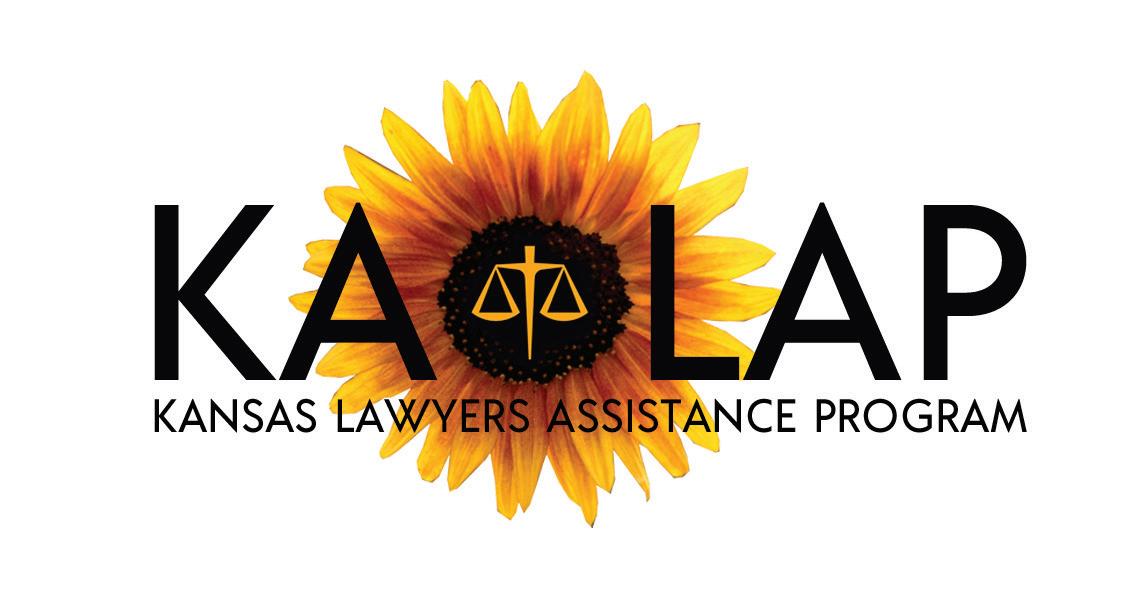
www.ksbar.org | May/June 2022 61
appellate practice reminders
KALAP Helps Lawyers Suffering from Depression • Addiction • Thoughts of Suicide Self-referral is an act of courage. Referring a colleague is an act of compassion. Call KALAP 24/7 785-368-8275


62 The Journal of the Kansas Bar Association 2022 Legislative & Case Law Institute.............................................................................................................................................................................................................................. 62 ALPS Legal Malpractice Insurance 3 Clayton Wealth Partners................................................................................................................................................................................................................................................................. 33 CLE – Compliance Deadline .............................................................................................................................................................................................................................................. 28-29 Clio Cloud Conference ...................................................................................................................................................................................................................................................................... 13 Cohen & Duncan Attorneys, LLC ........................................................................................................................................................................................................................................... 21 CoreFirst Bank & Trust / IOLTA 25 Jay Daugherty Mediation & Arbitration .............................................................................................................................................................................................................................. 5 Kansas Bar Foundation 7 KBF Ethics for Good CLE .................................................................................................................................................................................................................................................................. 11 Kansas Lawyers Assistance Program (KALAP) 61 Kansas Legal Services Pro Bono Projects ..................................................................................................................................................................................................................... 27 KLH Consulting ........................................................................................................................................................................................................................................................................................ 15 LawPay Inside Front Cover Legal Directories Publishing Co. ............................................................................................................................................................................................................................................... 9 Palmer Mediation 24 Rebein Brothers Trial Lawyers ......................................................................................................................................................................................................... Inside Back Cover Shamberg, Johnson and Bergman Back Cover advertisers index 2022 Legislative & Case Law Institute LCLI provides you with the latest case law and legislative update for this year. Registration includes a PDF of the 2022 KBA Annual Survey of Law — a $75 value! Credit submitted for 4.5 hours including 1 hour of ethics in Kansas and Missouri KBA Member: $200 | Non-Member: $245 Kansas Bar Association 1200 SW Harrison St. Topeka, KS 66612 CLE@KSBar.org 1-785-234-5696 Sessions June 9 Noon–5 p.m. June 17 9 a.m.–2 p.m. June 23 Noon–5 p.m. KSBar.org/CLE





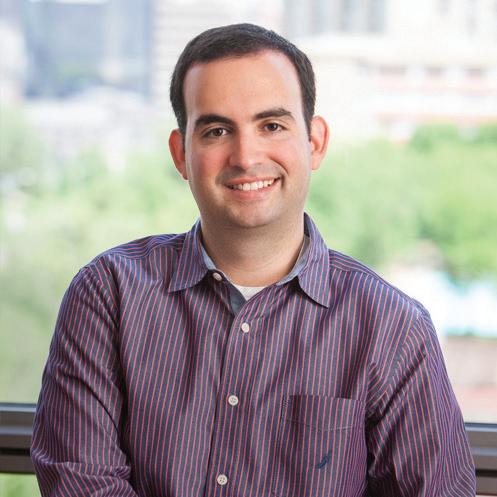


 Dave Morantz
Matt Birch
Scott Nutter
Richard Budden
Daniel Singer
Ashley Billam
Vic Bergman
Dave Morantz
Matt Birch
Scott Nutter
Richard Budden
Daniel Singer
Ashley Billam
Vic Bergman
If you have a client with a serious injury or death claim, we will welcome a referral or opportunity to form a co-counsel relationship. OUR EXPERIENCE PAYS The choice of a lawyer is an important decision and should not be based solely on advertisements. Past results are not an indicator of future results. www.sjblaw.com 816 - 474 -0004 We represent individuals and families in trucking, bad faith, auto, product liability and medical negligence cases. A WINNING TEAM FIGHTING FOR YOU AND YOUR CLIENT.
Lynn Johnson


































































































 Dave Morantz
Matt Birch
Scott Nutter
Richard Budden
Daniel Singer
Ashley Billam
Vic Bergman
Dave Morantz
Matt Birch
Scott Nutter
Richard Budden
Daniel Singer
Ashley Billam
Vic Bergman
